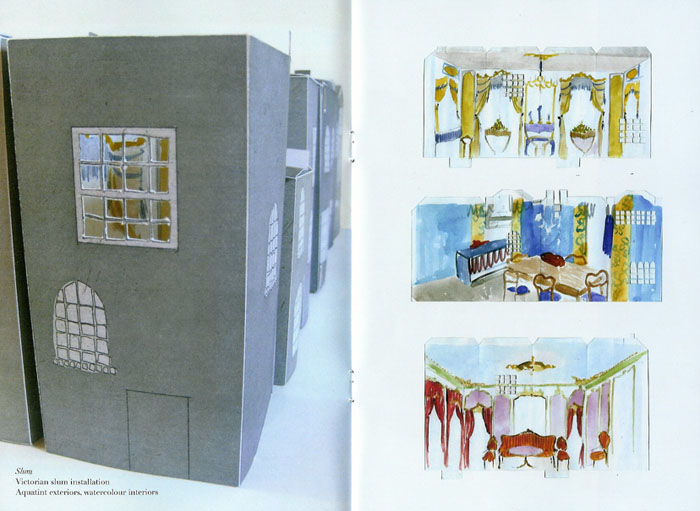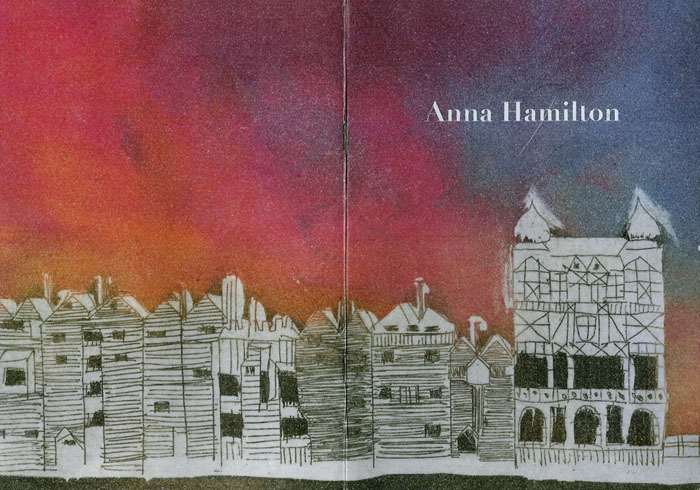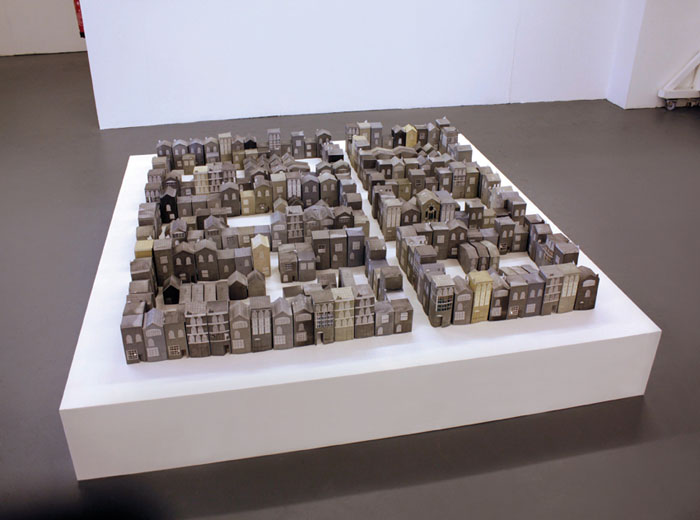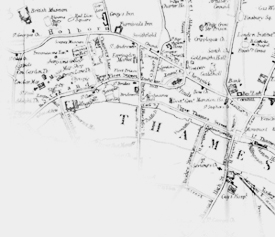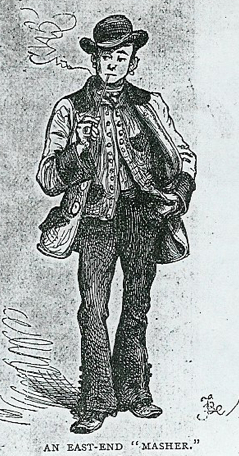 Put that fag out, and head this way to the Blackest Streets Miscellany
Put that fag out, and head this way to the Blackest Streets Miscellany
24 July 2017: Canada's debt to British pauper children — conference and petition
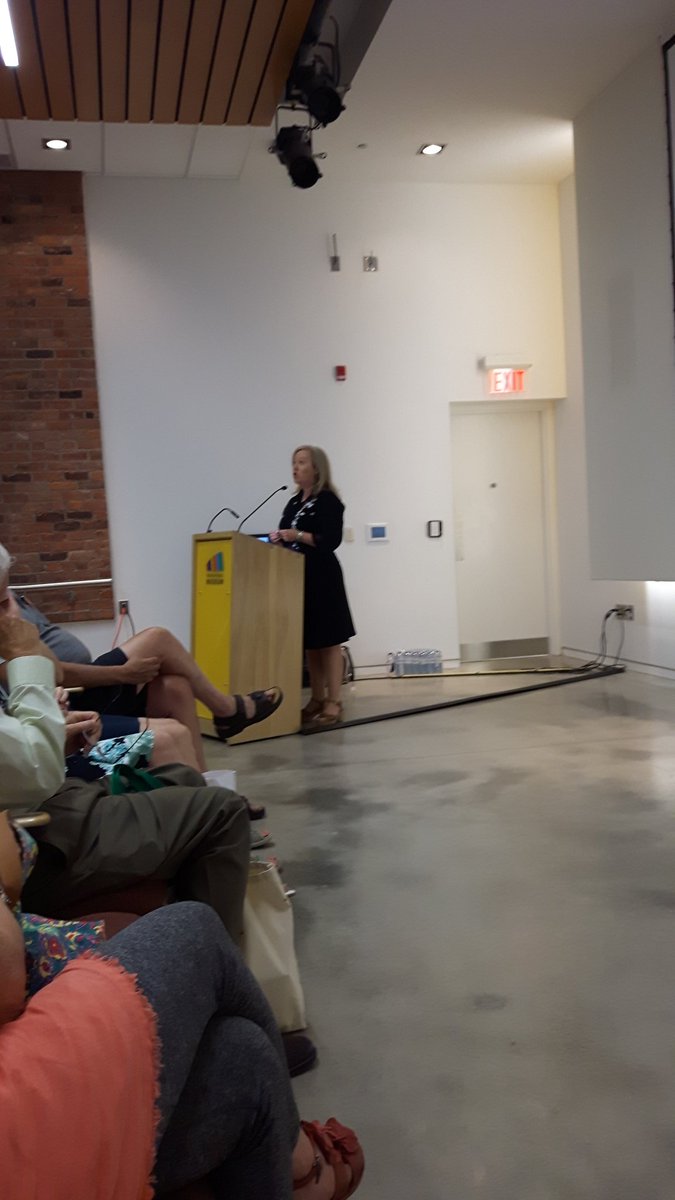

Me, left, and John Jefkins, right, talking about his father, Albert, a British Home Child emigrated to Canada
We had around 120 attendees at the British Home Child Commemoration Event at the Waterloo Regional Museum at Doon Pioneer Village, Ontario, yesterday. Lots of people who had been tracing their family trees came forward to tell me of how either a parent or a grandparent had discovered very late in their lives that they had in fact not been orphans when they were shipped out from England, but that they had had parents and siblings from whom they were forcibly separated. I heard many moving stories of how the pain of that loss carried on down the generations. Also there was often asense of shame felt by some of that older generation because the very phrase, 'British Home Child', had carried with it a stigma — of deep chronic poverty and of somehow having been exiled from Britain, the land of their birth, unwanted and unvalued in their home nation.
Many people in Britain and Canada are aware of the government enquiry and subsequent apology that was given to the British children who were shipped out to Australia and abused, exploited and neglected. While the poor treatment of many of the Canadian Home Children tended not to be on that larger, institutional scale, nevertheless, there is a growing call, spearheaded by The British Home Children Advocacy and Research Association (http://www.britishhomechildren.com/) for Canada similarly to recognise the suffering and to commit to a full inquiry and apology.
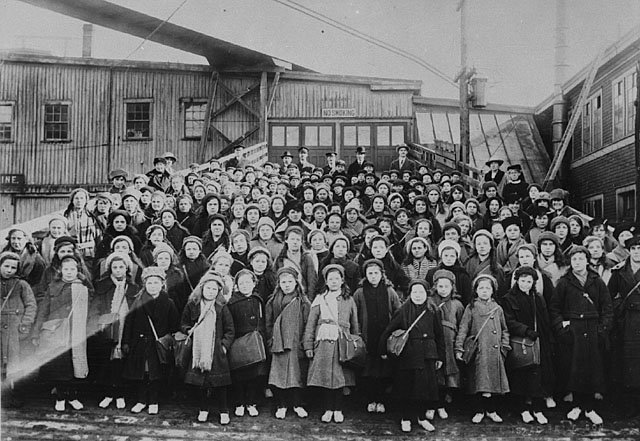
My own interest began when I was researching The Blackest Streets. Among the charity workers I came across was Annie Macpherson (pictured below), who ran refuges for street girls and boys, taught them the basics of a trade, and a basic education. I knew that she was also involved in an emigration programme that shipped some 14,000 London children out to Canada to work as farm labourers and domestic servants. But it wasn't until a reader contacted me via this website to say that he was the descendant of one such mother, a Bethnal Green widow, who had had to give up one of her 8 children as she couldn't afford to keep him, that I realised the real impact of families being broken up and children sent to Canada from London.
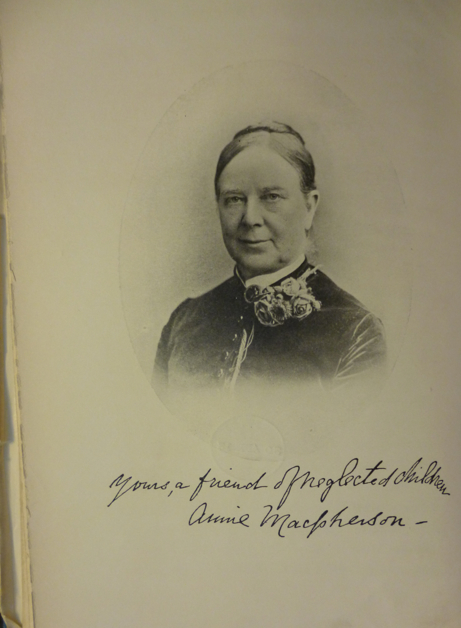
This correspondent of mine wished to remain anonymous, as he stated that the pain of the break-up of the family and the forcing overseas of one of its members had echoed down the generations — affecting emotionally both his grandfather and his father, and so, indirectly, himself..
In total, it is estimated that about 100,000 poor British children were sent out by various agencies to Canada between the late 1860s and the middle of the 20th century. Canadian farmers needed labour to be able to continue clearing and cultivating the land; it was massively labour intensive. Hearing that there were around 30,000 homeless street children in London; plus another 60,000 children in British workhouses, they sought to have these children sent over to help out.
The children worked unpaid till the age of 18, although their board and meals were provided. What fascinates me is the clash of ideas and of motivations. On the one hand, people such as Annie Macpherson wanted only the best for poor London children, and spent their own money on these emigration schemes; on the other, their naivety was pretty unforgiveable and even when clear cases of assault, neglect, abuse and overwork were shown to them, they preferred to believe that everything would be alright and that things would just sort themselves out.
A government inspector, Andrew Doyle, came out from London to try to follow up on some of the children. He travelled across Canada for 6 months in 1875 and found many worrying cases of neglect and abuse. Although the Canadian experience does not seem to have been so uniformly awful as that of UK children sent en masse to Australia, there nevertheless is enough evidence of hardship to warrant a large-scale hearing into the case. Most people have little awareness of these stories of what the British Home Children went through and the emotional cost.
I've written more about Annie Macpherson here: http://spitalfieldslife.com/2015/11/25/annie-macpherson-the-gutter-children/
6 minutes of me on the radio talking about the British Home Children:
http://www.cbc.ca/listen/shows/the-morning-edition-k-w/episode/13478061
Last week Gordon Brown re-involved himself in the issue of UK child emigrants to Australia. More on that here::
http://www.independent.co.uk/news/uk/home-news/child-sex-abuse-inquiry-jimmy-savile-forced-transportation-deportation-to-australia-gordon-brown-a7852041.html
A petitition to Prime Minister Justin Trudeau is here: https://www.change.org/p/open-letter-to-the-right-honourable-prime-minister-trudeau
9 December 2016: Lists of the Lost – excerpts from the Booth Notebooks in the LSE Library
Below is a sample of the information I took from Notebooks B/77 and B/80 in the Booth Archives at the London School of Economics. The notebooks are the combined work of Reverend Arthur Osborne Jay of Holy Trinity, Old Nichol Street, and his curate, Rupert St Leger, who did the original door-knocking and questioning, using Charles Booth’s own questionnaire. The surveying was undertaken in the Old Nichol slum, East London, between February 1889 and March 1890.
There’s something relentless about lists; detail upon detail is piled up here – a catalogue of misery, made all the more powerful by the cool, disinterested nature of the inquirers. In the Nichol, many residents chose not to answer their door; others objected to being questoned about their financial circumstances and their health problems. Hence the gaps, and the lack of detail apart from names, for some of the multiple-occupancy buildings. Sometimes, the resident did invite the visitor in, for an extended interview. People were dying slowly, killed by poverty; yet no one on the Booth survey team thought to interview the landlords, leaseholders, sweat-shop workers, and the tiers of the population who made a good living from high rents and low wages.
These and all the other notebooks (46 for the East End alone) used to compile Booth’s 17-volume Life and Labour of the People in London can be found in the LSE Library. Much of the survey work can be found on the LSE’s recently relaunched Booth website http://booth.lse.ac.uk/map/13/-0.1191/51.5009/100/0
Notebook B/77
New Nicholl St [sic] May 1889
No 1
• Freeth, elderly widowed mangler of 37 yrs in the Nichol. ‘Very reserved.’
• Burks, widowed mantle maker, 2 children, earns 5 shillings a week but sometimes 3 and a half shillings. ‘Rats infest the room by daylight.’
No 2
Moleman. ‘Jews. Very friendly.’
No 3
• Clapp, widow, five children, washerwoman, and her father in his 70s, a basket weaver. ‘Very civil and poor.’
• Knight
No 4
• Bates. ‘Child came to door and said “Not today” to visitor. Grandmother lying down’... On second visit, ‘very poor indeed... upholsterer, wife and five children, two with measles, wife weakly.’
• Wykes, silk winder for Vavasseur [silk merchants], widow, very ill, 2 children in the orphanage. She is about to go into hospital.
• Seaward
No 5
• Dixon, an old established shop premises.
• Leagers, an [alcohol] abstainer, ‘wife a noisy, vulgar woman.’
No 6
• Litmann, wife and seven children. ‘Very decent.’
• Ellis
Pub — The Admiral Vernon
No 7
• Noble, a widow, in bed on the floor with rheumatic gout, does needlework when she can, one son disabled through accident, another at a sawmills, one grandchild with them, been here nine years, ‘very poor.’
• Church, a hawker
No 10
• Spall, car-man, in bed with rheumatism, wife and 8 children, only one at work, one very ill, ‘not expected to live’. Here 9 years, ‘Have been assisted medically.’
• Bordon, French-descended weavers, elderly man and wife both at work at their looms.
No 11
Jonas, watercress-seller in summer, sweep in winter, wife and 5 children.
No 12
• Hall, works in the brandy vaults, has a grown-up son at the Docks. ‘Were all having tea very comfortably by a large fire, and the visitor joined them. Well-disposed and intelligent.’
• Wells. Gout and unable to work. Wesleyan.
• Richardson
No 13
Banks, upholsterer, has whole house.
No 14
Cork
No 15 Vavasseur & Co, silk merchants
No 19
• Schenks. Landlord is Hacker.
• Hageley
No 19
Clark
No 20
• Berry
• Wyatt
No 21
• Hardy
• Bullen. Newly arrived.
No 22 is a public house, The Five Inkhorns
No 23
• A corner shop
• Vogel, German baker with an English wife.
No 25
• Hoy
• Burman, a 75yr old weaver, twice married, no family, in fair health and working at his loom. He says that Vavasseur employs 40 weavers.
No 26
• Davis and rheumatic wife, with five children. ‘Wretched home – windows broken, floor rotten, walls crumbling, eaten alive with bugs, chimney smokes fearfully. Furniture consists of two bedsteads, a table with a very ragged cloth on it and two or three other necessaries. Rent 3 shillings and ninepence. Are in arrears and pay off 3d weekly back rent. Mrs Thompson owns the house and is very strict regarding rent. Puts their goods in the back yard.’
• Jones, in first floor front. ‘Paints Christmas card sheets. Had 40 dozen to do. Takes him 2 days, from 9am to 11pm and only gets 2 shillings and 6d for them, out of which he finds his own paints, costing about 7d. Works for Taylor & Smith of Brick Lane. Widower aged 65. No children. Lives alone. Here 3 years. Rent 2 shillings and ninepence. A vile room. Ceiling quite black.’
• Corsham, a bill poster. Been here 7 years. ‘Wretched room – paper hanging from ceiling in ribbons. 2 large holes in the floor, very smoky. Rent 4 shillings – owes 3 months.’
• Barr, slippermaker, gets 4 shillings per dozen, and they sell at 4 shillings 11d a pair at least. It takes himself and his wife 16 hours to do a dozen pairs, and earns about 22 shillings a week, working 16 hrs a day. ‘Wretched room – walls and ceiling damp and mouldy and room full of dense smoke. Parts of ceiling fallen away. Very poorly furnished. Rent 3 shillings and 6d.’
No 27
• Collins
• Lillie
• Giles, a widow who makes stokers’ mitts. ‘A vile room – cannot have a fire on account of smoke from chimney.’
• Stearbridge
No 28
• Taylor
• Graystock. Flower-stand maker. Total abstainer. Wife drinks.
No 29
Skinner, wood chopper; wife recently delivered of a baby and very weak, works at fancy-box-making when able. ‘Wretched home – 1 bottomless chair and a bed almost the only furniture.’
No 31
Cleeve, brushmaker, 7 children, rheumatic, works for [John] Grimwood [of nearby Church St].
No 32
• Barnes, man and wife, ‘friendly.’
• Ball
• Top floor ‘occupied by a large family, 2 men, and six women and girls. Saw two young men and some girls. One of them said his name was Stevens, and that he would be at Father Jay’s club on the Wednesday. Is said to be a fighting man. Girls are flower girls. Rooms filthily dirty and other lodgers complain of their dirty and noisy habits.’
• Lampey
Nos 34 and 35
Sisters of the Church, and Mrs Hutton, their housekeeper. [The Kilburn Sisters’ Orphanage of Mercy Mission Rooms/soup kitchen.]
No 36
• Wall, blind, deaf, neuralgic widow, run over 4 years ago; and her family. Some are in the workhouse.
• Akens
• Dudley
No 37
• Howes
• Warley, widow, belongs to the Phoenix Order [masonic lodge]. ‘Complained of the danger of Old Nichol Street and mentioned recent cases of robbery there.’
No 38
• Deakins, wife and child. ‘Very dirty room, child no boots. Expects property ... by deed of gift, he having befriended one of the partners in the Chancery suit now pending. Is to have a block of buildings if his friend succeeds in the suit. Wife showed visitor a lot of documents and a deed of gift on parchment. Man has done 17 days in Holloway Gaol for contempt of court, and has been waylaid and kicked and stabbed (according to wife) by the emissaries of the opposite party for the part he has taken in the case. Wife says the [Church of England] Sisters’ store is abused by people who beg the clothes and then sell them.’
• Warner
No 39
• Mears
• Cook, a shop
No 40
• Robinson, widow, ‘room indescribably filthy and miserable. Very dirty old woman hobbled forward and expressed her strong objection to visitors.’
• Hastings, a blacksmith.
• Archer, railway porter, ‘decent and intelligent but said to drink.’
No 41
Abbott
No 42
• White
• Woodcock
• Williams
• Hewitt
No 43
Harding, a hawker, sells oleographs in the street, trade ‘very slack...Very rough, dirty room, gets help from a mission room near by.’
Notebook B/80
Half Nicholl St [sic]
No 2
• Greengrocers
• Humphreys, ‘an old soldier. Wife Roman Catholic, has bad face, blood poisoning, decent people, get on, not good to wife.’
• Carver
• Harwood
• Pomeroy, street seller, and family.
No 4
• Jackson, ‘decent and industrious.’
• Gavigan, wife of a former optician who is now in Hanwell Lunatic Asylum as he had ‘a tendency to suicide.’
• Mrs Ashton
• Hersey, who says ‘people used to be allowed to take 3 rooms and sublet, but this was altered because the chief tenants, while exacting the rents from the subtenants, did not pay the landlord. Hersey seems a nice respectable old man.’
No 6
The Callans, ‘a bad lot... Very rough and rude. Drink heavily.’
No 7
* Knight, fancy-box-maker, ‘busy at work and very unfriendly. Woman here the same. Seems to have given visitor a bit of her mind, and spoke of his [Father Jay’s] club as a place that she should not like her husband to go, on account of the “sparring” [boxing].’
No 18
Strahan’s [lettings agent] office. He says it’s hard to get the rent out of them, and they have no goods worth seizing. ‘Very nice little man. Had a large loom in his room. Lives in King Edwards Road [Hackney].’
No 20
• Coquard, weaver for Vavasseur, over 80, lived there since 1849, the year of the cholera, and recalls the ‘horror of that time, when every house in the street had its shutter up.’ Huguenot descent. Breathing hard. Born in Bethnal Green, brought up in Spitalfields. He remembers the long weavers’ rooms being divided up to make more rooms to let. His second wife died 5 years ago, ‘she had deserted him. Neighbours say his first wife hung herself in the room in which he still lives.’
• Sestar, an engineer, he and his son, a boxer, both belong to Father Jay’s club.
No 24
• Parsons, a hatter, whose wife, 67, has been laid up for three years with rheumatic gout, ‘a very talkative, cheerful woman although suffering with great pain. Says [Reverend] Spurgeon has same symptoms as herself, and so had Lord Palmerston... The house belongs to Mrs Lock (widow) who lives in the court. Rents collected by an agent.’
No 26
• Watts, a shellfish-stall-holder in Shoreditch, also a chestnut stand. Wife bed-ridden by bronchitis and heavily pregnant. ‘Wife’s first husband used to stand in front of Shoreditch Church and open carriage doors for wedding parties. Well-known character. Wife’s great grievance seemed to be the way in which her last child was buried by a local undertaker. Charged her 30 shillings; owed him 8 shillings of it and was not inclined to pay it because of inferior style. People made remarks.’
No 28
• Howson, an elderly cabinet maker and cousin of the late Dean Howson. From Appleby in Westmoreland and came to London aged 25 after tramping 300 miles through Britain in search of employment, for 36 weeks, once walked 60 miles in 12 hours. Is an Oddfellow, and was also a Forester, and got travelling pay from both orders. He presents their card to local officer at each place and gets a 1d a mile allowance. Is now a convert and regular churchgoer. Wife rheumatic, also religious.’
No 32
Courtney, a Frenchman, objects to [Father] Jay’s club on account of ‘sparring – says many others do so too.’
No 38
Usher, blacksmith, ‘man and wife both drunkards. Room in a most filthy condition – stink dreadful... sheets black. Man in bed when visitor called, recovering from effects of drink. 2 dirty little children playing about.’
7/12/2016 A contents page I devised for Charles Booth's Life and Labour of the People in London
I put this together for some of my students, to help them to navigate their way round the daunting-looking 17 volumes of Charles Booth's Life and Labour survey. It's a labyrinthine series of tomes, but once cracked, this is the most informative data on London at the end of the 19th century that you'll ever find.
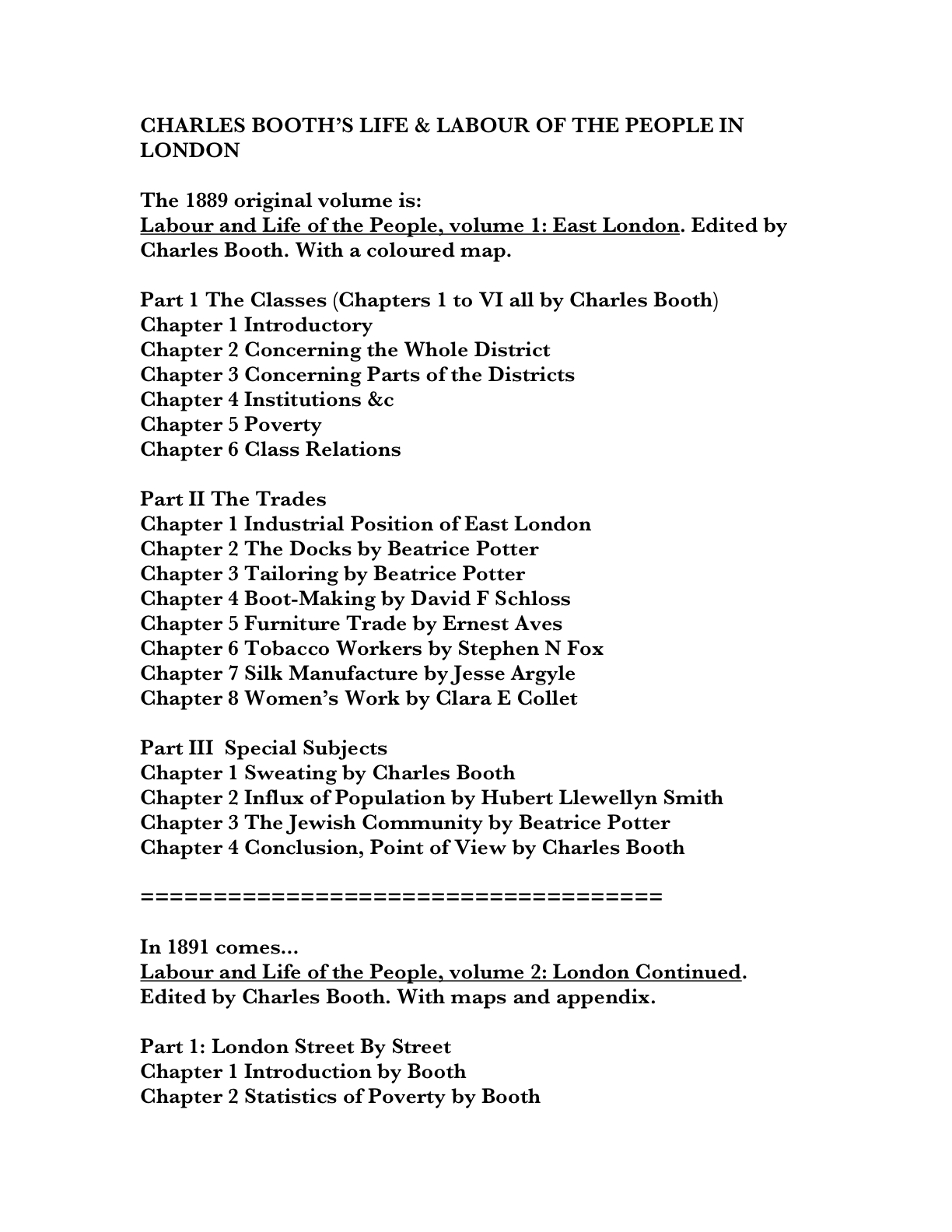
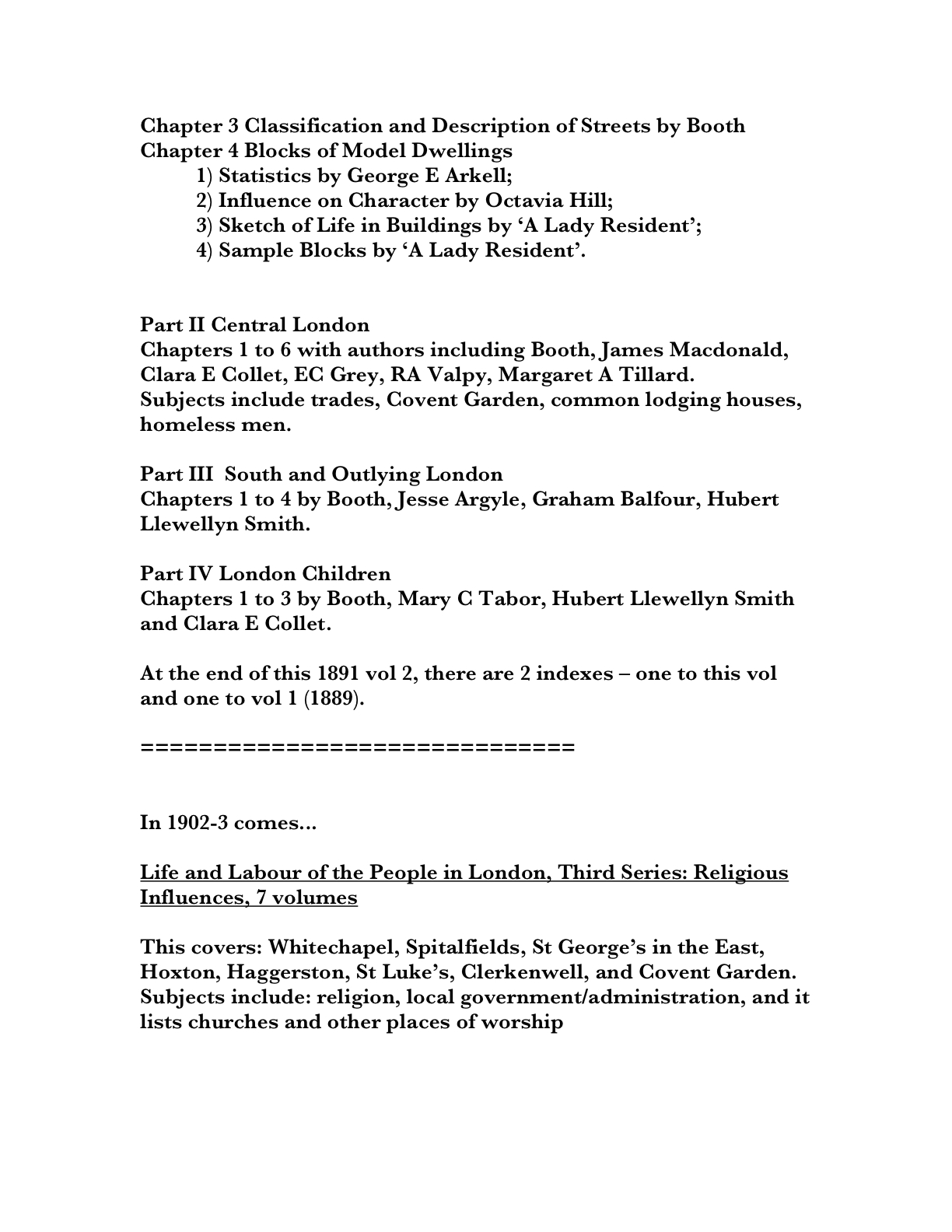
28/11/2016 My review in The Lancet of the 'Feeding the 400' exhibition at the Foundling Museum
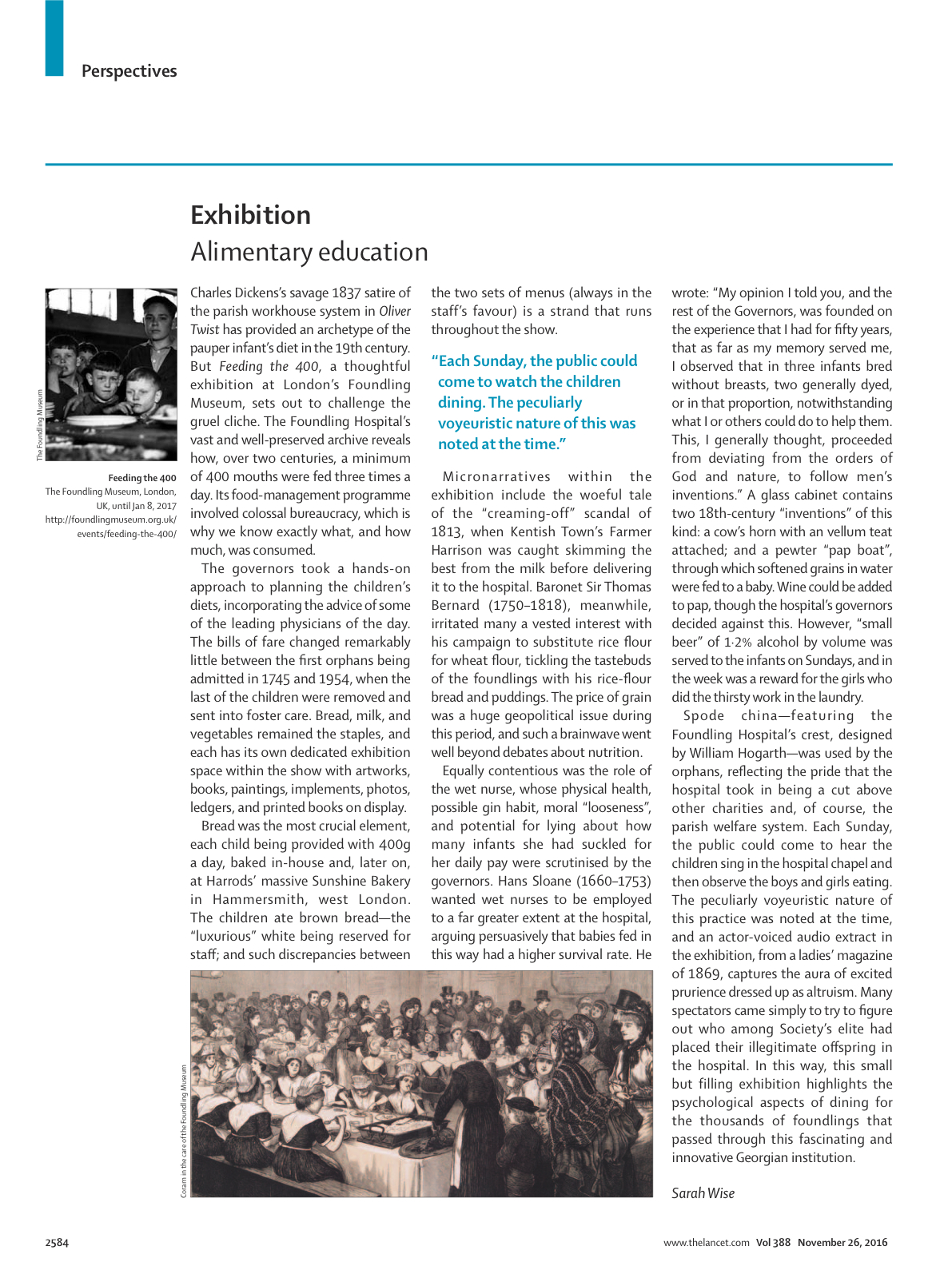
17/10/2016 Britney — the Bethnal Green years. Guest post by Alan Homes
Alan, who lives in Canvey Island, Essex, and who has several ancestors who lived in the Old Nichol, got in touch with me to point out that Britney Spears is another ‘child of the Jago’ — someone whose forebears can be found in the East London slum. Below, he reveals the results of his researches.
‘As anyone interested in pop music will know, Britney Spears is one of the best-selling artistes of all time, having sold 100 million albums and 100 million singles worldwide. It is reported that Spears’ earnings between 1998 and 2016 are a staggering US$670 million.
‘What has this to do with the Old Nichol? Well, Britney Spears’ great-great-grandfather, James Lewis, was born at 8 Old Nichol Street, Bethnal Green, on 22 September 1872 to an impoverished family of former weavers.
‘Britney Jean Spears was born 2 December 1981 in McComb, Mississippi, the second child of James Parnell Spears (born 1952) and Lynne Irene, nee Bridges (born 1956). Her British connection to the Old Nichol comes via her maternal line. Her maternal grandparents were Barney O’Field Bridges (1919-1978) and Lilian Irene Bridges, nee Portell (1924-1993). Barney Bridges was presumably a US serviceman in the Second World War as he married Lilian Portell at Hendon, north London, on 16 March 1945. Lilian’s surname (Portell) is a corruption of her Maltese grandfather’s surname, Portelli.
‘Lilian Portell was born in Tottenham, north London, the daughter of George Anthony Portelli (1898-1953) and Lilian Esther Portelli, nee Lewis (1897-1980), who had married at Tottenham on 29 July 1923 — Lilian was Britney’s great-grandmother. She was born at 10 Wellington Row, Bethnal Green, on 14 December 1897; and Lilian’s father, James Lewis, who worked as a barman, came from the Old Nichol.
‘James Lewis (b.1872) was the son of another James Lewis (b.1849) and Sarah, nee Isaacs (born c1850). Their marriage entry shows that James Lewis worked as a fishmonger, and gives his address 9 Old Nichol Street. He further stated that he was the son of Joseph Lewis, weaver.
‘Sarah Isaacs lived at 12 Nichol Street, her father (James Isaacs) was also a fishmonger. James signed the marriage register with a strong hand, proving he was literate; Sarah, however, merely made her mark.
‘James Lewis was born at 17 Half Nichol Street on 19 January 1849. His parents were Joseph Lewis and Mary (nee Burn). Joseph worked as a weaver, who was also literate, though Mary was not. The 1851 census finds the Lewis family (recorded as Lewes) residing at 17 Half Nichol Street, where 36-year-old Joseph was described as a "Silk Weaver HL" (handloom). Mary was 35, and their children were listed as Mary (age 12, born Spitalfields), Emma (age 10, born Bethnal Green) and James (age 2, born Bethnal Green) (HO107 / 1539 / folio 65 / page 23).
‘They had at least one other child — Edwin Lewis, born 12 July 1852 and christened at St Philip’s, Mount Street (today’s Swanfield Street) on 8 August 1852. The family address at the time was again 17 Half Nichol Street, with the father’s occupation stated as "weaver".
‘Joseph Lewis died some time between 1851 and 1861. The family were still living in the Nichol at the time of the 1861 census, with widow Mary Lewis (now employed as a basket maker) and her children James and Mary now residing at 9 Old Nichol Street (RG9 / 250 / folio 4 / page 7).
‘So, there you have it. People on a subsistence wage in Bethnal Green during the 1870s, with their great, great, granddaughter earning an astronomical U$670 million a mere 140 years later. Just shows what a bit of hard work (and a mighty lot of luck) can do for you!’

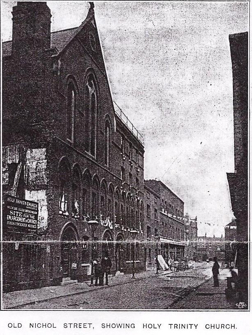
Old Nichol Street, above right, photographed circa 1888. Britney's ancestors lived at numbers
8, 9 and 12
and also in Half Nichol Street, between the 1850s and the 1880s.
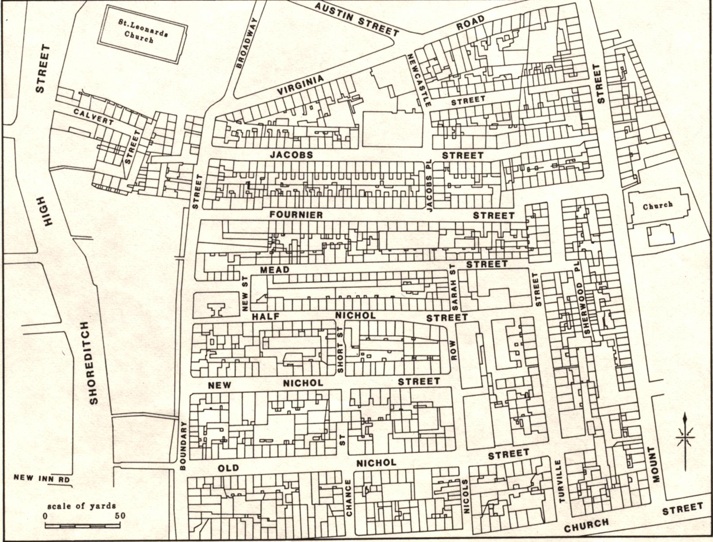
27/5/16 Previously unpublished picture of Dorset Street, Whitechapel, 1895
I accidentally caused a bit of a stir among certain sections of the Victorian East End local history scene when I tweeted a low-res version of the photo below. I’ve now obtained a better-quality scan of this 1895 shot of Dorset Street, Whitechapel, taken by a not-well-known photographer, William H Groves, for an even-less-well-known periodical — the short-lived New Budget, a general interest magazine that featured photographs and reports from all over Great Britain. East End historian Paul Begg alerted me to the photograph’s rarity and apparent significance, which prompted me to obtain this better version. (Though it has to be said, the original paper of the magazine hasn’t aged well, so this image isn’t of triffic quality, either.)
Massive thanks to the US Library of Congress, who supplied me with this scan.
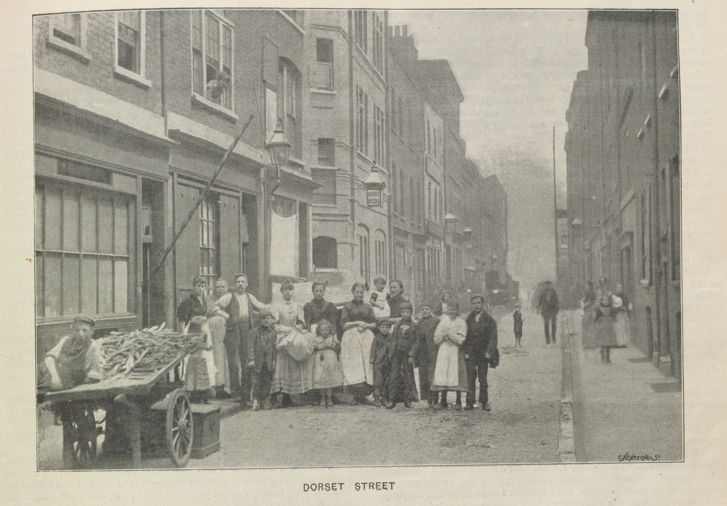
Groves also shot this pub, which may (or may not) be the one that stood on the corner of Dorset Street and Crispin Street, which was called (with no trace of irony) The Horn of Plenty.
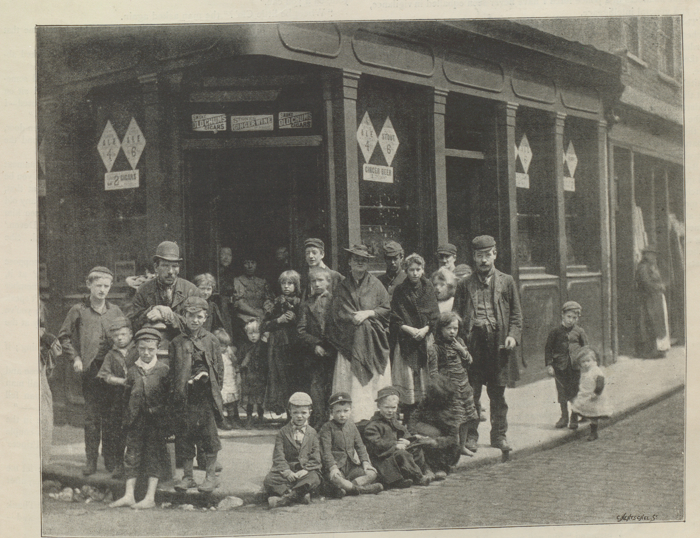
US Library of Congress
26/1/16 Getting lost in ever-changing London
One of Karl Marx’s close associates, William Liebknecht (1826-1900), was absent from London between 1862 and 1878 (he had returned to his native Germany). On his return, he was astonished at the amount of change to the physical fabric of the capital that had taken place in his 16 years away. Whole streets, buildings and even districts had disappeared as much of the Georgian city was demolished to make new for a metropolis that better expressed mercantile greatness and imperial power.
He wrote: ‘Was this the city in which I have lived for nearly half a generation and of which I then knew every street, every corner?...What revolutionary changes in the great modern cities. It is a continual uprooting... And a man starting today from a modern great city on a tour of the world will not be able to find his way through a great many quarters. Streets gone, sections disappeared – new streets, new buildings, and the general aspect so changed that in a place where I formerly could have made my way blindfolded, I had to take refuge in a cab in order to get to my near goal.’
Quoted in Marx in London by Asa Briggs and John Callow (2008).
17/4/15 A Poem of Urban Pollution, 1850
This ditty about the deteriorating atmosphere in London appeared in Household Words, 25 May 1850 – the magazine edited by Charles Dickens. It’s not by him, but it does match his fury at the failure of the authorities to clean up the fatal conditions in London. Note that it was written after the closure of the central London graveyards to new burials, but ‘miasmatic’ nastiness had not abated by 1850.
Spring-Time in the Court
‘I used to throw my casement wide
To breathe the morning’s breath;
But now I keep the window close,
The air smells so like death!...
Why are we housed like filthy swine?
Swine! They have better care,
For we are pent up with the plague,
Shut out from light and air’
17/12/14 Myring Place, Bethnal Green — 2 photos and a drawing
This tiny court of nine houses was known variously (even in official documents and maps) as Myring or Myrings or Mirings Place. It stood on the north-east edge of the Old Nichol slum, approximately where the small 1970s houses are today at the top end, eastern side of Swanfield Street.
The London County Council described it as ‘old, decayed and with no back-light or through-ventilation’. Sunlight and fresh air were the prerequisites of healthy living, the wisdom went; and so Myring Place’s days were numbered.
Residents of the court in the early 1890s included Alfred Cook, a labourer; blind James Schofield; Thomas Wilkins, described as a housebreaker; John Sage, a hawker; George Cook, ditto; George Barracks, no trade given; Thomas Lampey, carpenter; James Edwards, a shovel maker; and an elderly couple called Castle, who were living on charitable assistance.
The photographs below were taken for the Mansion House Council on the Dwellings of the Poor, a campaigning body, and were published in their Report for the Year Ending 31 December 1890; they seem to have been taken on a rainy and foggy day. Note the huddle of youngsters in the corner; and the upturned costermonger barrows. The illustration was in the Daily Graphic newspaper, edition dated 3 November 1890.
The London County Council bought up and demolished the toxic court, and built Streatley Buildings (now themselves demolished) on their site. (A pic of Streatley can be found below, at blog post dated 30/4/13.)
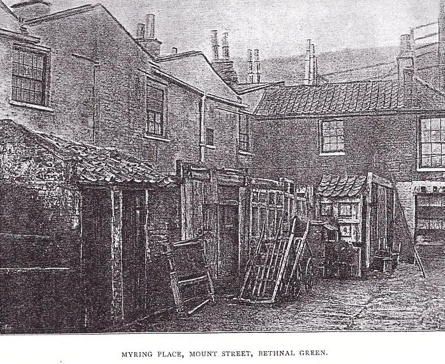
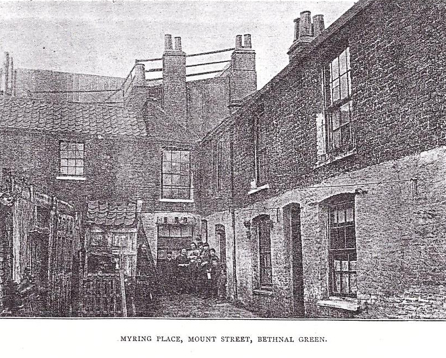
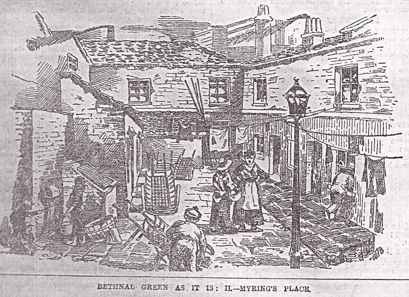
26/11/14 Ice-Cream — Again. . .
A few posts below (at 6/7/14) insanitary goings-on at a Clerkenwell ice-cream depot were revealed. Now here’s a broader, pan-London follow-up investigation, as published in Public Health magazine. Grossly unfair on guinea pigs.
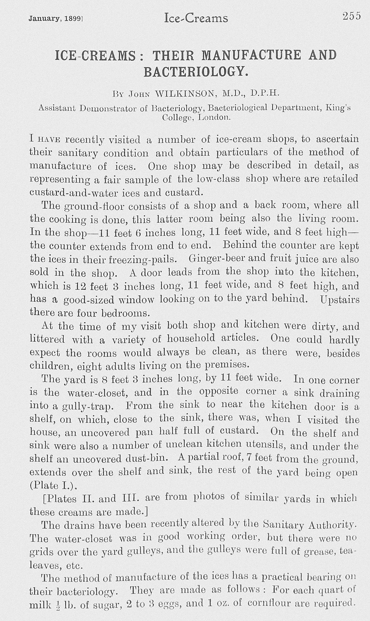
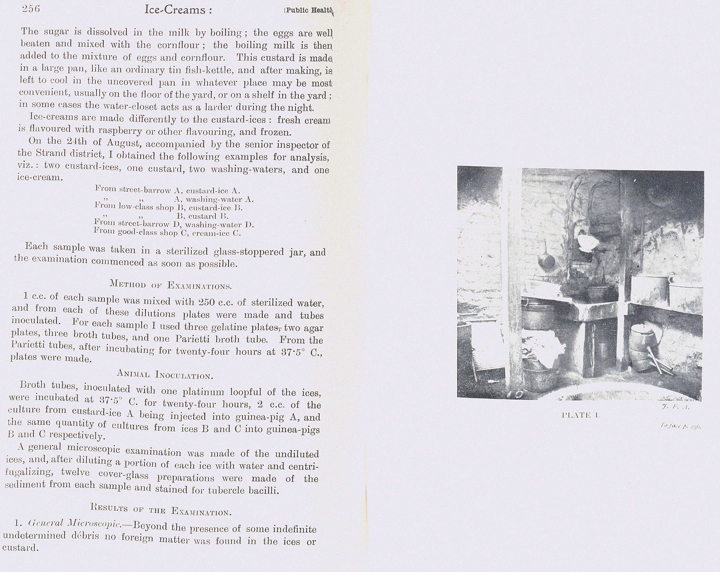
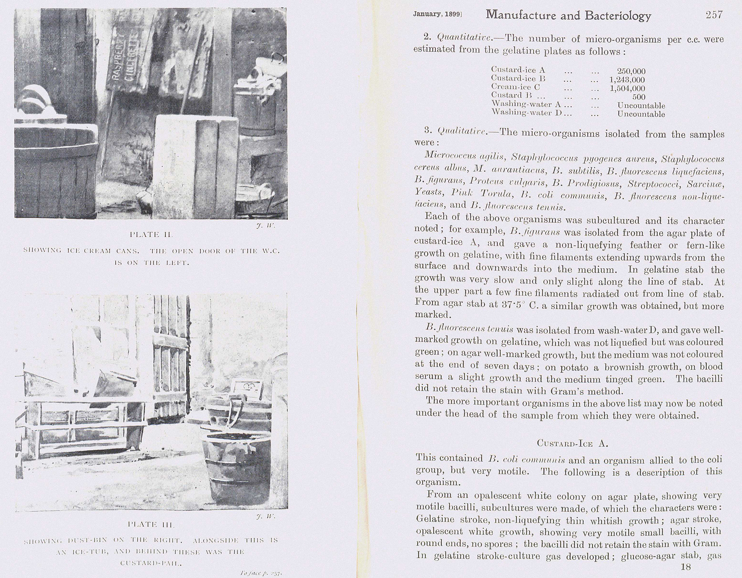
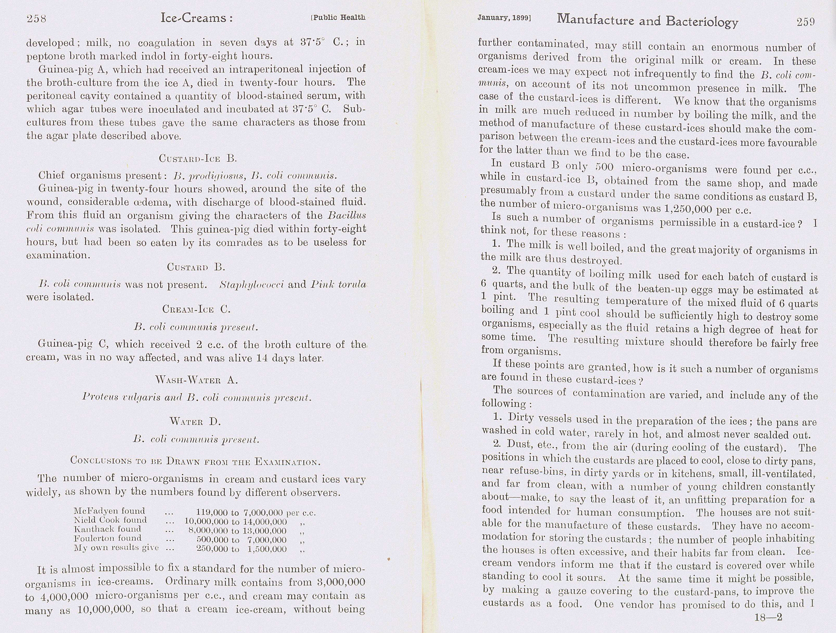
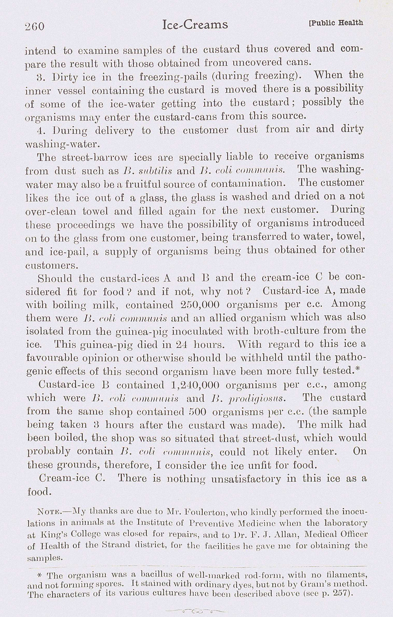
11/11/14 As hard as Charity: the ‘Geologists’ of Bethnal Green, 1887
At a meeting of the Bethnal Green Board of Guardians of the Poor (ie the local welfare office), two vicars objected to the harshness of the regime that required unemployed men to break rocks in the parish stoneyard in return for financial assistance.
This report of the Guardians’ meeting appeared in the 5 February 1887 edition of The Eastern Argus & Borough of Hackney Times newspaper, and was entitled, The ‘Geologists’ – a wry name for the poor fellers at the blunt end of the Poor Law at a time of rocketing unemployment:
‘THE “GEOLOGISTS”
‘The Reverend Mr Finch protested against the cruel employment of men for breaking granite. It was, he said, unproductive labour, and he did not care about accepting the tender for granite now before the Board. Such work was inhuman and brutal. Many of the men accepted it because they had long been out of work and were not half-fed. The Board ought to find some other kind of labour.
‘The Reverend Mr Cox said some of these poor men had to do the work without having any dinner, having nothing but a pipe of tobacco to stay their hunger. To expect such men to break hard granite was inhuman.
‘It was resolved, however, to accept the tender of Mr Fenning for 250 tons of best blue Guernsey granite at 8 shilling 3 pence per ton.’
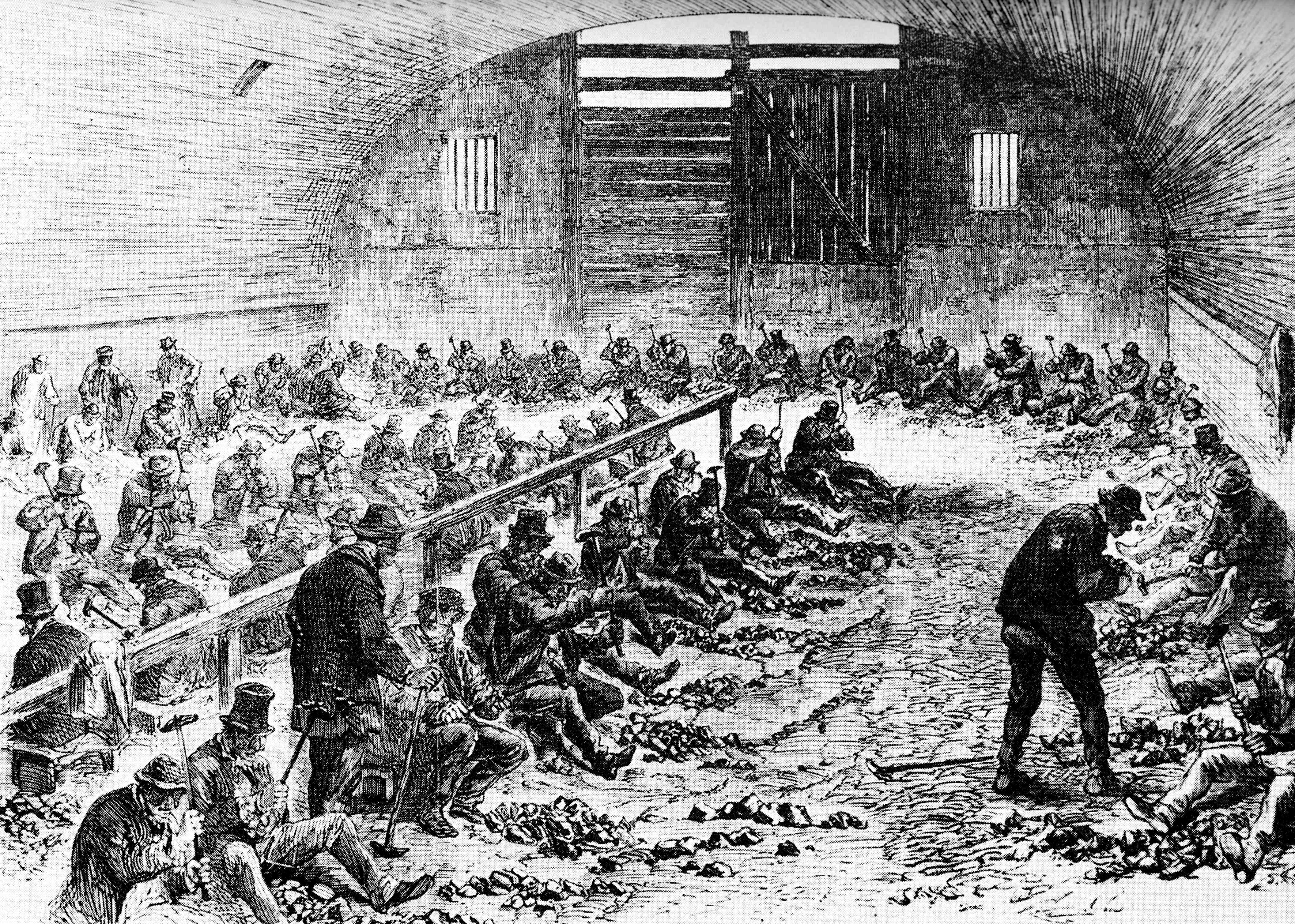
With thanks to Stefan Dickers, Archivist, Bishopsgate Institute Library, for the image of the Bethnal Green labour yard, above.
16/10/14 The blackest streets of Somers Town, in the 1920s
These pictures are from the book Ten Years in a London Slum: Being the Adventures of a Clerical Micawber by High Church Anglican priest Desmond Morse-Boycott. Boycott joined a brotherhood attached to St Mary the Virgin, Seymour Street (today’s Eversholt Street), Somers Town, just east of Euston station, in the 1920s, before much of the neighbourhood was demolished by the London County Council for social housing. This was to be one of the LCC’s grand successors to the Boundary Estate (see various stories below).
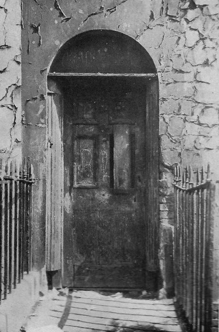
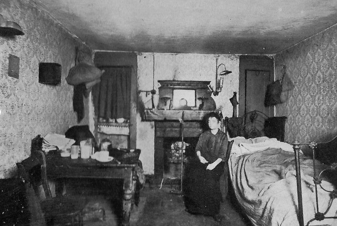
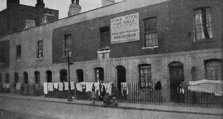
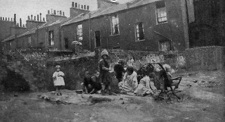
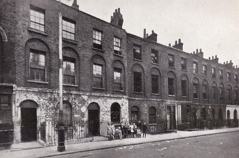
Below: the priests laid on charity meals for local children, a crèche, and a small basement school/workshop. In the mother-and-toddler photo are Father Basil Jellicoe, on the left, and Father Percy Maryon-Wilson on the right. For further information on their slum work, see
http://www.londonremembers.com/subjects/father-basil-jellicoe
http://www.camdennewjournal.co.uk/archive/f091003_2.htm
This Flikr site, meanwhile, has some wonderful pics of Percy Maryon-Wilson and other Anglo Catholic priests https://www.flickr.com/photos/61357634@N06/5585674049/in/photostream/
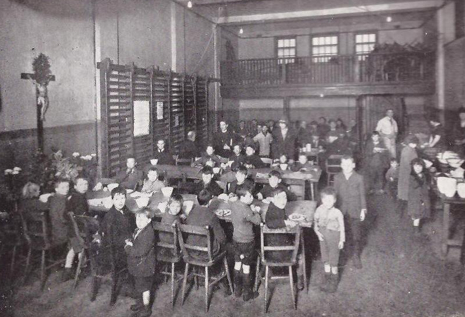
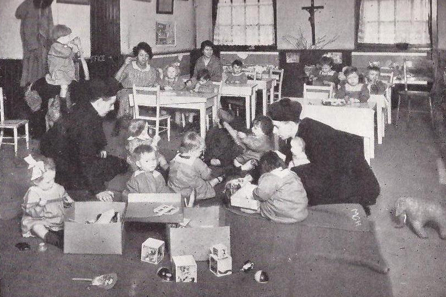
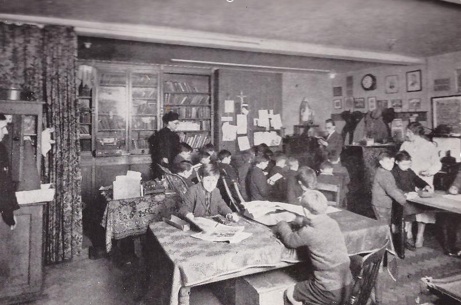
And finally, below left, I hope
I’m right in identifying The Polygon, the very unusually shaped late-Georgian housing development (where Harold Skimpole lived, in Bleak House); plus, on the right, the house in Johnson Street where Mr Micawber lived in David Copperfield.
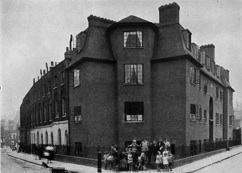
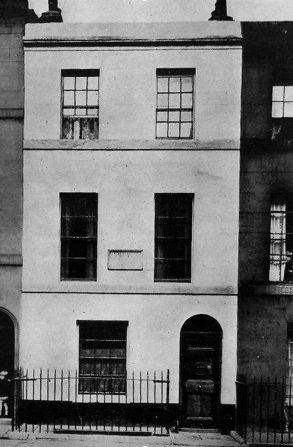
24/8/14 Come, tell me how you live (2): the occupations of the Old Nichol's residents
The London County Council surveyed the people of the Old Nichol in 1890, just as the Council was coming to a decision to demolish the slum in its entirety. The occupations given are those of the head of the household; the Nichol had a higher-than-average number of female-headed homes, which is why char-ring and dressmaking, for example, feature among the trades.
The second column numbers the adults connected with the main breadwinner (spouses, elderly parents, in-laws and so on), who may well have been in employment too (or were earning pin money), but who were to some extent dependent on the person with the named occupation; ditto the children, in column 3, many (perhaps most) of whom will have had jobs.
Many of the workers were artisans, manufacturing high-quality textiles and furniture in their homes, which had to double as workshops. These kinds of specialist trades (japanning, upholstery, marble masonry etc) were facing pressure from mass-market, ‘slop’ manufacturers, and de-skilling was taking place, with consequent downward pressure on wages.
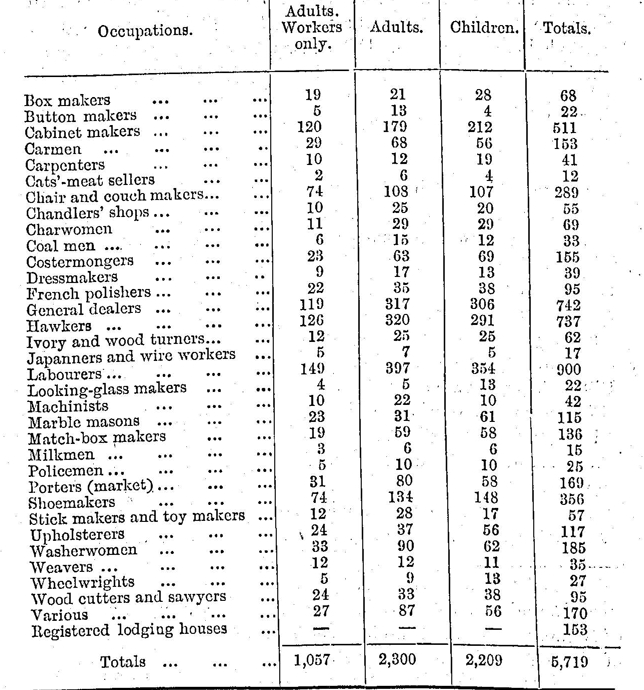
20/8/14 Come, tell me how you live (1): the occupations of London's first council tenants
The LCC surveyed its social housing tenants in 1899, 10 years after the Council came into being. This is the table that shows who was living in its first blocks and estates.
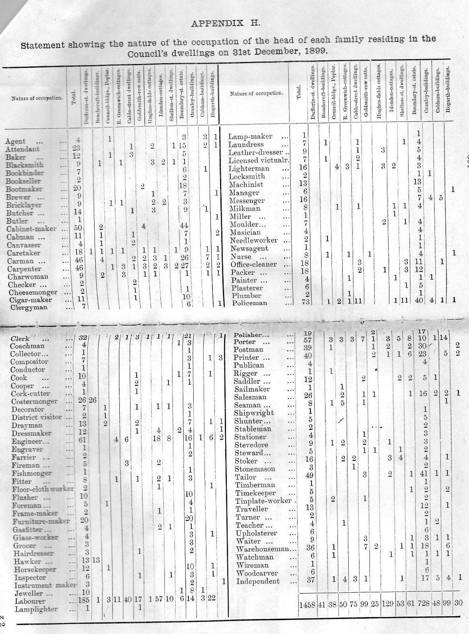
30/7/14 The vicar in the attic
So we said below (12/1/14) that no picture of Reverend Robert Whatwood Loveridge had ever been found. And then Richard Read goes and finds one among his late parents’ belongings. Richard emailed: ‘The photo was used as backing behind two certificates (for swimming and issued by the London North Western Railway Co) framed by my late father in the 1930s. Whilst my father died nearly 14 years ago the framed certificates remained in the family home’s loft until it was cleared four years ago following my mother’s death. It is only now that I have had time to look more closely at some of the items removed.’
Richard Read is not related to Reverend Loveridge but his parents were brought up in Bethnal Green in the early 20th century, as he explains in his blog post ‘Picture Perfect’ here http://thereadrovers.wordpress.com/
The reverend’s descendant, Peter Must, was delighted to be told this, and Richard Read has been a real gent and handed over the photograph to the Musts without even waiting to be asked. They are beyond thrilled.
Kevin Scully (‘Rev Kev’), present incumbent of St Matthew’s Bethnal Green, very kindly put Richard in touch with me. Thanks Rev. http://www.kevin-scully.com/about.html
6/7/14 Do you want sprinkles with that?
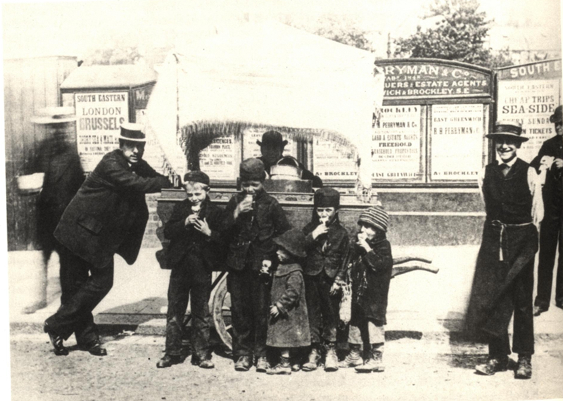
In 1895, at the prompting of the Medical Officer of Health for Islington, one Dr Klein made a bacterioscopic investigation of ice creams sold from barrows. Dr Klein visited one site of manufacture, in the Italian community on and around Saffron Hill, Clerkenwell. Microscopic examination of melted ice cream samples there showed traces of human excrement, a bacillus believed to exist only in the human gut, human skin cells, snot, lice and their eggs, and human hair.
In his report, Dr Klein blamed the ‘beastly habits’ of the vendors and the filthy conditions of manufacture. He voiced his fury that there was in law no requirement either to register or to inspect premises where food was prepared. He repeated his many previous calls for parliament to extend the London County Council’s powers to cover this.
Source: ‘Report on the Sanitary Condition and Vital Statistics of the Parish of St Matthew, Bethnal Green, During the Year 1895’ by George Paddock Bate.
12/6/14 Old Nichol truancy again – the tale of James Monday
Violence (on both sides), the beating of children and the calling in of the police featured in some of the tussles between the London School Board and a number of parents, who resented yet more authoritarian intrusion into their lives. Mr Tomlinson, the head of the boys’ department at the Nichol Street School,
wrote in his 1879 logbook: ‘A little boy, James Monday, eight years old, was brought into the
school yard crying but refusing to go into the ranks, had to be
carried into the classroom. He then screamed, kicked and so tried to
run out that his master sent for me, but nothing would make him move
but the cane. He got four or five strokes on his back, but continuing
to scream, I removed him to my private room, when his mother rushed in
and cursed and swore and threatened to a fearful degree. With much
difficulty I got her out of the school, but a mob assembled in the
yard and street, which was only dispersed by the arrival of the
police.
‘This is the first annoyance of the kind which has occurred in the new buildings. Such interruptions were common enough in the old school three years ago; let us hope they are fast dying
out.’
Below is an illustration of a ‘B’ Meeting in progress in East London in the 1880s. At a ‘B’ meeting, parents of persistent non-attenders were summonsed to explain themselves. The next disciplinary step up was a summons to the magistrates’ court and the threat of a fine. On the plus side, a number of London magistrates disliked the London School Board and would routinely dismiss the case against a working person, or, in the case of Montagu Williams JP, pay the find himself. This, in turn, led the Board to complain that magistrates were complicit in undermining the very thing (universal low-cost, or even free, education) that would help the poor to earn their way out of poverty.
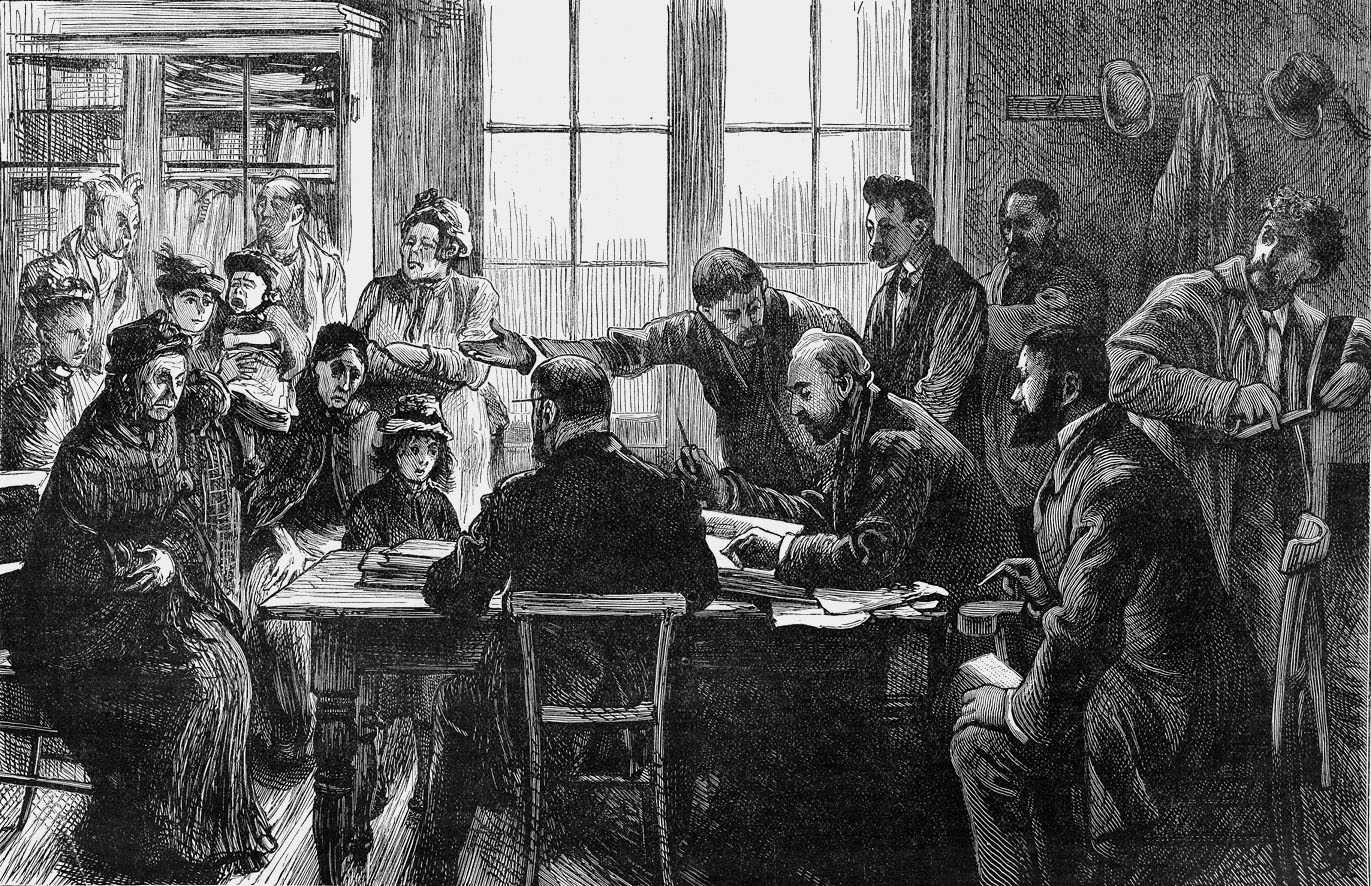
Further reading:
Recollections of a School Attendance Officer by John Reeves (circa 1913); this very rare book is held at the Tower Hamlets Local History Library & Archives, 277 Bancroft Road, E1 4DQ, tel: 020 7364 1290. localhistory@towerhamlets.gov.uk
School Attendance in London 1870-1904: A Social History by David Rubinstein, Hull, 1969, is a brilliant overview of the early years of the London School Board.
The story of James Monday is found in the Nichol Street schools’ surviving paperwork at the London Metropolitan Archives, with the shelfmarks (for the boys dept) at LCC/EO/DIV05/ROC/AD/001 to 007. LMA, 40 Northampton Road, London EC1, tel: 020 7332 3820
www.cityoflondon.gov.uk/things-to-do/visiting-the-city/archives-and-city-history/london-metropolitan-archives/visitor-information/Pages/default.aspx
8/6/14 The Old Nichol schools – coping with truancy and child ill-health in the 1880s
Two of the things that the schoolteachers in the Old Nichol slum were up against were persistent truancy, and the appalling state of health and sometimes semi-starvation among their pupils. With the former, children were sometimes crucial to very-poor families’ budgets, and could not easily be spared from the working day. Fighting truancy and absenteeism was a very long battle in the first 30 years of compulsory London education.
With the second, some devastatingly upsetting data from the Old Nichol schools can be found at the London Metropolitan Archives. Here are a couple of examples of the tables that one of the girls’ teachers submitted to the London School Board.
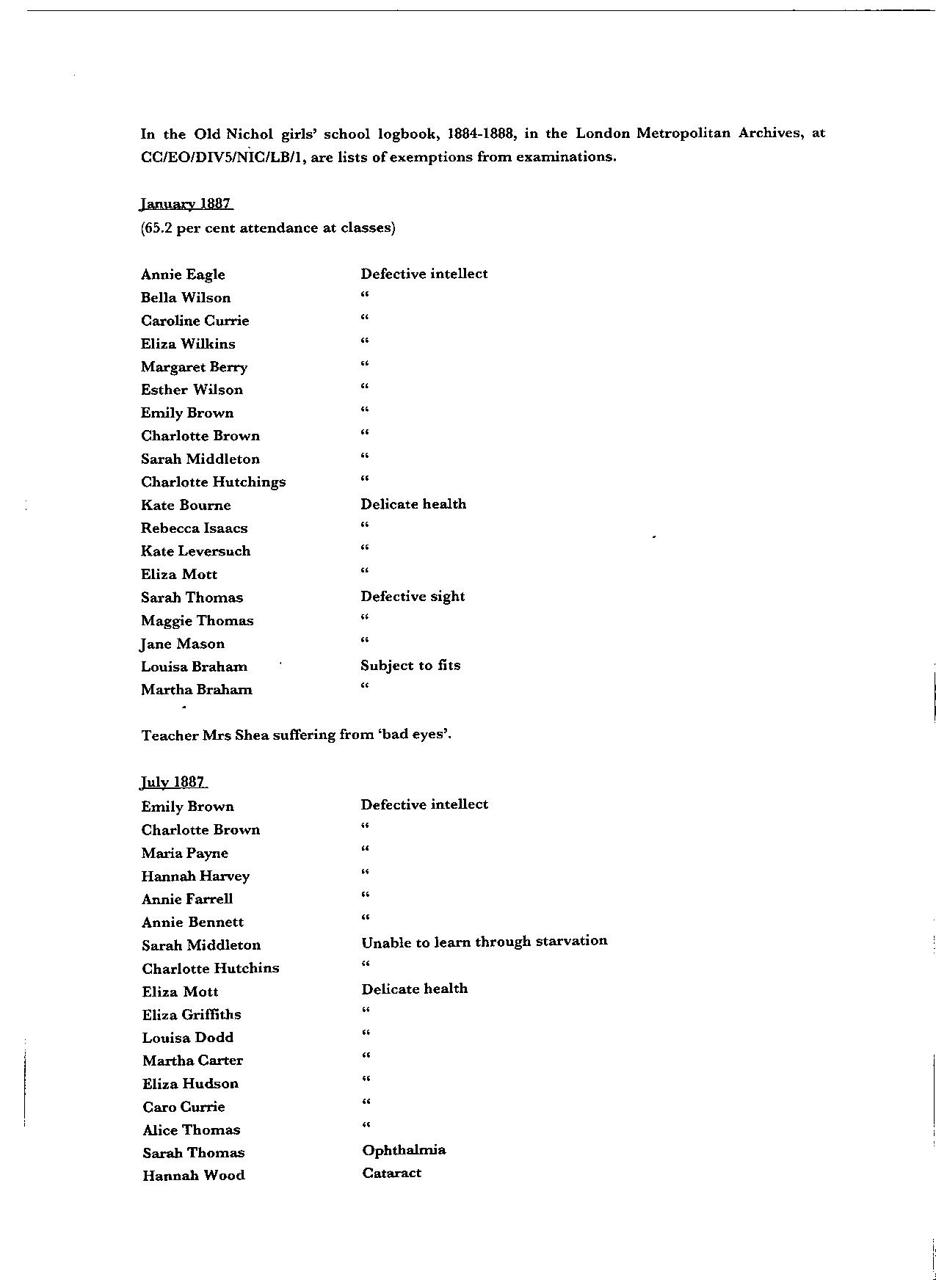
‘Defective intellect’ may well have indicated learning difficulties, or, as some teachers claimed, an inability to concentrate because of malnutrition or exhaustion. The teachers themselves went down with wave after wave of the infectious illnesses that swept through the districts (whooping cough, smallpox, scarlet fever, measles, diptheria). In the table above, Mrs Shea is likely to have been hit by the ophthalmia that affected hundreds of London schoolchildren in the 1880s and 1890s.
Below is a group shot of
the teachers at the schools, with local celebrity vicar Headlam (a friend and supporter of Oscar Wilde) sitting in the front row, centre, and the local (Liberal-Radical) MP Edward Pickersgill, front row, far right.
The school buildings are the only structures that survive today following the total demolition of the Old Nichol by the London County Council in the early/mid-1890s.
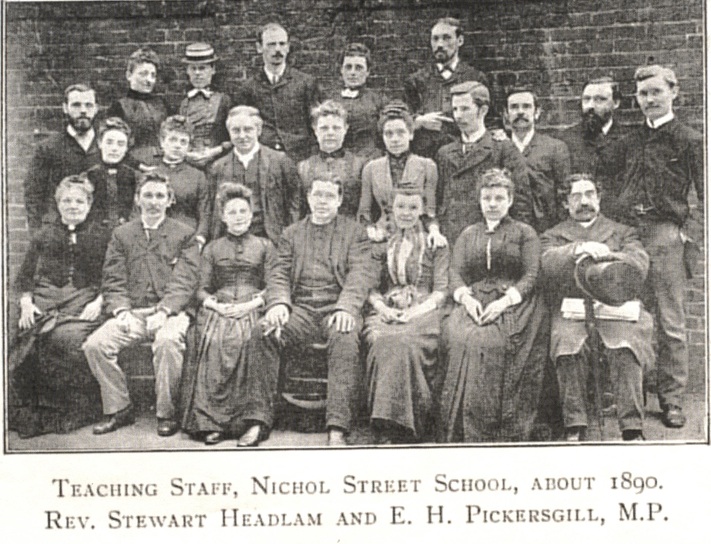
17/4/14 The battle for London government – what a joke
The creation of the London County Council in 1889 decided the ultimate fate of the Old Nichol slum (and what a fate). But the Council was a long time in the making: satirical magazines such as Moonshine (below right) and (more famously) Punch magazine (below left) had lots of fun in the mid- and late-1880s as Sir William Harcourt MP attempted and failed to get legislation passed to reform London’s local government by creating a unitary authority. The capital was run by some 250 separate organisations, while the medieval Corporation of London administered the City of London’s Square Mile.
Harcourt told parliament in 1884 that he knew he was ‘launching the vessel of London municipal reform upon a sea strewn with many wrecks and whose shores are whitened with the bones of many previous adventurers’. (Hence the cartoon on the right.) What he faced was mass indifference, with an average of just 15 MPs turning up for the debates. Eventually, in 1888, the Local Government Act was passed, which created the London County Council a year later.
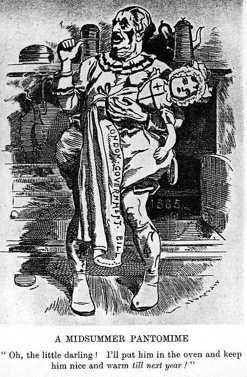
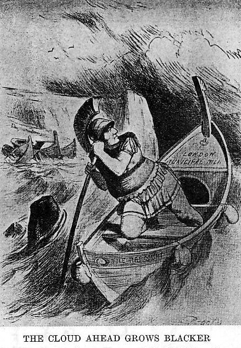
10/4/14 Gypsies at Hackney and Shoreditch
.jpg)
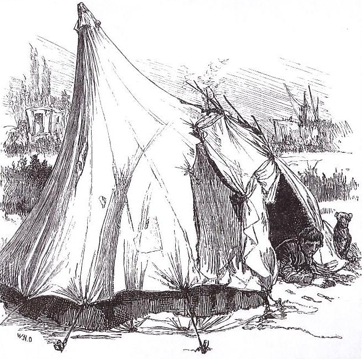
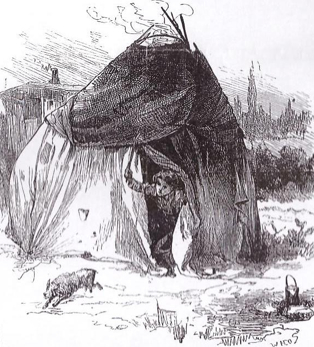
These drawings were done in the 1880s when some Romany folk came to rest temporarily on Hackney Marshes; the man top left is a knife-grinder, at work at his portable lathe.
In the late 19th century, certain parts of London and its surrounds were known for their gypsy encampments – including Wandsworth, Notting Dale and Epping. In the extract below, from his 1874 book Romano Lavo-Lil: Word-Book of the Romany; or English Gypsy Language, George Henry Borrow claims that many travelling people began to settle down in houses, abandoning life on the road. He identified the eastern part of the Old Nichol as one spot where this forsaking of canvas and caravans for bricks and mortar was taking place.
Borrow is mistaken, however, in thinking there was ever a friary on the spot (the area had been monastery land once, but ‘Friars Mount’ actually refers to the fact that a farmer called Fryer had tilled the land in the 18th century). And he over-emphasises the criminality of the Nichol residents; and his anti-Catholicism is at full volume here.
‘Not far from Shoreditch Church, and at a short distance from the street called Church Street [now Redchurch Street], on the left hand, is a locality called Friars Mount, but generally for shortness called The Mount. It derives its name from a friary built upon a small hillock in the time of Popery, where a set of fellows lived in laziness and luxury on the offerings of foolish and superstitious people, who resorted thither to kiss and worship an ugly wooden image of the Virgin, said to be a first-rate stick at performing miraculous cures. The neighbourhood, of course, soon became a resort for vagabonds of every description, for wherever friars are found, rogues and thieves are sure to abound; and about Friars Mount, highwaymen, coiners and gypsies dwelt in safety under the protection of the ministers of the miraculous image.
‘The friary has long since disappeared, the Mount has been levelled, and the locality built over. The vice and villainy, however, which the friary called forth still cling to the district. It is one of the vilest dens of London, a grand resort for housebreakers, garotters, passers of bad money and other disreputable people, though not for Gypsies; for however favourite a place it may have been for the Romany in the old time, it no longer finds much favour in their sight, from its not affording open spaces where they can pitch their tents. One very small street, however, is certainly entitled to the name of a Gypsy street, in which a few Gypsy families have always found it convenient to reside, and who are in the habit of receiving and lodging their brethren passing through London to and from Essex and other counties east of the metropolis.
‘There is something peculiar in the aspect of this street, not observable in that of any of the others, which one who visits it, should he have been in Triana of Seville, would at once recognise as having seen in the aspect of the lanes and courts of that grand location of the Gypsies of the Andalusian capital.
‘The Gypsies of the Mount live much in the same manner as their brethren in the other Gypsyries of London. They chin the cost [make clothes pegs], make skewers, baskets, and let out donkeys for hire. The chief difference consists in their living in squalid houses, whilst the others inhabit dirty tents and caravans. The last Gypsy of any note who resided in this quarter was Joseph Lee; here he lived for a great many years, and here he died, having attained the age of ninety. During his latter years he was generally called Old Joe Lee, from his great age. His wife or partner, who was also exceedingly old, only survived him a few days. They were buried in the same grave, with much Gypsy pomp, in the neighbouring churchyard. They were both of pure Gypsy blood, and were generally known as the Gypsy king and queen of Shoreditch. They left a numerous family of children and grandchildren, some of whom are still to be found at the Mount.
‘This Old Joe Lee in his day was a celebrated horse and donkey witch – that is, he professed secrets which enabled him to make any wretched animal of either species exhibit for a little time the spirit and speed of “a flying drummedary.” ’
There is more on Hackney Marshes and travellers in the 19th century, plus a fab photo, here: http://hackneycitizen.co.uk/2009/11/29/hackney's-place-in-the-romany-story/
11/3/14 The last of Club Row
The great pet market at Club Row, immediately south of the Old Nichol/Boundary Estate, was shut down in 1983, after a protracted battle between animal-rights campaigners and market traders whose families had had pitches there for decades.
The first picture shows a dealer from the 1890s, who seems to be catering for the lovers of song-birds. For many of the poor,
a window box of plants and a bird singing in a cage were the only ways to import a little rus into the urbe. Pubs around the Nichol hosted song-bird competitions, with prizes for the loudest/most tuneful chirruppers.
The cuttings below the vintage pic speak for themselves, telling the story of the early 1980s battle to have the market closed.
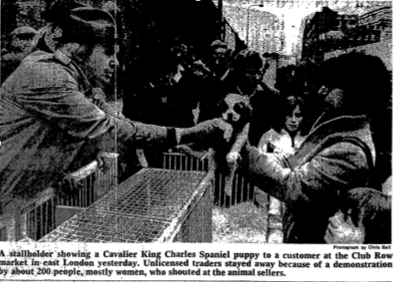
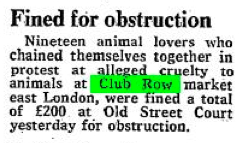
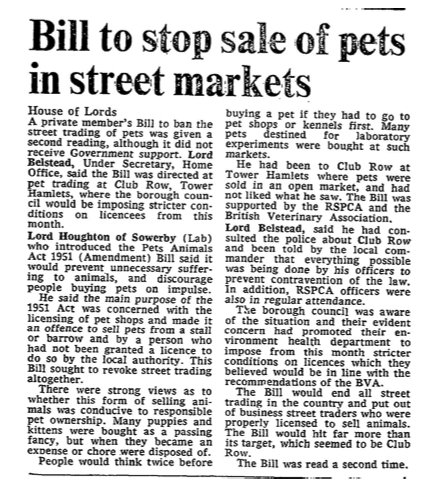
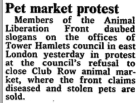
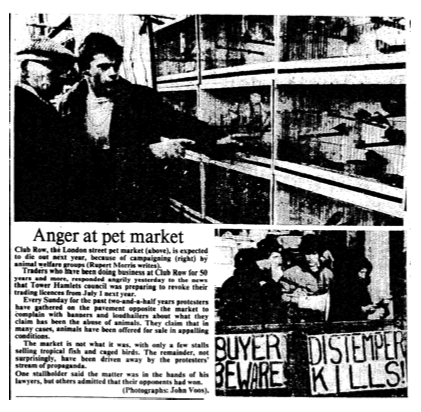
15/2/14 Blackest streets up west. . . A letter to The Times
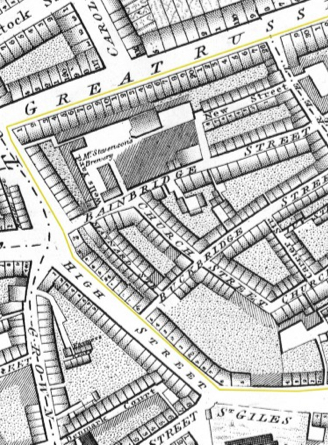
The St Giles slum just north of Covent Garden was one of the very poorest parts of London. This letter to The Times, printed in the edition of Thursday 5 July 1849, was a joint endeavour by locals to try to draw attention to their plight. This was two years before Charles Dickens made his famous tour of the slum with Inspector Field (http://www.djo.org.uk/household-words/volume-iii/page-265.html)
‘To the Editor of The Times
‘Sur, May we beg and beseech your proteckshion and power. We are Sur, as it may be, liven in a Willderniss, so far as the rest of London knows anything of us, or as the rich and great people care about. We live in muck and filthe. We aint go no privie, no dust bins, no drains, no water-splies, and no drain or suer in the hole place. The Suer Company, in Greek St, Soho Square, all great, rich and powerful men, take no notice watsomedever of our cumplaints. The Stenche of a Gully-hole is disgustin. We all of us suffur, and numbers are ill, and if the Colera comes Lord help us.
‘Some gentlemans comed yesterday, and we thought they was comishoners from the Suer Company, but they was complaining of the noosance and stenche our lanes and corts was to them in New Oxforde Street. They was much surprized to see the seller in No.12 Carrier St [see map above] in our lane, where a child was dyin from fever, and would not beleave that Sixty persons sleep in it every night. This here seller you couldent swing a cat in, and the rent is five shilling a week; but theare are grate many sich deare sellars.
‘Sur, we hope you will let us have our cumplaints put into your hinfluenshall paper, and make these landlords of our houses and these comishoners (the freinds we spose of the landlords) make our houses decent for Christions to live in.
‘Preaye Sir com and see us, for we are livin like piggs, and it aint faire we shoulde be so ill treted.
‘We are your respeckfull servants in Church Lane, Carrier St., and the other corts.
‘Teusday, Juley 3, 1849.’
John Scott; Emen Scott; Joseph Crosbie; Hanna Crosbie; Edward Copeman; Richard Harmer; John Barnes; William Austin; Elen Fitzgerald; William Whut; Ann Saunderson; Mark Manning; John Turner; William D Wyre; Mary Aiers; Donald Co.nell; Timothy Driscoll; Timothe Murphy; John O’Grady; Maria O’Grady; John Dencey; John Crowley; Margret Steward; Bridget Towley; John Towley; Timothy Crowley; John Brown; Catherine Brown; Catherine Collins; Honora Flinn; John Crowe; James Crowe; Thomas Crowe; Patrick Fouhey; William Joyce; Michal Joyce John Joyce; Thomas Joyce; John Sullivan; Timothy Sullivan; Cathrin Trice; James Regan; Timothy Brian; James Bryan; Phillip Lacey; Edward brown; Mrs. Brocke; Nance Hays; Jeryh Fouhey; Marey Fouhey; Jerey Aies; Timothy Joyce; John Padler.
12/1/14 The heroic vicar of Mount Street, Old Nichol
Peter Must is the great grandson of Reverend Robert Loveridge, the heroic but very modest vicar of St Philip’s, Mount Street (today’s Swanfield Street), who was scandalised by the publication of Charles Booth’s Poverty Map, in 1889: the depiction of the Old Nichol as a mass of black streets, indicating criminality, fecklessness and ineradicable chronic poverty, was, Reverend Loveridge said, ‘a malignant lie. . . the dwellers in the Boundary Street area were rather virtuous than otherwise’.
Sadly, no picture of Reverend Loveridge has survived, but one of his descendants, Peter Must, has written to me supplying some background information on the vicar and on his other Nichol ancestors. (Pictures of St Philip’s Church, now demolished, can be seen below, at the posting dated 4/5/13.)
Peter has written: ‘Robert Whatwood Loveridge was born in Bethnal Green in 1831, but was brought up in Birmingham. He married Caroline Brain, the daughter of a toll-keeper, and they had five daughters, of whom Ellen (Nellie), my grandmother, was the third. Caroline died, aged 33, in 1876 and the task of bringing up the children was shared by Caroline’s sister, Alice, and her husband, Henry Day.
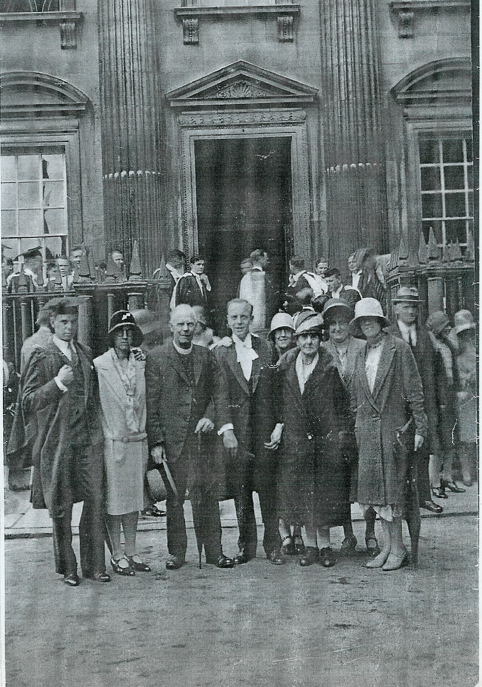
Cambridge in the 1920s: Loveridge’s daughter is third from right; my correspondent’s parents are fourth from left and furthest right.
‘My grandfather, Henry Must, was born at 6 Christopher Street, in the Old Nichol, to James Must, a dock labourer who was himself born just south of the Old Nichol in James Street, later renamed Chilton Street [just east of Brick Lane].
‘Henry Must was baptised by Reverend Loveridge in St Philip’s in 1870 and was one of six siblings. In early 1891 he was a boot and shoe warehouseman but shortly afterwards entered theological college through the sponsorship of Rev Loveridge. He was ordained in 1893 and in 1895 married Nellie Loveridge, the reverend’s daughter. He became curate at St Philip’s in 1896 and succeeded his father-in-law as vicar in 1898. Subsequently he was for 37 years vicar of St David’s, Holloway, dying in 1942, two years before Nellie, who knew that my mother was expecting, but did not see me born.
‘Grandma Nellie always walked a few paces behind her husband and appears to have never been photographed without a cloche hat on.
‘Auntie Minnie, meanwhile (one of Reverend Loveridge’s other daughters), was a kindly spinster who looked after my sister and brother when they were ill and whose idea of entertainment was to seat them next to her at the piano while she bashed out and hollered “I’m H-A-P-P-Y!” and other rousing hymns.
‘While I am glad that Henry, and indeed all his brothers and sisters, escaped the “moral decay” that eugenicists might have predicted for him, I also like to think that his parents, James and Betsey, provided the best support they could for their children out of the meagre and sporadic wages available to a casual labourer.
‘My sister Brenda, who is ten years older than me, remembers Henry Must as a pretty strict disciplinarian, yet beloved by his parishioners; he was no doubt filled with the need to prevent his children sliding towards poverty and the workhouse (as his father and uncles had done) but also imbued by the sense of duty and care which I think was passed on by Reverend Loveridge.
‘James Must typifies the difficulties faced by the very poor. He and his family lived at various addresses in Mead Street and Christopher Street in the Old Nichol; they moved out by 1891, presumably as their accommodation came up for demolition for the building of the Boundary Street Estate, but travelling only a few hundred yards to a house in Granby Street [close to James/Chilton Street]. Betsey died in 1893 and (unable to cope on his own, I guess) James was thereafter an almost permanent resident of the workhouse, as indeed were his brothers William and Thomas, who had also lost their wives. He died in the infirmary in 1907, aged 75.
‘Your book provides heartening evidence to support Robert Loveridge’s view (was he thinking of his son-in-law’s family?) that the desperately poor of the Old Nichol were “rather virtuous than otherwise”. I sense you have some sympathy for the more chaotic, un-means-tested charity shown by Robert Loveridge. Loveridge was characterised rather snidely, as you point out, by his interviewer Arthur Baxter [part of Charles Booth’s survey team], a non-practising barrister of independent means – quite what “harm” Loveridge and others were doing, as Baxter claims, remains unclear.
‘For some obscure reason, Reverend Loveridge accepted the post of rector of Sigglesthorpe, East Yorkshire, after he left St Philip’s, but died there a year later, on 5 June 1899. Unfortunately, I do not have any picture of him, although I have this frustrating belief that there must be at least one image of him out there somewhere. He appears from your researches to have been a man suffused with charity almost to the exclusion of self-interest, or even objective reason.
‘As for many descendants of families who passed through the slums of East London, there is always a “What if. . .?” In this case, “What if the generation of Musts – who, in the late eighteenth century, thought the weaving trade in Spitalfields, Shoreditch and Bethnal Green offered better prospects than the placid but uncertain Sudbury, Suffolk – had decided against uprooting themselves and their families to seek that more prosperous life?” But of course, that question still resonates in the slums of Rio de Janeiro, Nairobi, Mumbai and elsewhere.
‘To finish off, we should perhaps contrast the life of Henry Must with the fate of his cousin, Sarah Ann. She was an early visitor to the workhouse, where her illegitimate daughter, also called Sarah Ann, was born and died. In that same year she married Thomas Jarvis, a matchbox-maker, and had nine children with him. What happened is chronicled in these documents. [Below: a newspaper cutting; a report from Booth’s survey notebooks; and a poem by William McGonagall.]’
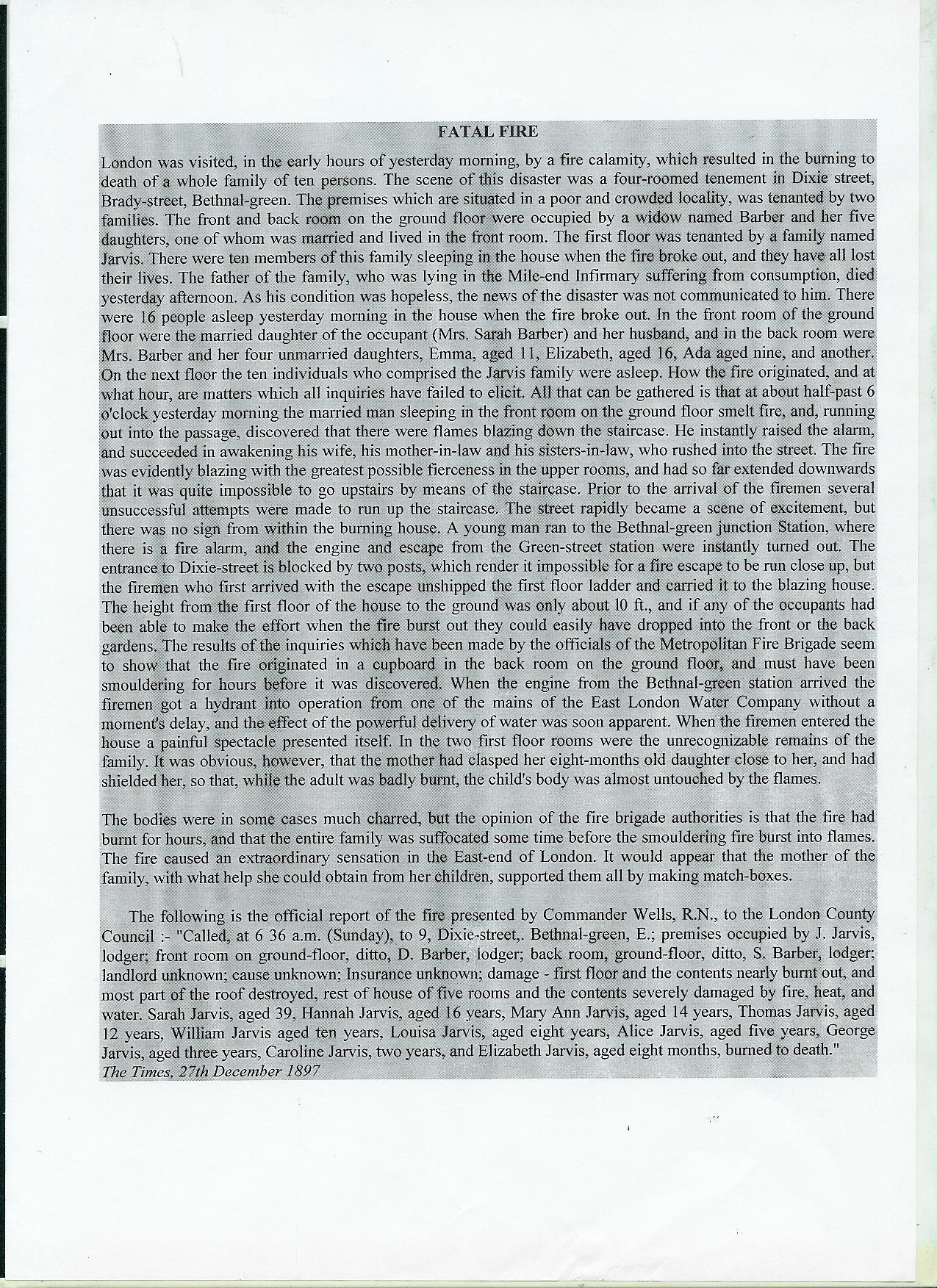
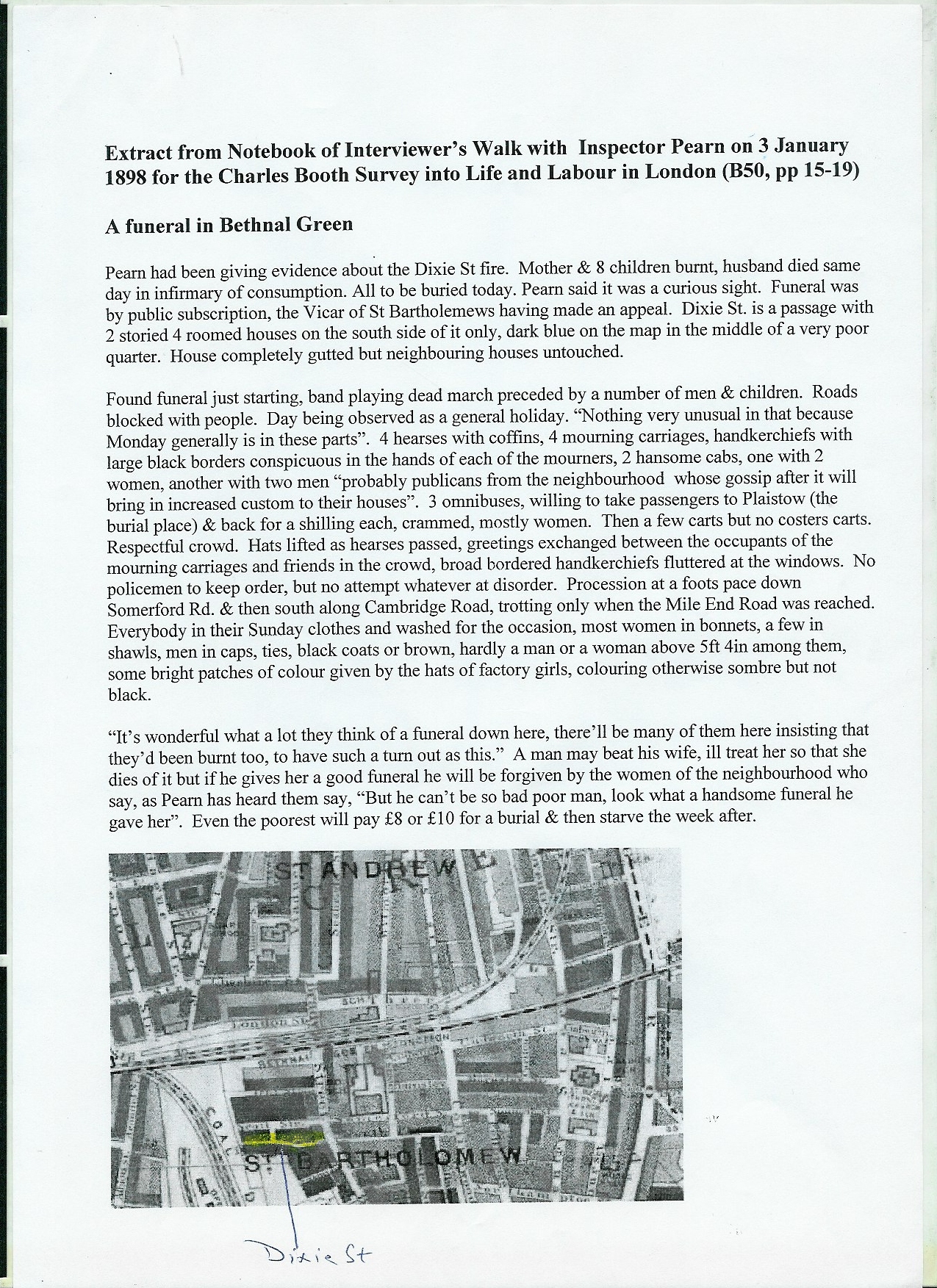
‘Calamity in London’ by William McGonagall
’Twas in the year of 1897, and on the night of Christmas Day,
That ten persons’ lives were taken away,
By a destructive fire in London, at No. 9 Dixie Street,
Alas! so great was the fire, the victims couldn’t retreat.
In Dixie Street, No. 9, it was occupied by two families,
Who were all quite happy, and sitting at their ease;
One of these was a labourer, David Barber, and his wife,
And a dear little child, he loved as his life.
Barber’s mother and three sisters were living on the ground floor,
And in the upper two rooms lived a family who were very poor,
And all had retired to rest, on the night of Christmas Day,
Never dreaming that by fire their lives would be taken away.
Barber got up on Sunday morning to prepare breakfast for his family,
And a most appalling sight he then did see;
For he found the room was full of smoke,
So dense, indeed, that it nearly did him choke.
Then fearlessly to the room door he did creep,
And tried to arouse the inmates, who were asleep;
And succeeded in getting his own family out into the street,
And to him the thought thereof was surely very sweet.
And by this time the heroic Barber’s strength was failing,
And his efforts to warn the family upstairs were unavailing;
And, before the alarm was given, the house was in flames,
Which prevented anything being done, after all his pains.
Oh! it was a horrible and heart-rending sight
To see the house in a blaze of lurid light,
And the roof fallen in, and the windows burnt out,
Alas! ’tis pitiful to relate, without any doubt.
Oh, Heaven! ’tis a dreadful calamity to narrate,
Because the victims have met with a cruel fate;
Little did they think they were going to lose their lives by fire,
On that night when to their beds they did retire.
It was sometime before the gutted house could be entered in,
Then to search for the bodies the officers in charge did begin;
And a horrifying spectacle met their gaze,
Which made them stand aghast in a fit of amaze.
Sometime before the firemen arrived,
Ten persons of their lives had been deprived,
By the choking smoke, and merciless flame,
Which will long in the memory of their relatives remain.
Oh, Heaven! it was a frightful and pitiful sight to see
Seven bodies charred of the Jarvis family;
And Mrs Jarvis was found with her child, and both carbonised,
And as the searchers gazed thereon they were surprised.
And these were lying beside the fragments of the bed,
And in a chair the tenth victim was sitting dead;
Oh, Horrible! Oh, Horrible! what a sight to behold,
The charred and burnt bodies of young and old.
Good people of high and low degree,
Oh! think of this sad catastrophe,
And pray to God to protect ye from fire,
Every night before to your beds ye retire.
18/12/13 Churchmen and chimneypots – a Mary Poppins skyscape
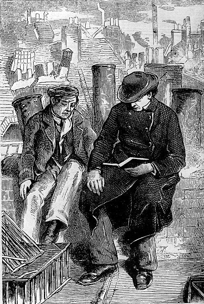
In any overbuilt, cramped urban environment, roofs play a special role: fresh air and light being at a premium at ground level in a Victorian slum, the roof gave easy access to both. And that is why late-Victorian municipal school buildings often feature a rooftop playground.
In the Old Nichol, two churchmen made full use of the rooftop as a meeting place, in decent weather.
Above is an illustration of John Weylland, pastor with the London City Mission, preaching to one of his flock, from Weylland’s The Man With the Book (1877). Beyond them is the crazy skyline of Shoreditch chimneys, flues and smoke billows. All it needs is Dick van Dyke and his lucky sweeps.
Below is Reverend Arthur Osborne Jay, tucked in among the leg-of-mutton sleeves and voluminous skirts of his titled lady sponsors (he is trapped 2nd row from front, 3rd from right). The shot was taken in June 1895
on the roof of his Holy Trinity Church, Old Nichol Street, to mark the second of his annual prize-givings for geranium growing.
Four hundred geranium cuttings in pots were bought using funds supplied by the Society ladies and gentlemen in the photograph, and given to the boys and girls of the two large local Board Schools.
The best specimens after three months won their growers prizes of books and workboxes. Jay reported that one little Nichol girl used to take her geranium out for a walk to get it some fresh air; another prize specimen bloomed in the room at 4 Old Nichol Street where the child’s father, James Muir, had murdered his common-law wife, Abigail Sullivan, in December 1891.
Jay had had his church and adjoining Model Lodging House designed with a ‘usable’ roof and from its four-storey height the Crystal Palace could be seen to the south, Alexandra Palace to the north, as well as St Paul’s cathedral and the towers of Charrington’s brewery in Mile End.
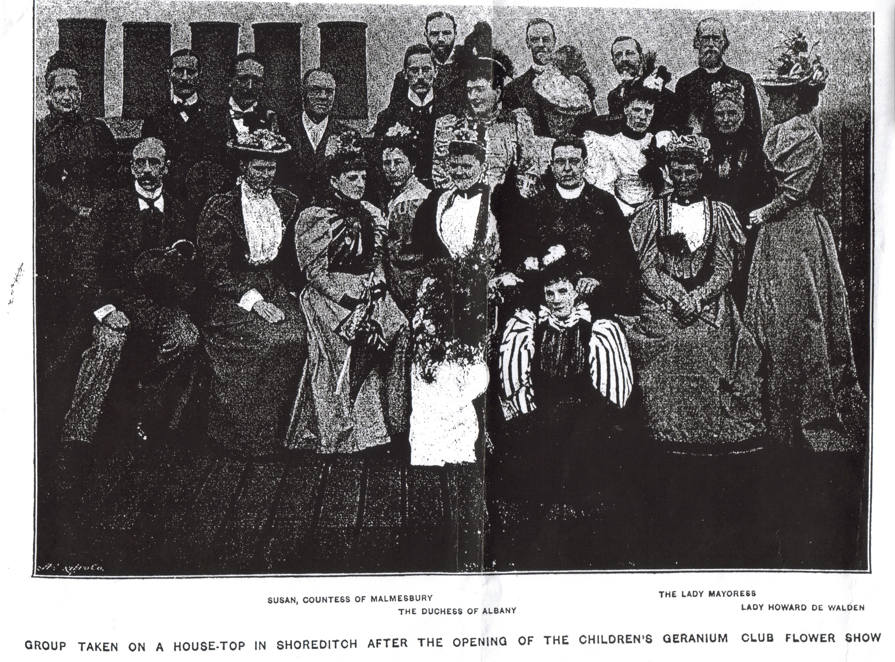
28/11/13 Stan Newens unravelling the Morrison mystery
As mentioned in the post below, novelist Arthur Morrison was mysterious about his early life. Stan Newens, former MP and local historian of London and Essex, broke new ground in 2008 with his biography of Morrison – Arthur Morrison: The Novelist of Realism in East London and Essex (Loughton & District Historical Society, £4.50).
Newens was also the person who originally introduced his constituent Arthur Harding to historian Raphael Samuel –
and that’s how the East End Underworld oral history project began (see posting of 19/2/13 below). Newens’s own autobiography, In Search of A Fairer Society: My Life and Politics, is published this week.
4/11/13 Arthur Morrison letters
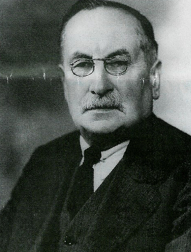
Arthur Morrison’s novel A Child of the Jago (1896) is, among other things, the most impressive of literary re-brandings of a district in London history, perhaps even in world history. Morrison had exaggerated the awfulness of life in the real slum, the Old Nichol, and so powerful is his artistic vision, his fictional Jago has usurped the real Nichol in London imaginations.
We don’t know why Morrison chose to libel the Nichol population. Writing in the late 1960s, Morrison scholar PJ Keating stated that Morrison’s horror and loathing of the slum residents was probably attributable to some personal source. Morrison remains a rather mysterious figure. Interviewers failed to winkle much background information from him; and, as she had been instructed, Morrison’s wife, Elizabeth, burnt all his private papers upon his death in 1945. But we do know that he tried to blur the truth about his humble early years in Poplar. It is tempting to view A Child of the Jago as the work of a gifted, ambitious young working-class man putting a lot of distance between himself and those who had fallen into the abyss of chronic poverty.
Despite
the furore that A Child of the Jago caused (Morrison faced years of criticism for his attitude towards the slum dwellers), he remained unrepentant. In the first of these two letters below (bottom of first page and top of the second page), he continues to defend his take on the slum, to one Mr Anderson, who had written to him enclosing a cutting from the New Statesman in which commentator Mr Mitchell retrospectively praised his novel.
The second letter, dating from 1929, relates to Morrison’s second, and even more successful, career – as an art-dealer and connoisseur. Copies of both letters were very kindly given to me by Iain Sinclair, who found them during his second-hand book-dealing days.
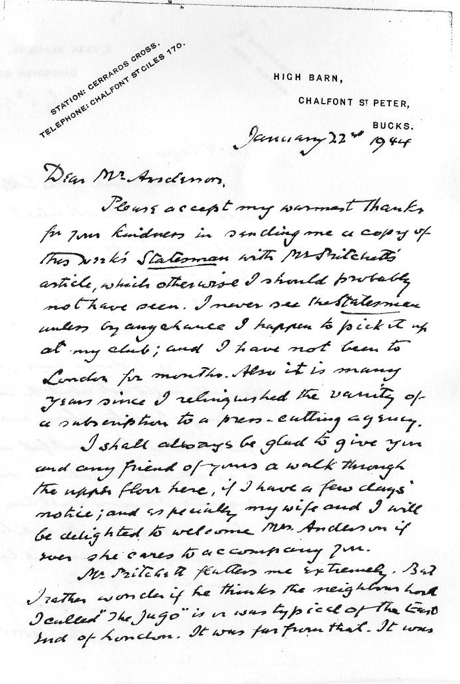
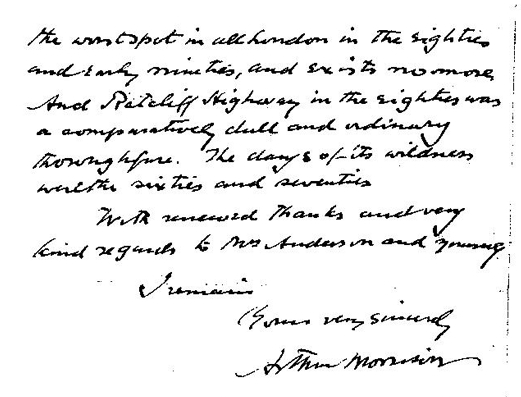
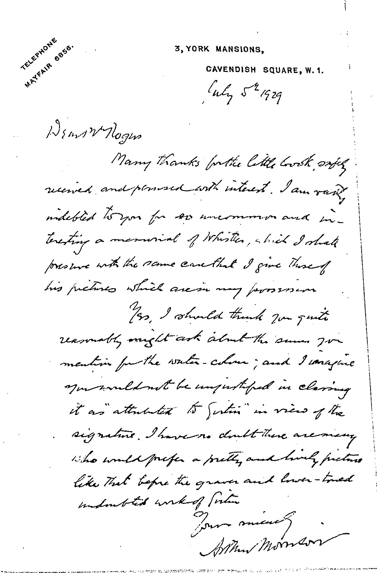
16/10/13 London’s first council housing
The Boundary Street Estate (see stories below) is often described as the first council estate to be built in London. But in fact, Beachcroft Buildings (pictured below) – being smaller and less ambitious – was completed by the London County Council by September 1894. Boundary Street took ten years, from decision-making to opening ceremony (in March 1900).
Now demolished, the flats were just off the eastern end of Cable Street and housed 198 residents in two- and three-room tenements. The rent was higher than prevailing local private rental costs, at 5s 6d for two rooms and 7s 6d for three; and so – just as happened at Boundary Street – only the comparatively well-off working classes could afford to move in..
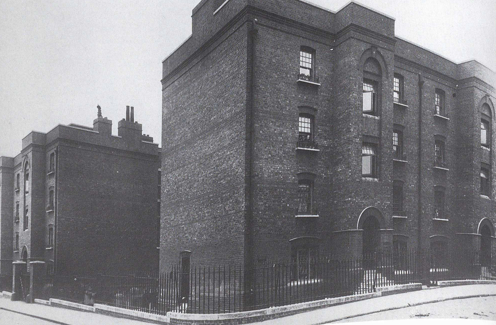
25/9/13 Rubble music: the sounds of old Shoreditch
Intrigued by the false hillock at Arnold Circus, on Shoreditch’s Boundary Estate, artist Thor McIntyre-Burnie sent a microphone probe down into the soil and created a site-specific sound installation. But let Thor explain for himself, here: http://measure.org.uk/exhibitions/rubble-music-thor-mcintyre-burnie
His website also contains a three-and-a-half-minute clip of the recording – sadly, no voices of Old Nichol children playing, nor the music of a barrel organ, nor the whelk vendor’s cry, nor any other 19th-century cockney soundscape. But the trains rumbling out of Liverpool Street do appear to be over-represented.
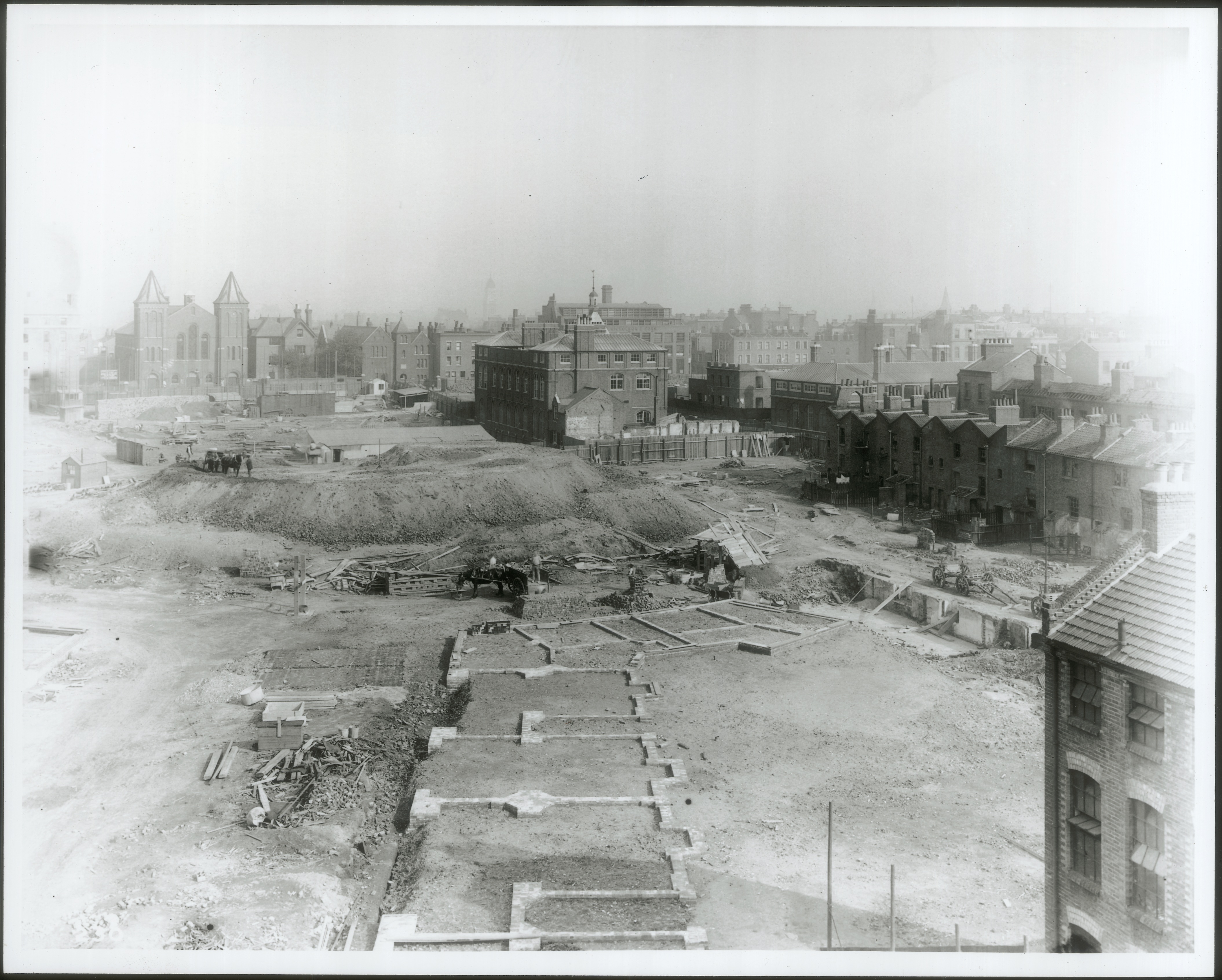
The image above shows the Estate, and its central mount, under construction in the mid-1890s; the view is looking east towards St Philip’s Church, halfway up Mount Street (today’s Swanfield Street). For the story of St Philip’s, see the posting dated 4/5/13, below.
The picture is part of a collection held at the London Metropolitan Archives, shelfmark 28.75 BOU.
http://www.cityoflondon.gov.uk/things-to-do/visiting-the-city/archives-and-city-history/london-metropolitan-archives/Pages/default.aspx
Below: the Old Nichol, left, and the Estate, right, that was built upon its site. St Philip’s is on the right-hand edge of both maps.

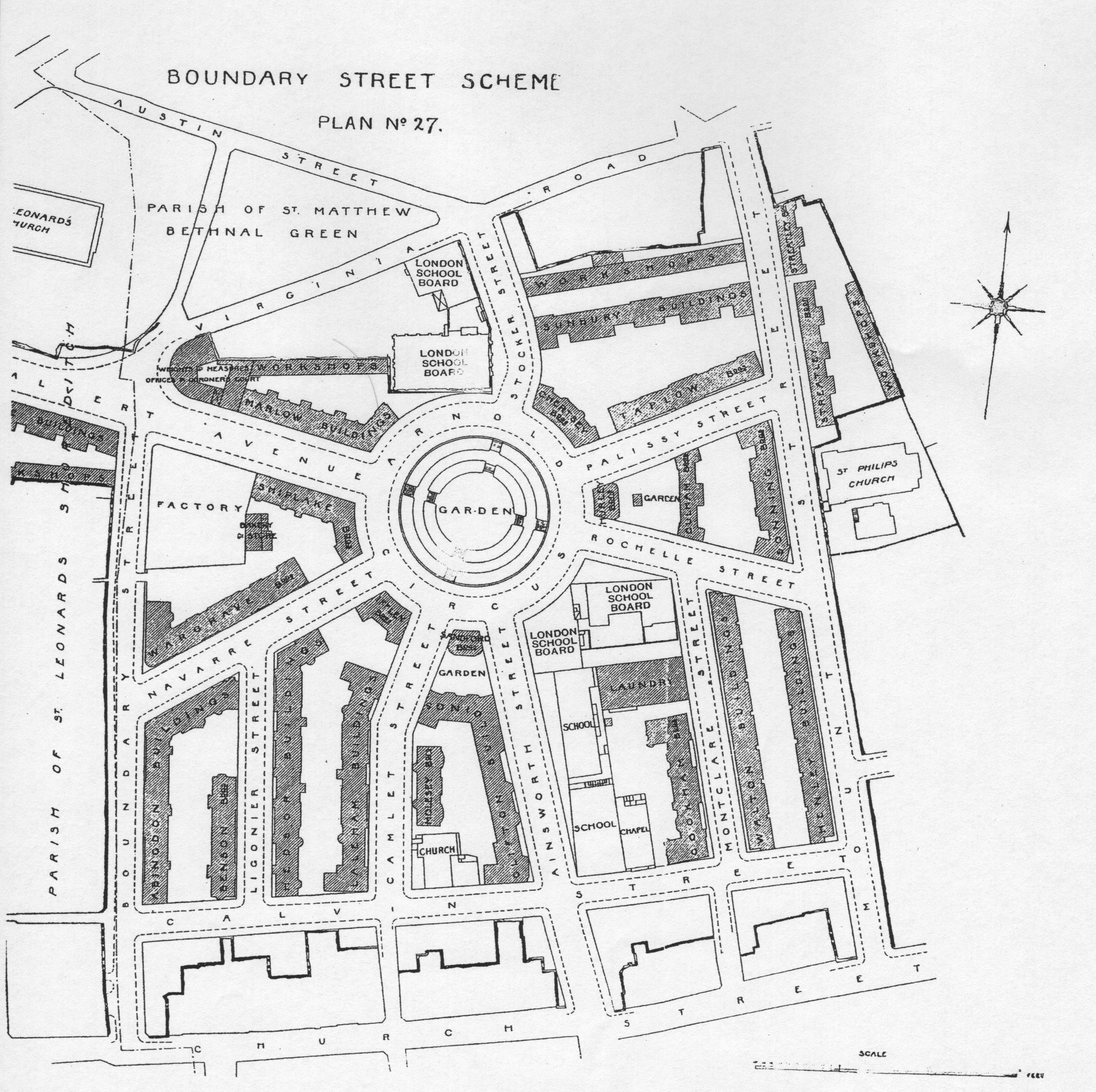
18/9/13 School Dinners
This week’s announcement of free school meals for all children in the first three years of primary education was allegedly
prompted by evidence from pilot areas of a rise in concentration and achievement among those who were given free school
lunches. This phenomenon was recognised in the last years of the nineteenth century, and the schools of the Old
Nichol were instrumental in securing free lunches for all London schoolchildren. Lady Mary Jeune, below, was one of the London County Council’s first aldermen, but had begun her own political and social observation as a philanthropist, supplying food and clothing to the children of the Nichol. She was a co-founder of the Schools Dinners Association – which provided charitable free lunches for 36,000 schoolchildren. When Lady Jeune was elected to the LCC, she campaigned for the authorities to take over the feeding of London’s 750,000 schoolchildren from charitable bodies and church groups.
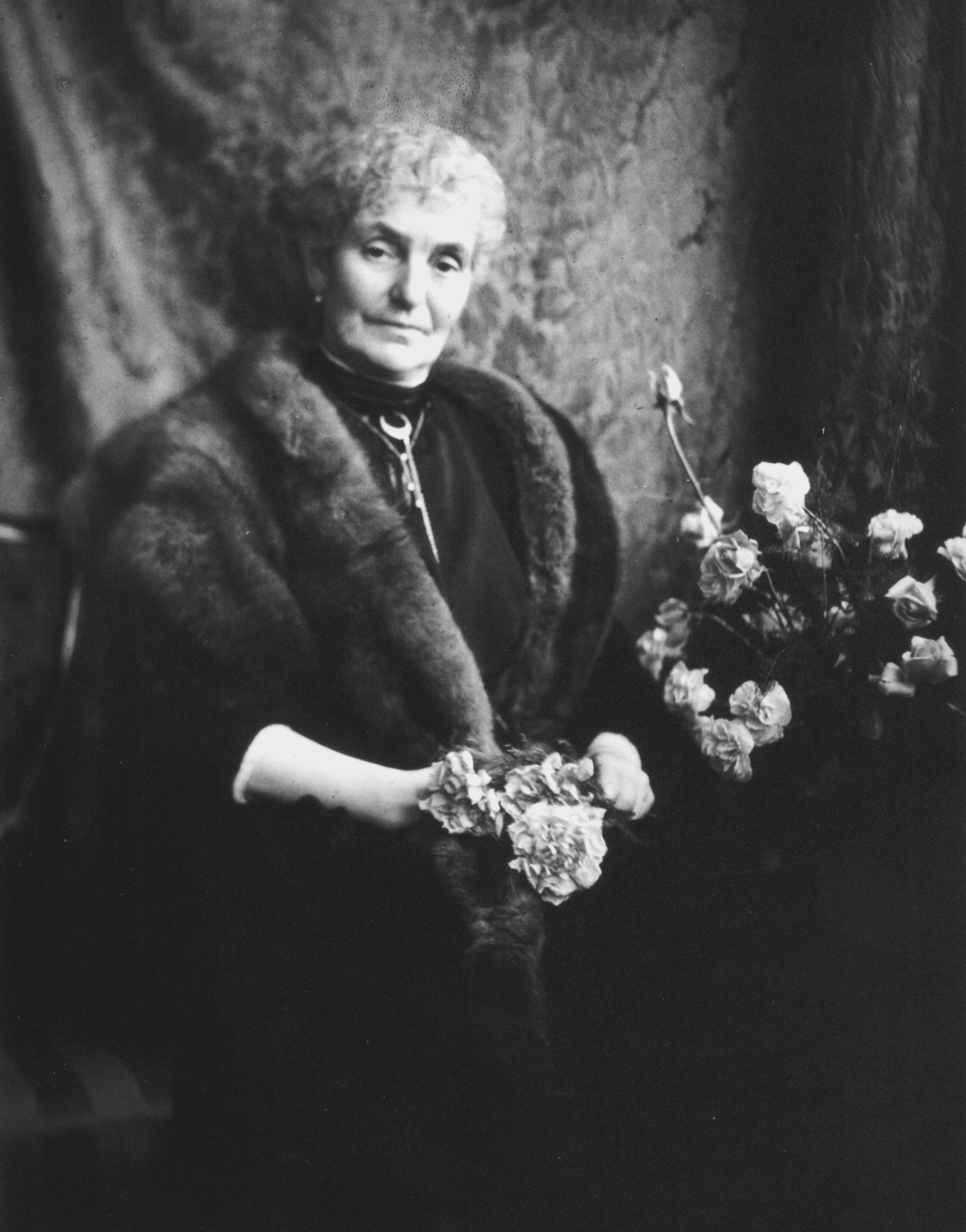
The 1886 illustration below shows the charitable feeding of the most destitute kids at the Old Nichol Street ‘Ragged School’ – the elementary school for the very poorest children. It’s highly stylised and can’t make up its mind if it wants to sneer at the infants or break its heart over them. At the Ragged School, breakfasts were served four days a week in the winter months, and comprised bread and butter, milk and cocoa. Around 100 to 120 of the neediest children were identified by the teachers and given tickets to come to be fed. Two days a week, lunches of bread and soup were served to the same children.
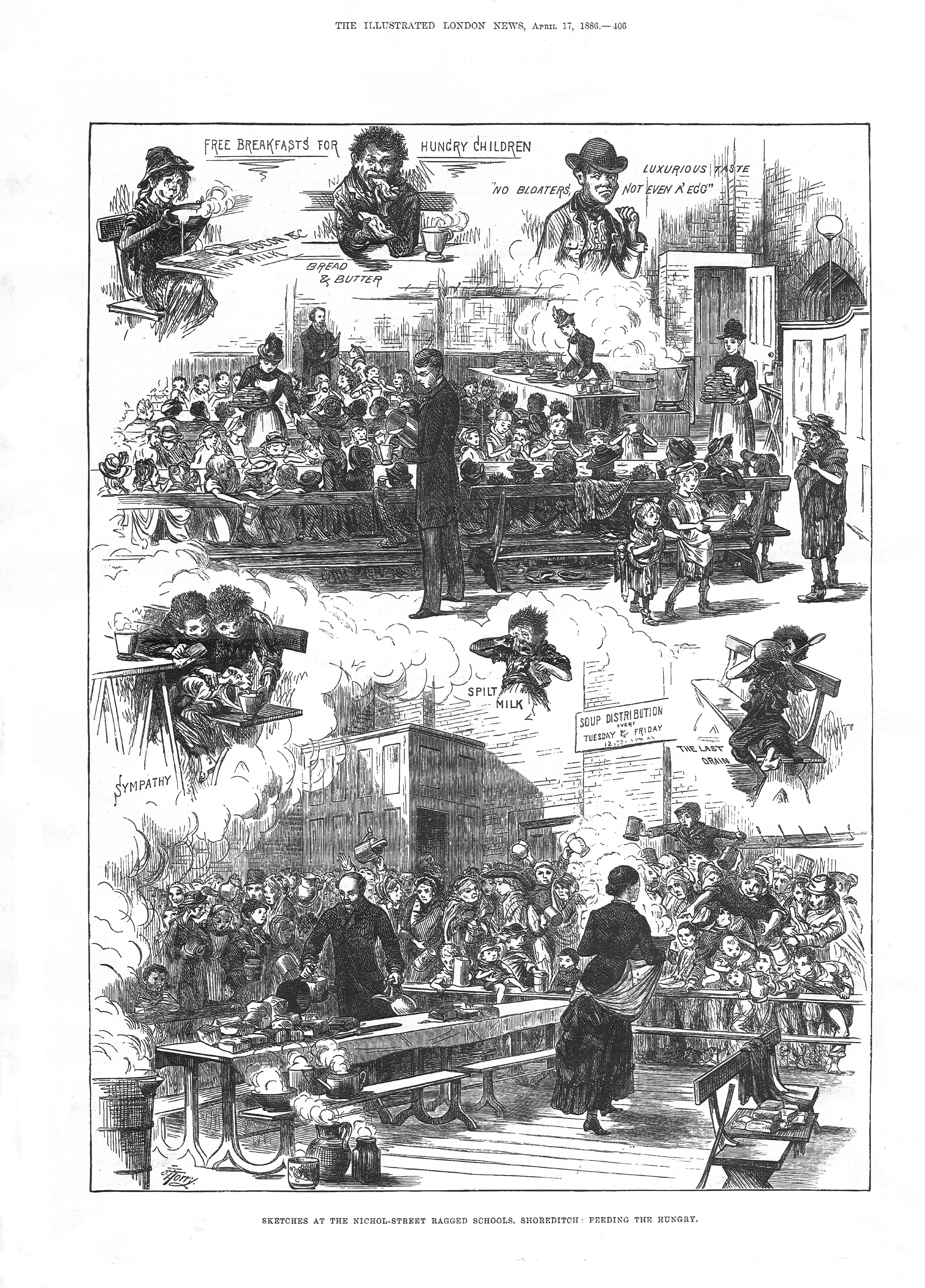 In addition, Reverend Loveridge of St Philip’s, Mount Street, and Reverend Osborne Jay, of Holy Trinity Old Nichol Street, provided hundreds of dinners in the winter months. But all these efforts were nevertheless inadequate, and in 1889 the London School Board reported that one in eight London school pupils was underfed. Testimony from teachers in the Old Nichol and other very poor areas indicated that hunger was impacting on the ability to learn. The reports of the Old Nichol teachers, held at the London Metropolitan Archives, are a desperately sad catalogue of the physical problems and the malnutrition that prevented slum children from being able to concentrate in the school room.
In addition, Reverend Loveridge of St Philip’s, Mount Street, and Reverend Osborne Jay, of Holy Trinity Old Nichol Street, provided hundreds of dinners in the winter months. But all these efforts were nevertheless inadequate, and in 1889 the London School Board reported that one in eight London school pupils was underfed. Testimony from teachers in the Old Nichol and other very poor areas indicated that hunger was impacting on the ability to learn. The reports of the Old Nichol teachers, held at the London Metropolitan Archives, are a desperately sad catalogue of the physical problems and the malnutrition that prevented slum children from being able to concentrate in the school room.
In 1889, the London School Board, which had initially been against public money being spent on school dinners, began to co-operate with the voluntary feeding of children as a prelude to full, rates-funded intervention. The Board discovered that the provision of meals boosted attendance, and in 1904 the parliamentary Interdepartmental Committee on Physical Deterioration came to the conclusion that the free feeding of all London schoolchildren was leading to higher rates of attendance as well as of achievement. The photographs below, of children from Lant Street in Southwark, were published by the Committee as ‘demonstrating’ that improvement had taken place.
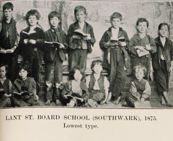
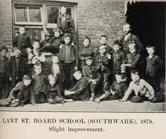
As for the rest of the nation, in 1906 parliament passed The Education (Provision of Meals) Act, which permitted local authorities to lay on school lunches free of charge, though there was no obligation for them to do so.
Although the following passage from Charles Booth’s Life and Labour of the People in London survey may well not be referring to a Nichol school (it is named only as ‘A School in Bethnal Green’), it is a vivid eyewitness account of a charitable school lunch being served: ‘With the exception of a few small girls, all were poorly dressed and ill-nourished, but none were bare-footed. In Bethnal Green, however poor the children are, some foot covering is worn; it may be in holes, and simply absorb wet, but something they must have. One boy I noticed, as they filed out, had a pair of ladies’ dress slippers, with high heels and pointed toes; they had to be tied on across the ankle. Dinner was plentiful thick soup, with two slices of bread, followed by a slice of currant pudding put into the hands of each child as it left the building.
‘After grace was sung, the distribution of the soup began, it being ladled out of the copper into enamelled jugs by the caretaker, and taken round to the children by the girls. This took a few minutes, and whilst it was being done the impatient children were rapping the tables with their spoons, making a terrific noise. Gradually the spoons were diverted to their proper use, and some twenty minutes were occupied in consuming the food.’
And at another Bethnal Green school (again, not necessarily in the Nichol), this: ‘There were 48 of the boys at dinner – poor, thin, anaemic children – many of them very ragged; only three had collars. Chubby faces are scarce in this school. . .The children remain dull and difficult to teach. This, he [the headmaster] attributes partly to heredity, but still more to environment and especially to deficient nourishment.’
In the Nichol itself, a peculiar grace was sung by the children at charity lunches. It went:
‘I thank the Lord for what I’ve had,
If I had more I should be glad,
But now the times they are so bad,
I must be glad for what I’ve had.’
Further reading: School Attendance in London 1870-1904: A Social History by David Rubinstein (Hull), 1969. Charles Booth, Life and Labour of the People in London (Third Series: Religious Influences), 1902, pages 240-242. Archives of the Old Nichol’s schools at the London Metropolitan Archives have the shelfmarks LCC/EO/DIV5/ROC/AD/001 to 007, and LCC/EO/DIV5/NIC/LB/1 to 3, and LCC/EO/NEW/LB/1 to 6.
London Metropolitan Archives, 40 Northampton Road, London EC1. Tel: 020 7332 3820
www.cityoflondon.gov.uk/things-to-do/visiting-the-city/archives-and-city-history/london-metropolitan-archives/visitor-information/Pages/default.aspx
3/9/13 A letter from Charles Booth’s granddaughter
Belinda Norman-Butler (1908-2008) was Charles Booth’s granddaughter and author of Victorian Aspirations, a biography of Charles and his wife Mary. Back in 2006, before getting stuck in to the Booth Archive (I wanted to use extensive quotations in The Blackest Streets), I sought permission from Mrs Norman-Butler to quote from the original notebooks written by her grandfather and his team of researchers for his monumental survey, Life and Labour of the People in London (1889-1903).
Mrs Norman-Butler phoned me in response to my letter, and during our conversation told me her childhood memories of her grandfather (Charles Booth died in 1916). I found it amazing that I was having a conversation with someone who had had a conversation with Charles Booth.
I treasure the letter she sent me (written after she had broken her wrist in a fall), in which she mentions other relatives and literary acquaintances of yore; and I thank her relations, Catherine Wilson and Richard Martineau, for permission to publish it, below.
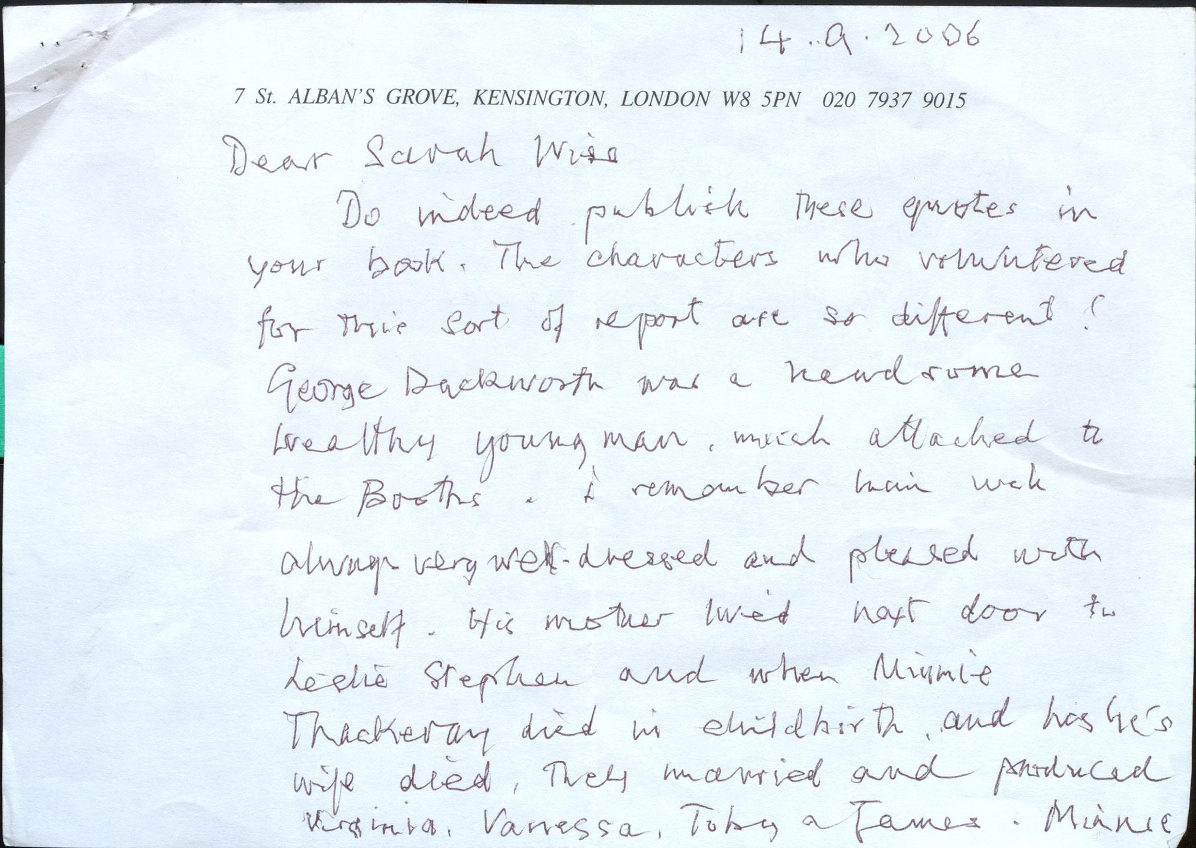
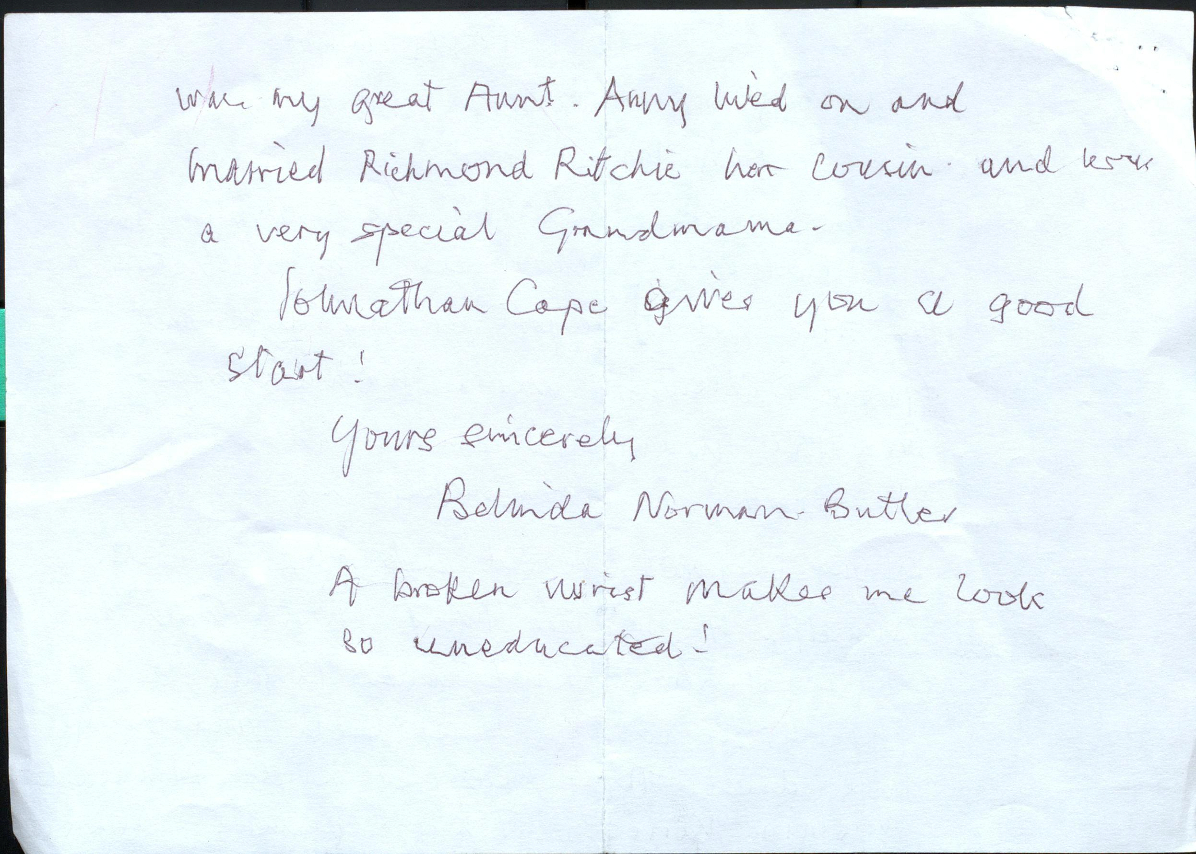
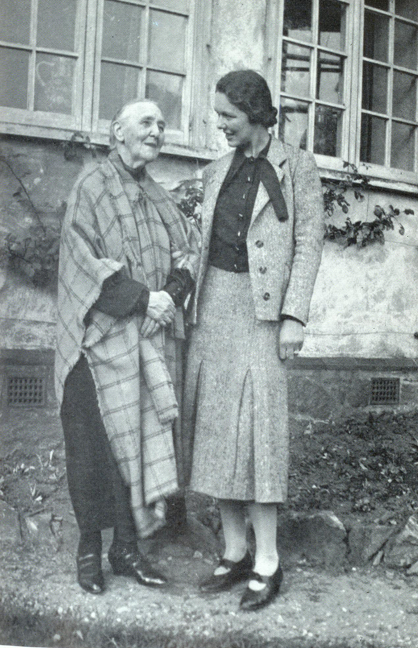
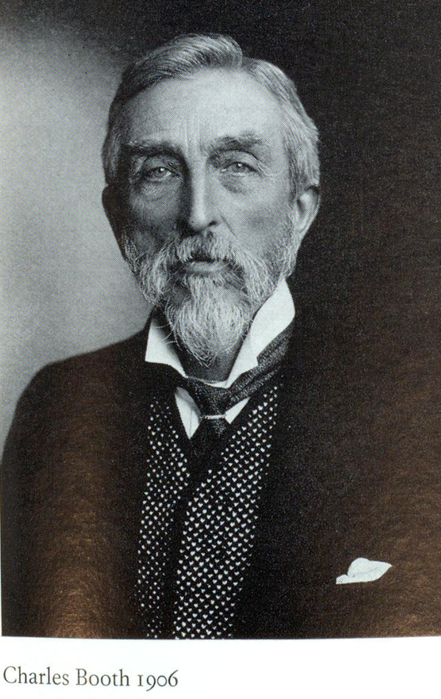
Above left: Belinda Norman-Butler with her grandmother, Mary Booth, in 1936. Both these photographs are to be found in Mrs Norman-Butler’s biography Victorian Aspirations: The Life and Labour of Charles and Mary Booth (1972).
20/8/13 A post-Blitz vision of London
Architect Charles Canning Winmill (1865-1945) designed some of the loveliest of the Boundary Street Estate blocks when the Old Nichol was demolished – Molesey (1896), Clifton (1897), Laleham and Hedsor (both 1898).
In 1900, Winmill, along with his boss, Owen Fleming, who had been in overall charge of the building of the Estate, moved from the Housing Department of the London County Council to its Fire Stations department. This is why the Euston Road fire station (below) looks so like Boundary, as do the Swiss Cottage fire station in Eton Avenue/Grove Road (1915), and Perry Vale in Forest Hill, south-east London (1902). (Winmill’s Red Cross Street station in Barbican is no longer standing.)
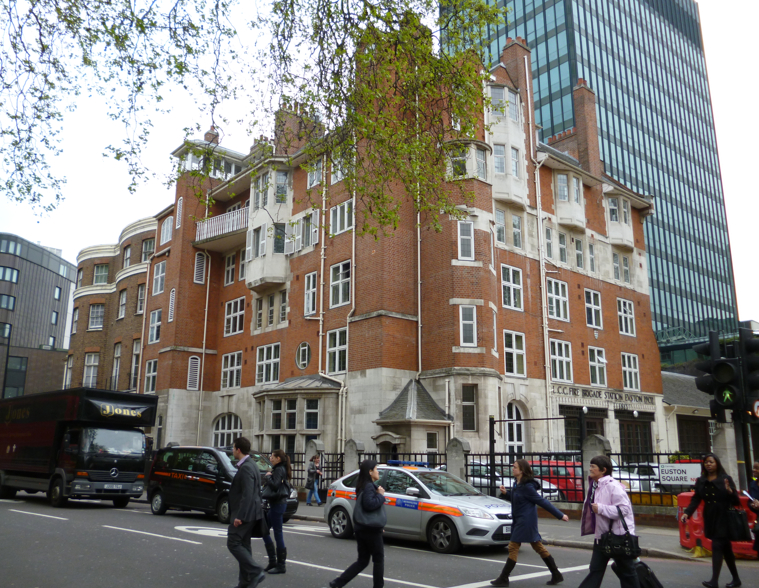
In the spring of 1941, Winmill wrote in a letter to his friend, Lady Jane Ferrers, a beautiful passage about revisiting London after a long time – and his feelings on walking through the devastation of the latest war damage: ‘This was in the nature of a pilgrimage to stricken London. You remember I went to Newgate Street, Christ’s Hospital, when I was ten – just 66 years ago. Later, I was articled in the City and spent many years in the service of London as a public servant, so I entered into the parts that had been devastated, as into the almost passion of the town, its suffering and its bravery. . . I was thoroughly nerved by the time I got near my old school, and, as I stood in front of Christ’s Church Passage, all I could see was the spire of the church standing, and the shell of the church.
‘Then I turned, and this time saw, for the first time in my life, St Paul’s from Newgate Street; if no one had been there I should have gone down on my knees. There was a sort of mist and smoke, and perhaps dust, but faintly above the cross and the dome were what seemed two eyes – these I at last made out to be the bright points on [anti-aircraft] balloons.
‘On towards Holborn, going west, I passed many places damaged. By this time it had become a sort of exaltation, and so throughout the day. If one could stand what I had seen, one could stand anything.’
Lady Jane replied: ‘Oh how I loved what you said of St Paul’s. I too have a war vision, from the top of a bus. Suddenly the ball and cross high in what one must call “the empyrean” – brilliant sun, and all around a thickish fog. So immutable it looked to me, and so it must have done to you – all the more for wandering through devastation as you did. What a dream walk!’
Further reading: Joyce M Winmill, Charles Canning Winmill: An Architect’s Life by his Daughter (1946)
A picture of the Swiss Cottage fire station can be seen at http://474towin.blogspot.co.uk/2008/06/from-look-out-to-full-blown-fire.html
Of Perry Vale at http://www.sydenhamsociety.com/2010/11/a-history-of-perry-vale-fire-station/
And a selection of shots of the lost Red Cross Street station are on the gallery section of the London Fire Brigade website http://www.london-fire.gov.uk/LFBImageAndPhotoLibrary.asp
25/7/13 Growing Up Around the Bandstand (3): Billie Sivill
Billie was born on the Boundary Estate in 1932. Her parents, Jack and Alice Sivill, were fully involved in local politics and her mother became the mayor of Bethnal Green. Sivill House is named in honour of Alice and Jack – the Berthold Lubetkin-designed housing block on Columbia Road (in fact, it stands on the site of Nova Scotia Gardens, the site of the Italian Boy killings).
Here, Billie recalls her parents and their time on the estate:
‘Both Mum and Dad came from Lincolnshire, Mum from Billinghay and Dad from Coningsby. They married there, but when the slump came, Dad tramped down to Stevenage and found work as a navvy. As the years passed he finished up as a clerk of the works. He moved to London and was there for eight years before Mum joined him with her siblings – six brothers and a sister. They had a flat in Hoxton, top floor and bug ridden. Every night the flat-irons came out to squash the bugs as they crept up the walls from the flats below. There was an outbreak of smallpox and the borough medical officer called to see how the family were. He remarked how clean the flat was, with scrubbed floorboards, and said, “You’ve done wonders with this flat, but I have a better flat for you in Bethnal Green.”
‘So the family (Mum and Dad and the children, David, Dorothy, Jack and Pat) moved to 6 Cookham Buildings on the Boundary Estate. The flat had three bedrooms. I was the first to be born there, on 13 December 1932, and my sister in 1937, two days after the coronation of George VI, and she won a “coronation cot” – all red, white and blue, donated by the basket-maker in Calvert Avenue.
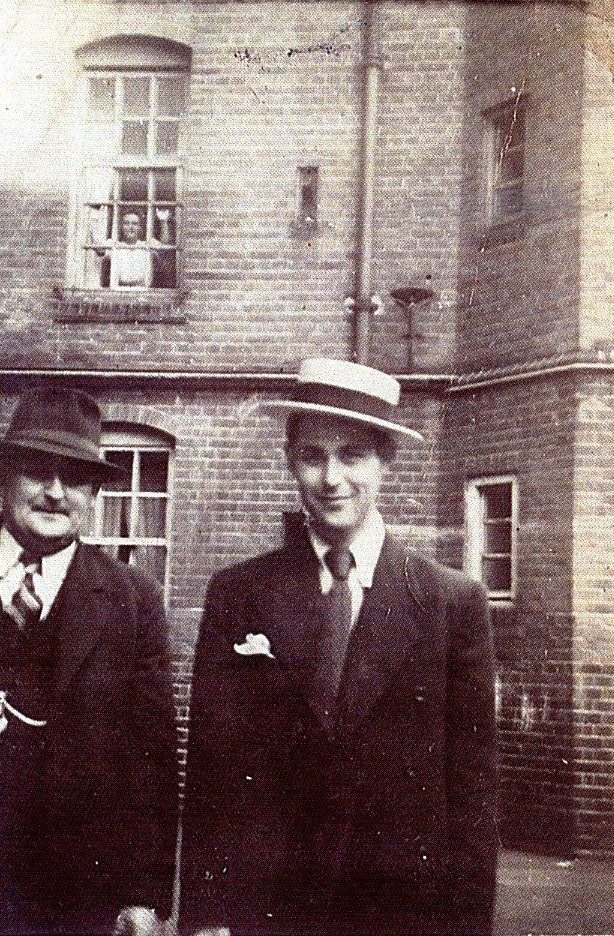
Billie’s mum up at the window of Cookham Buildings, and in the foreground, Billie’s dad and her brother, David.
‘After the war, Mum and some tenants restarted the old tenants’ association and they managed to get the London County Council to build them a hut. This was used for meetings, but also as a social club, where people of the Boundary Estate could come and chat, dance, play cards and billiards, and it was also somewhere for people who lived alone to have some conversation and company. They called the hut De Carte House, in memory of the man who started the original tenants’ association.
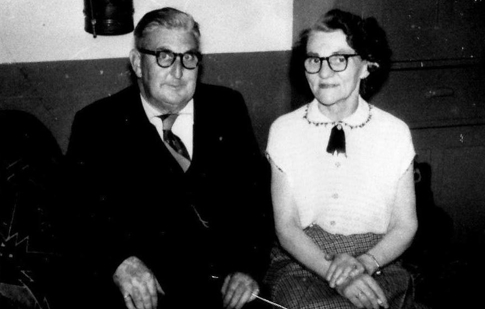
Billie’s mum and dad at De Carte House.
‘An elderly Jewish couple who lived at number 9 Cookham Buildings would ask us to turn on the lights and to light their fire on their sabbath. The Hillers, another Jewish family, who lived at No 1, were friends of ours, and during the war when food was rationed, Mum would knock on the pipe by the side of the kitchen sink to let Sarah downstairs know when a “cuppa” was ready. Sarah would do the same. Sarah’s son, Tony, writes music and won the European Song Contest with “Save Your Kisses For Me”, which he co-wrote.
‘There was a list on the landing of the flats saying whose turn it was to wash the landing and stairs to the next floor down. Everyone took their turn and it was never dirty. We never saw a broken window or graffiti on the walls. The head porter, Mr Heyho, was quick to spot any children who had chalk in their hands! There were really very few disagreements between neighbours, and any that did happen were quickly forgotten. It was a nice place to live.’
*******************************
‘Mum was on the Borough Council – she was voted in, in the west ward, in 1935 and she served until the boroughs were merged in 1965. Dad, too, served on the council, I believe initially as an alderman, but later by election in the west ward. They were both on many of the main committees and Mum was also a manager and governor of several schools. Both were very outspoken and didn’t suffer fools gladly or allow themselves to be sidetracked by anyone. In 1957, Mum was elected mayor of Bethnal Green, and my sister Dorothy was her mayoress.
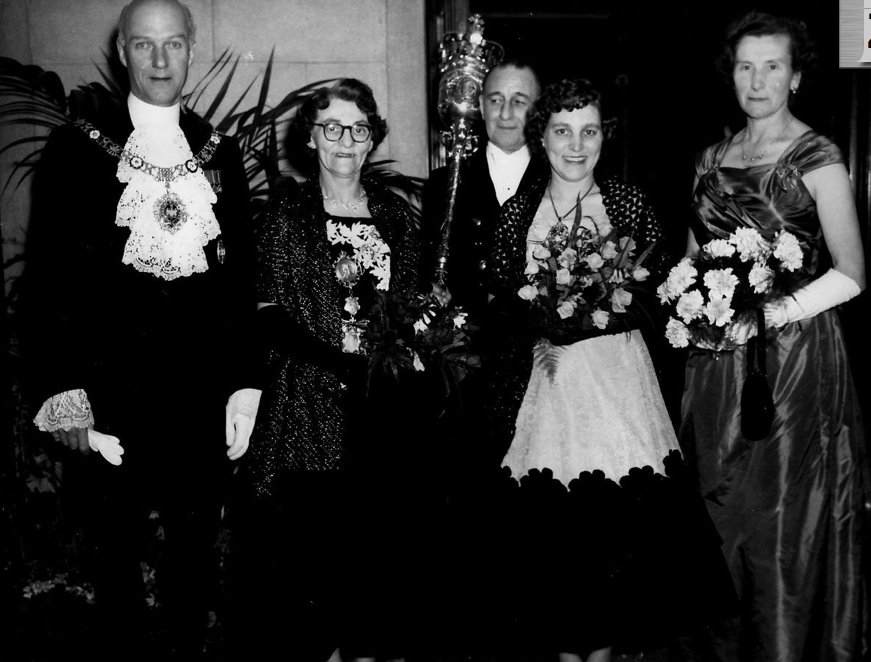
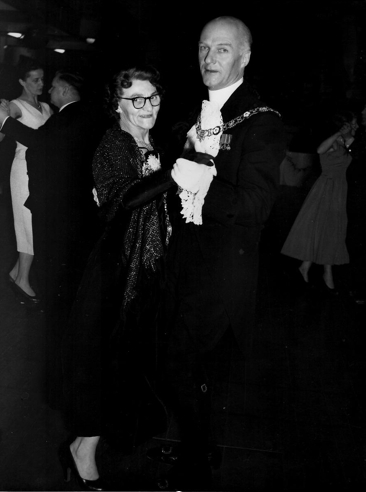
‘The Dorset Estate off Hackney Road was opened while Mum was mayor, and it was named after the Tolpuddle Martyrs. Individual blocks were named after the men who were transported to Australia for forming a trades union. At a later date, the tallest block was named after Mum and Dad – Sivill House [below]. Thinking about it now, it seems appropriate, as our own home was always full of people!
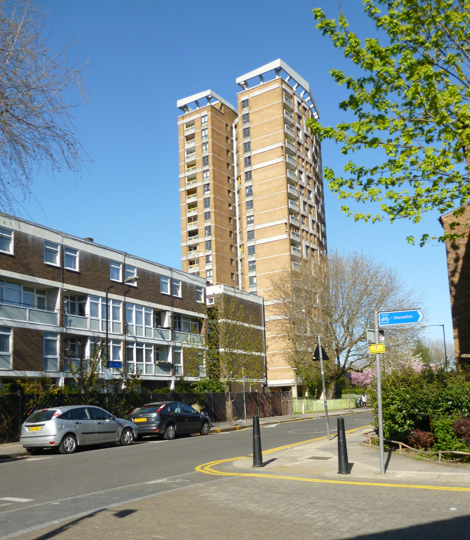
‘Dad died in February 1970 and Mum ten months later. At both their funerals the members of the residents’ association, some very old, waited outside the hut to pay their respects. At Dad’s funeral all the brothers of Mum who were still alive thanked Mum and Dad for bringing them up. The most touching thing at Mum’s funeral was when our Jewish neighbour, Joe Weinberg, stood up and said, “Look around you and you will see a selection of people here today from all religions and colour. It’s like the United Nations, and that’s as Jack and Alice lived their lives.” I looked around the table, for I hadn’t really noticed – they were all just friends to us – and I found myself feeling very proud of Mum and Dad.
‘They were totally dedicated to the work they did in our home, on the council and on the Boundary Estate. I believe they did it with love and hard work, just as they lived their lives. Yes, I am very proud of both of them.’
© Billie Sivill.
To see some photos of the Lubetkin staircase inside Sivill House (Lubetkin also designed the Penguin House at London Zoo – you’ll spot the echoes), go to www.flickriver.com/search/sivill+house/
and http://flickrhivemind.net/Tags/architecture,sivillhouse/Interesting
10/7/13 ‘Well done, Mr Wise!’ (Sadly, not a relative of mine. . .)
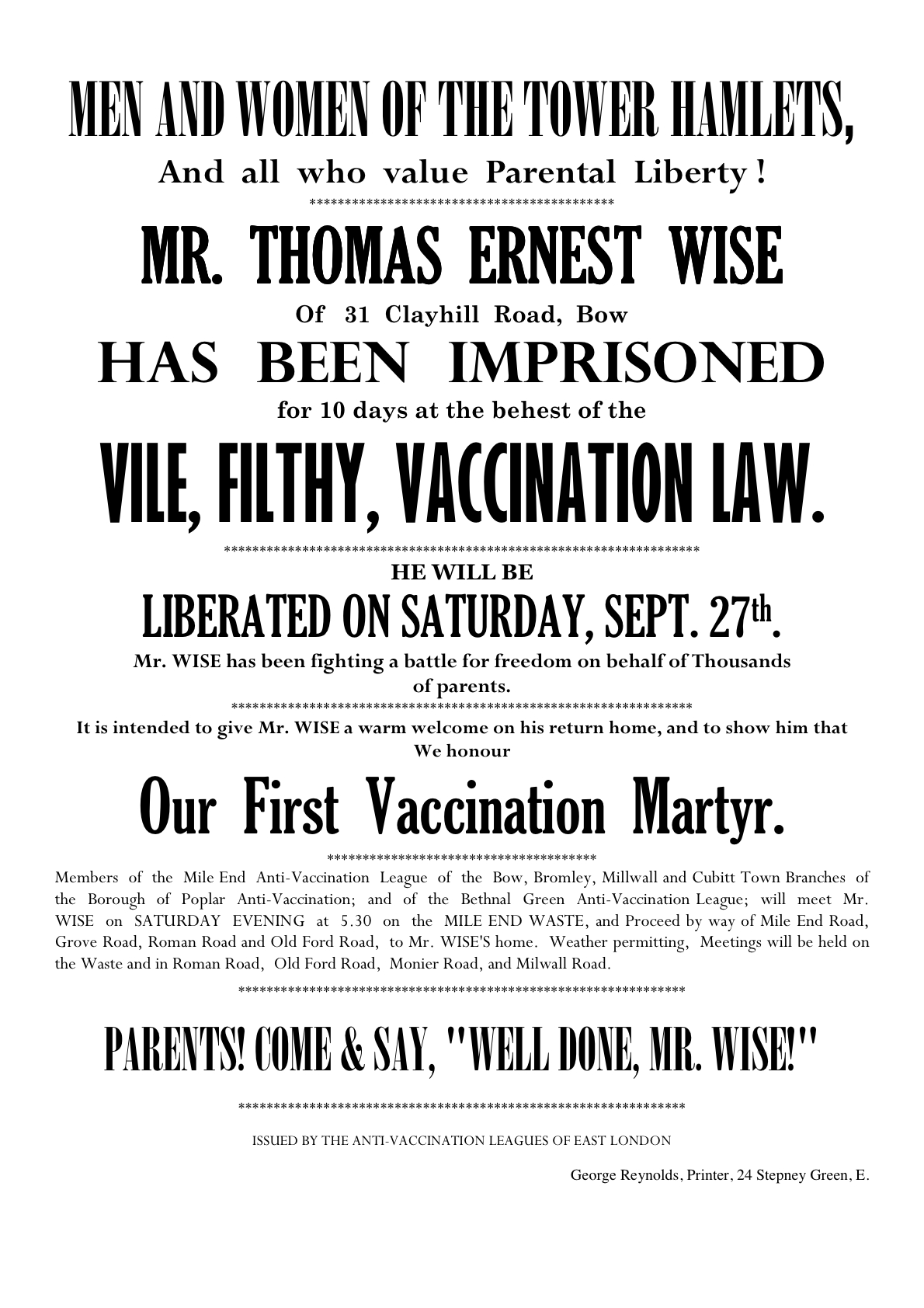
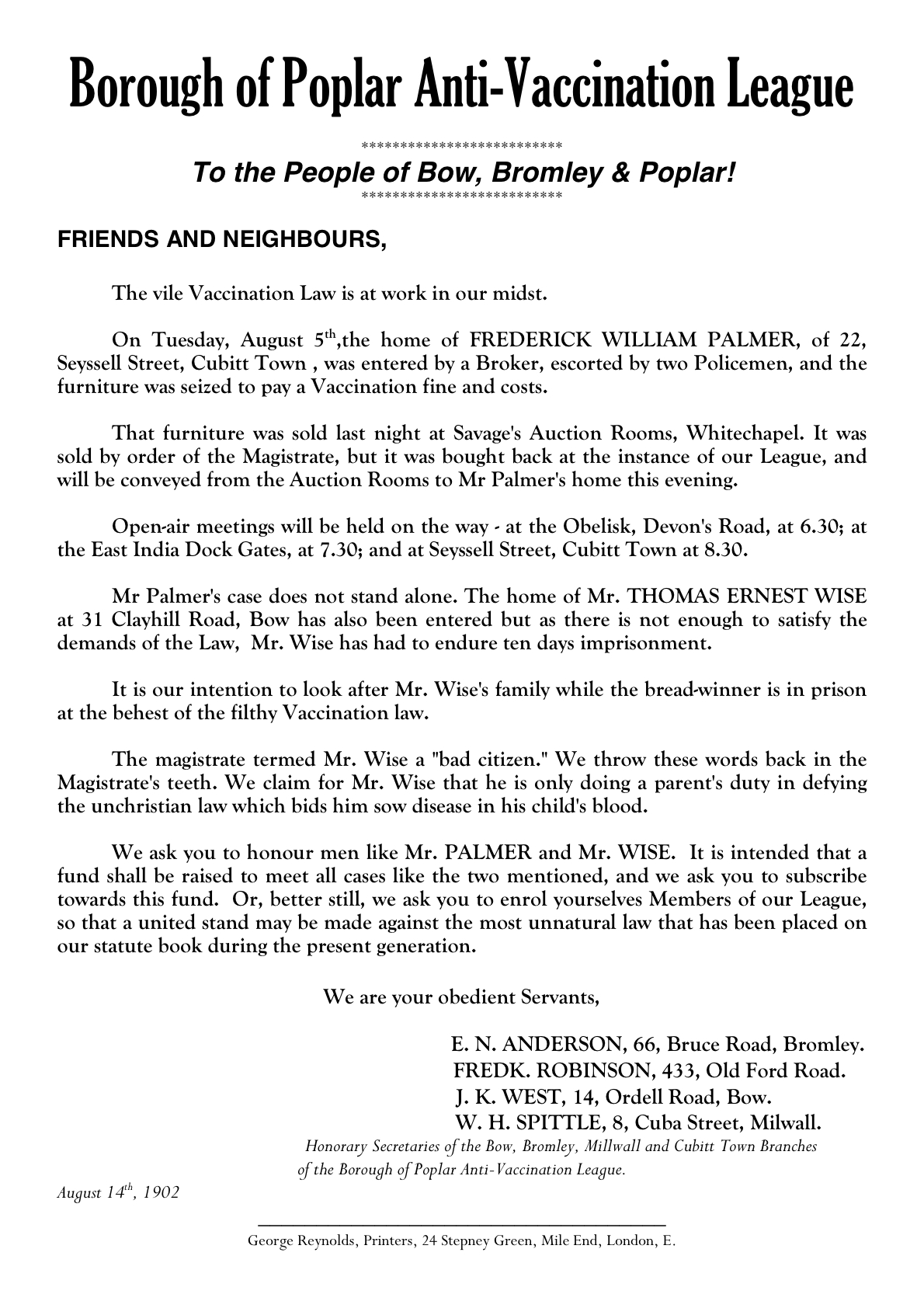
The Anti-Vaccination movement of the late 19th-century had a particularly strong cell in the East End; in the Old Nichol, home to the poorest East Londoners, destitute parents faced cumulative fines for refusing to allow doctors to vaccinate their infants against smallpox.
All classes and both genders united against what was perceived as state intrusion into the bodies of children – a state that made no other efforts whatsoever to keep them alive and healthy. Under the 1853 Vaccination Act, it was mandatory for babies to be vaccinated against smallpox. The vaccines were administered to the poor by doctors hired by the local Guardians of the Poor, who were paid a sum for every baby they vaccinated; for some, this looked like profiteering by the medical profession at the expense of those powerless to prevent the intervention.
Mr Wise was one of the most vehement of the East London protestors. (My father’s ancestors all hail from Edinburgh and the far north-east of England, and the diligent genealogist in our family hasn’t found any blood-line Wises in East London So Thomas Ernest the Martyr isn’t one of my forebears!)
It was suspected in some quarters (and even some medical men concurred) that the quality of vaccine was not always good, and that the vaccination programme as a whole had not clearly been proven to be effective; further, that the act of breaking a small child’s skin could lead to sepsis, and death.
In 1898, and in 1907, opt-outs to the compulsion element were brought in, though it remained difficult for parents to acquire the necessary legal exemptions.
Although this image relates to the American anti-vaccination movement, it captures the fears of the British campaigners http://www.historyofvaccines.org/content/vaccination-order.
Further reading: Nadja Durbach’s Bodily Matters: The Anti-Vaccination Movement in England, 1853-1907 (Duke University Press, 2005)
25/6/13 What lies beneath
In the summer of 2009, the Museum of London’s Archaeological Service
(MOLA) dug a trench on the Arnold Circus hillock, close to the
bandstand. The gardens at the centre of the Boundary Estate had been
closed for a big replanting and resurfacing project, which gave the
Museum the opportunity to settle once and for all the famous local
rumour: that the rubble of the Old Nichol demolitions lay beneath the
raised gardens.
The MOLA moles unearthed not just spoil from the Nichol buildings but
detritus that suggests the space was used as a local dump as it lay
exposed, while the Estate was under construction (see pic at the bottom, from the
London Metropolitan Archives’ collection).
The shells of seafood snacks, plus broken clay pipes (both of which
are very common finds on most London digs) were everyday throwaway
items in the 19th century; think fag-ends and Pret-A-Manger wrappers. More site-specific were the footwear offcuts: shoe-making and cobbling
were among the major trades in the Nichol (along with clothing and
furniture manufacture), which explains the discovery of many soles,
uppers and buckles; the earliest find was a satin slipper from the
18th century, its kitten heel still attached.
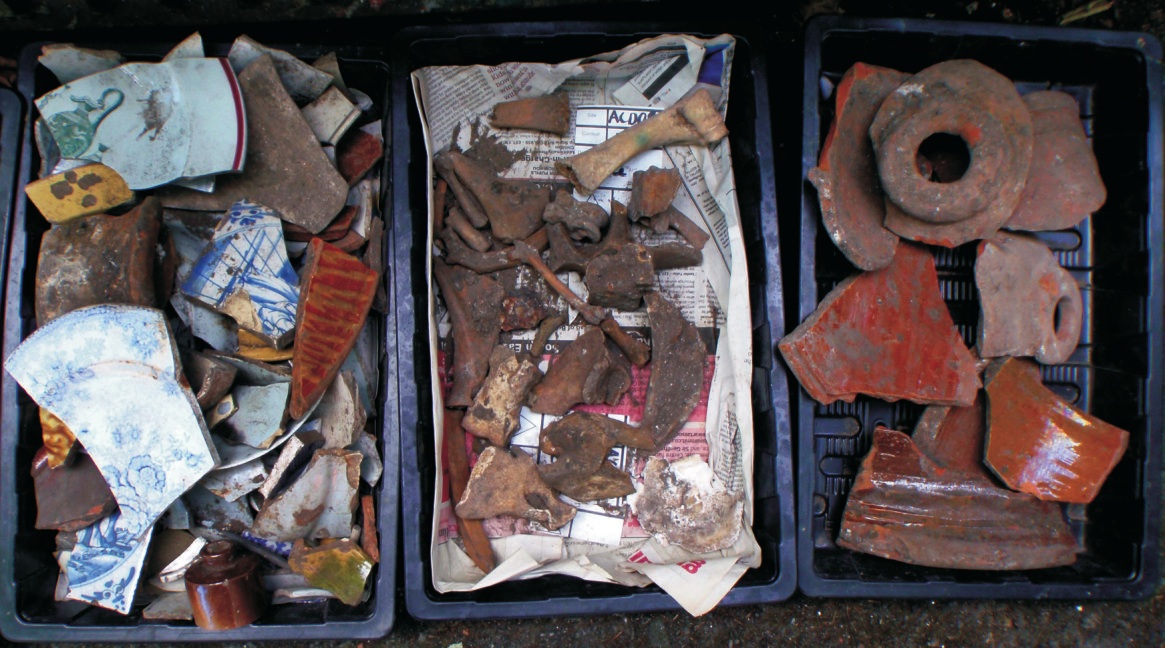
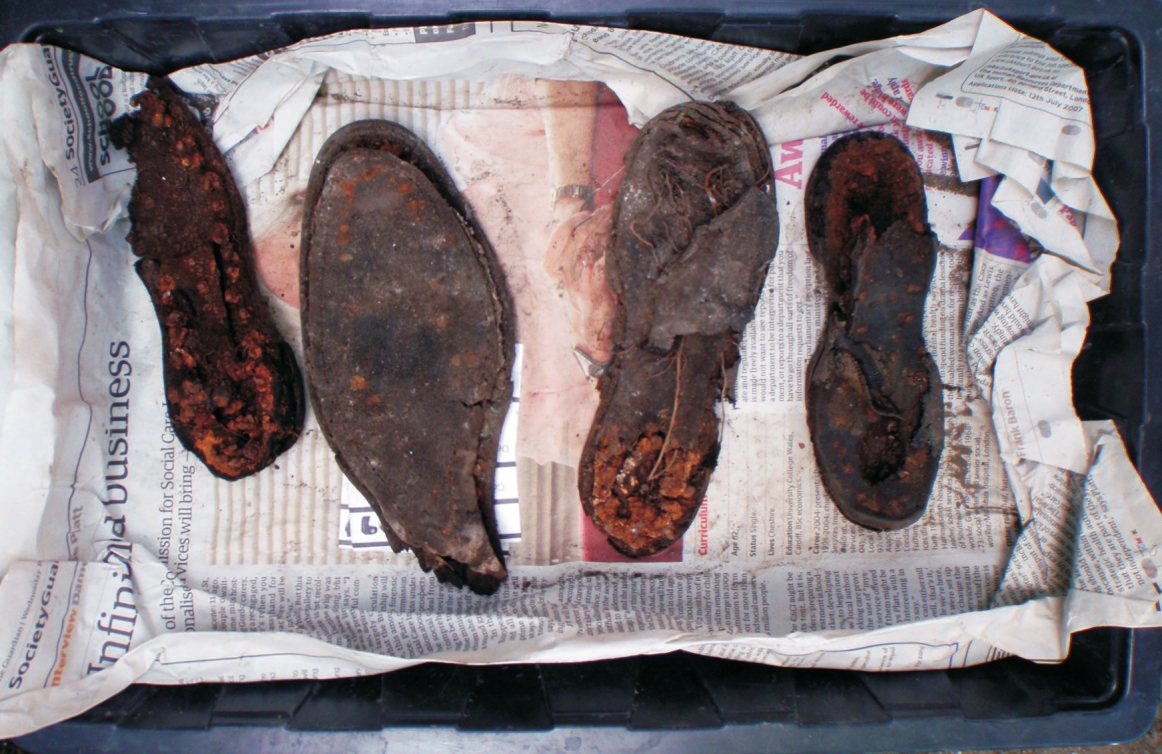
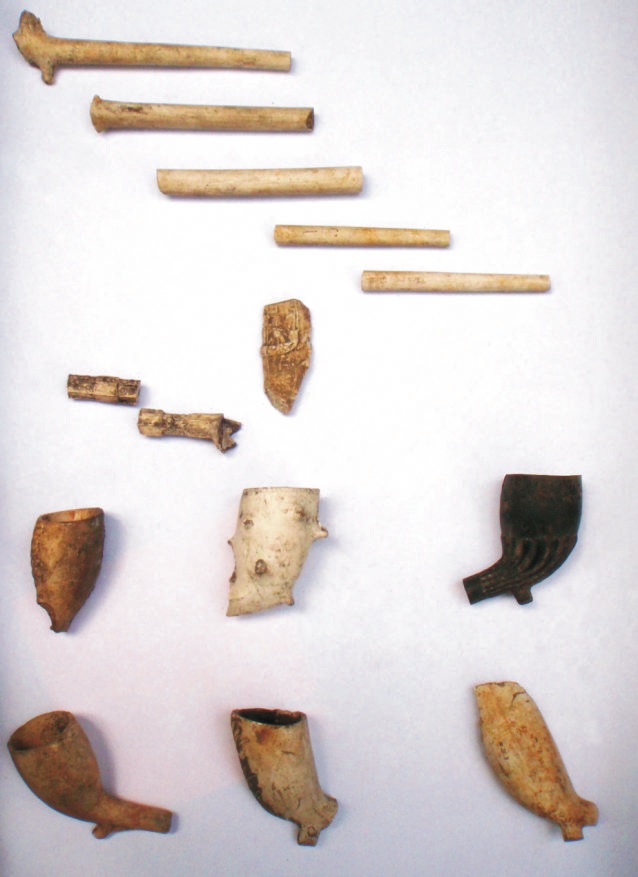
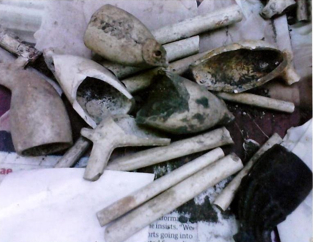
All sorts of crockery, from different decades – much of it extremely
pretty – was found, as well as animal bones from food preparation. A
single human metatarsal turned up – the most enigmatic find of all.
Speculations about clumsy resurrectionists or a psychopathic killer in
the Nichol must be set aside, however, as the most likely explanation
is that a dog or fox had disturbed the earth in one of the local
graveyards and dropped the footbone in the area where the gardens now
stand.
The 42-page story of the dig and the indepth analysis of the finds, with some fab pictures and maps, is available to read here (4.8MB PDF file).
Thanks to the MOLA team’s Karen Thomas, Jo Lyons, Natasha Powers,
Sophie Jackson, Alison Telfer, Dan Nesbitt; and to Lis Clegg for the
pipe photo on the right.
21/5/13 A country house. . . on Old Nichol Street
The photographs below show the interiors of the Cheltenham Ladies’ College
mission settlement on Old Nichol Street, not long after it was opened,
in 1898. Many public schools and some Oxbridge colleges were opening mission houses in poor areas of London, and after a false start further east in Bethnal Green, Cheltenham Ladies’ College arrived in the Old Nichol
– or rather, they turned up just as the last of the slum had come
down, and the Boundary Street Estate was nearing completion.
Today the four-storey building, on the south side of Old Nichol
Street, facing St Hilda’s East Community Centre, is private housing,
and these interiors are long gone. (St Hilda’s East is the mission’s
direct descendant.)
The block was designed, free of charge, by architect Philip Day, whose
wife was an old Cheltonian. One of the first visitors was a reporter
for the Ladies’ Field magazine, who noted its ‘cosy corners, which are
so enchanting a feature of the lovely drawing room (it might be a
country house drawing room instead of one in East London), which were
designed by the Society of Artists, 53 New Bond Street.’ Miss Virtue-Tebb had supplied the Italian photographs for decoration;
Miss Snodgrass had baked the shortbread.
Very, very High Church, the mission house included an oratory, for
prayers, with prie-dieux, and frescoes of scenes from the Bible. One
early volunteer remembered: ‘How easy it was made for us – the
beautiful, inspiring prayers in the Oratory, the quiet library with
its well-chosen books, the orderliness of the house, the cheery social
life and all the old residents so willing to help a newcomer.’
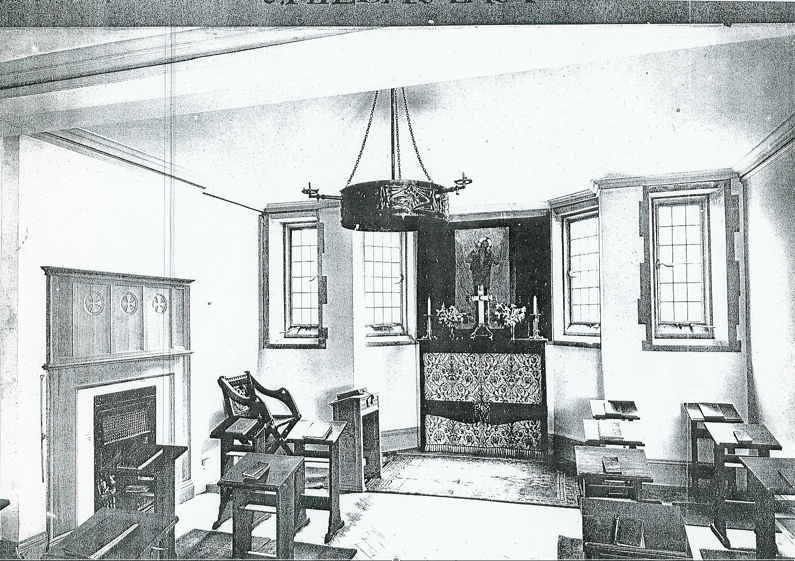
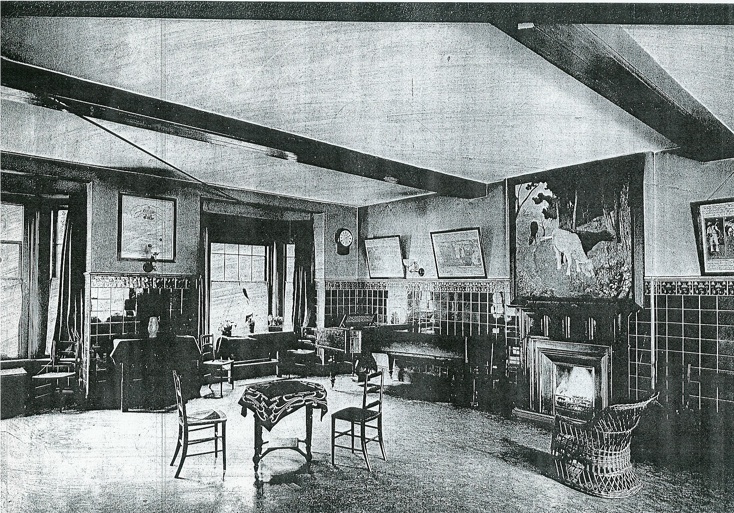
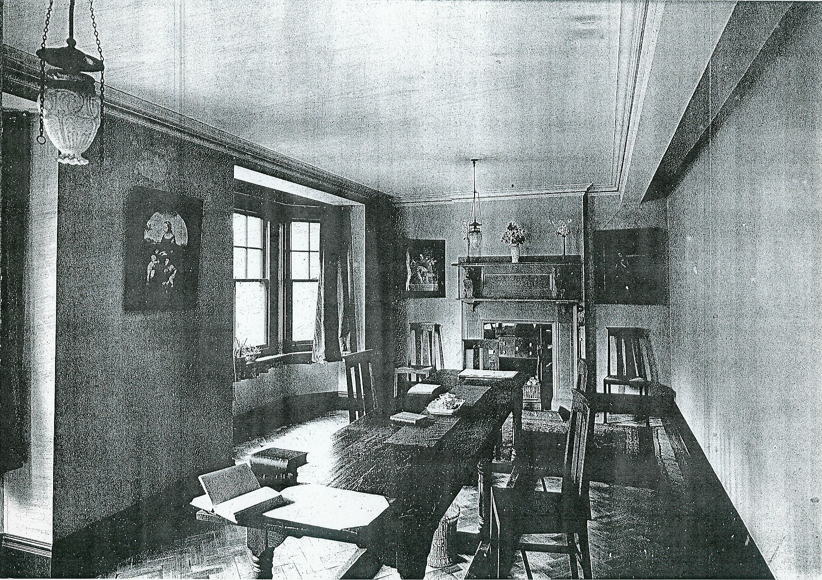
There were a huge number of activities run for the locals by the mission, including Mothers’ Meetings; nursing and infirmary visits; the Factory Girls’ Dinner club; classes in singing, drawing, painting, literature;
dressmaking and elocution; there was a Holiday Fund; a Society for
Helping Young Servants. There were Baby Consultations weekly, with a
woman doctor; the Invalid Children’s Aid Association; the Married
Girls’ Club; Bible Class; the Daffodil Club ‘for Jewish girls’; from
1914, the Soldiers’ Wives’ Club; a Saturday Club for ‘crippled’ boys
to learn woodcarving; later on, a subsidised bookshop for local Board
School-leavers; the Skilled Employment Committee, and lectures by
the Women’s Industrial Council.
This was ‘businesslike otherworldliness’, as one observer put it, and
young women students often quickly found themselves with a lot of
responsibility (and power); one was made manager of a large school in
Bethnal Green Road at the age of 23.
What had started out as traditional charitable work for women soon took on a more ‘social scientific’ tone, and in 1903 the School of Sociology and Social Economics was founded, which was in 1912
incorporated into the London School of Economics. The Cheltenham
Ladies’ College mission workers figure large in the SSSE’s graduates. In the same way that many young men at male mission houses had found, the women discovered that charitable work
and investigating poverty brought a sense of freedom – a
liberation from others’ expectations of them, plus a new sense of direction in
life.
10/5/13 The Boundary Street Laundry
These pictures were taken much later than you might think at an initial glance. This was the 1960s, and these women had inherited an original problem of the Boundary Street Estate: the London County Council had decreed that there was to be no clothes washing and drying within the flats themselves. And so the Estate’s central laundry on Montclare Street was where the huge weekly wash had to take place.
The laundry had 42 troughs, 42 drying horses, three centrifugal wringing machines, three box mangles and one roller mangle. In an annexe were 12 baths and a cold-water shower, for those flats with no bathroom. The whole lot was powered by a massive boiler which was kept fed by the Estate’s stoker.
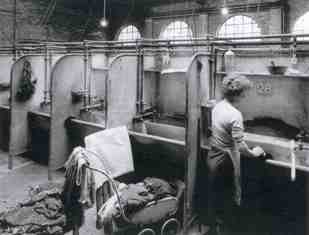
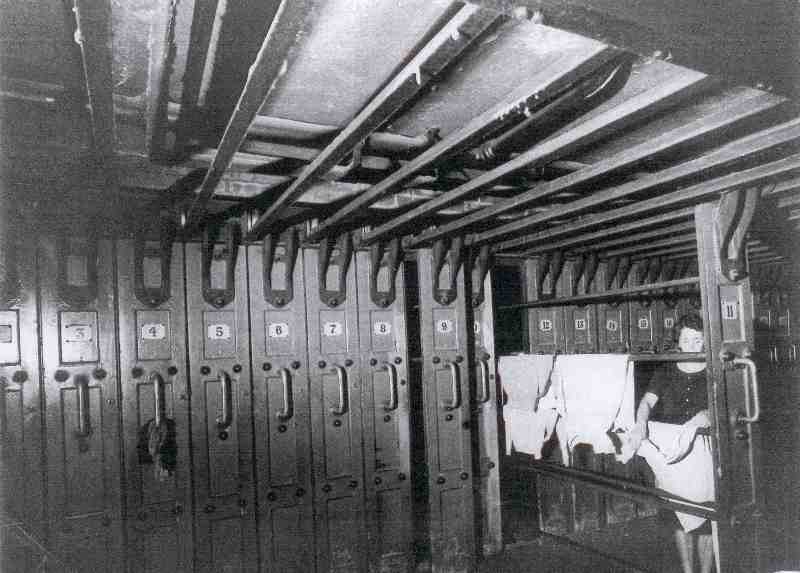
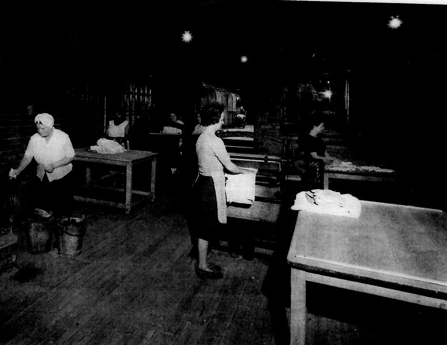
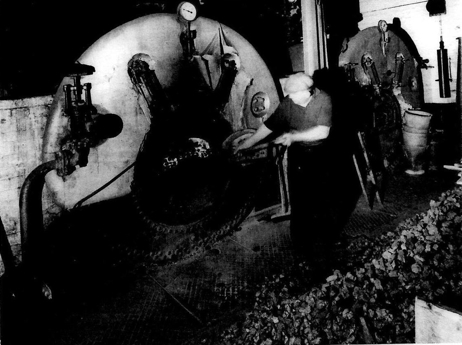
The photographs above can be found in box 28.75 BOU at the London Metropolitan Archives, and copies can be purchased. LMA, 40 Northampton Road, London EC1. Tel: 020 7332 3820 www.cityoflondon.gov.uk/things-to-do/visiting-the-city/archives-and-city-history/london-metropolitan-archives/visitor-information/Pages/default.aspx
Despite a major refurbishment of the facilities in 1946 the laundry appears to have remained a bit of a grim and forbidding place. It had been designed by LCC architect William Hynam, who was also responsible for Wargrave Buildings (1897) and Benson Buildings (1898) on the Estate.
The LCC stated at the time: ‘The Council, holding as it does a strong opinion that the washing and drying of clothes should not be done in the tenements themselves, has erected a steam laundry in a central position for the use of the tenants of the whole of the dwellings on the area. In addition to the apparatus for washing and drying clothes, which is of the most approved type, baths and reading and recreation rooms are provided in the laundry buildings.’
One of the aspects of slum housing that troubled medical men and sanitary inspectors was the ubiquitous washing line that festooned the tiny rooms (see drawing of an Old Nichol home below). It was believed that this contributed to the damp environments that were blamed for a huge range of illnesses, not least the chest, lung and throat diseases that were responsible for an estimated one-third of deaths each year in Bethnal Green at the end of the 19th century.
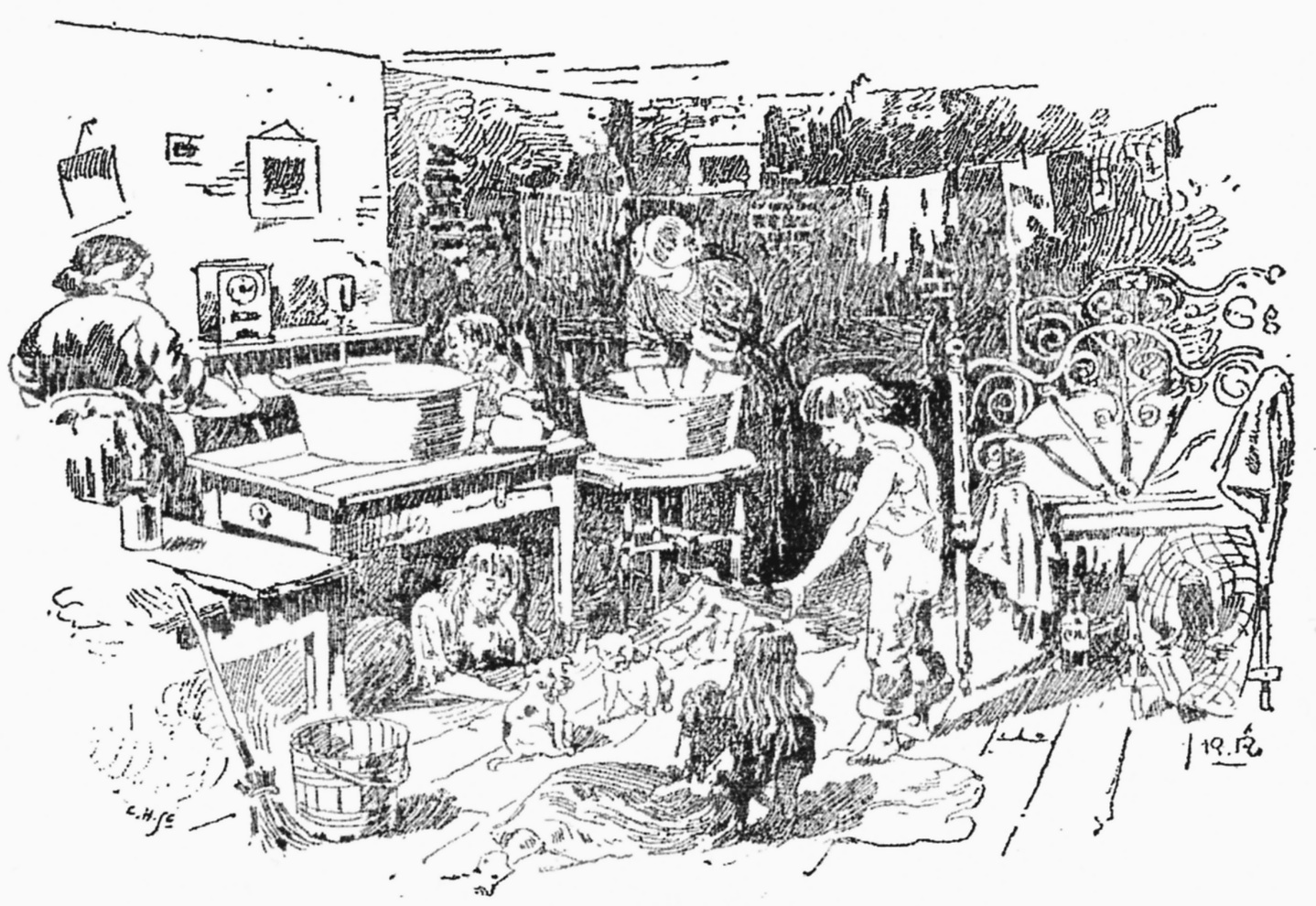
4/5/13 St Philip’s Church, Swanfield Street (formerly called Mount Street)
Shortly before Streatley Buildings was demolished (see story below), its neighbour on Swanfield Street, St Philip’s Church, was also pulled down, along with its rather terrifying vicarage (a home from home for Norman Bates and his mom).
There are a few eyewitness accounts of St Philip’s dating from the time when the Old Nichol stood directly opposite. One of Charles Booth’s researchers for the Life and Labour of the People in London survey wrote: ‘At St Philip’s nearby, a gloomy church, there were about 30 people [worshipping] in the morning, no clergy were visible. The schoolchildren occupied a set of pews in the centre. The main peculiarity was the way in which inside and outside the church, rice and little discs of coloured paper were scattered, witness to the weddings of yesterday and to a lack of sweeping up afterwards.’
During the 1880s and 1890s, Reverend Robert Loveridge of St Philip’s worked hard to try to alleviate some of the worst suffering of the people of the Nichol – of the children in particular. Forty per cent of the slum’s population were under the age of sixteen, and Reverend Loveridge’s vast Day School and Sunday School attracted around 2,200 pupils; his ‘Little Dots’ kindergarten catered for the very youngest. He was assisted by a curate, a lay reader, a nurse, two ‘birth women’ (ie midwives), plus forty voluntary workers. At the St Philip’s Mothers’ Meetings and needlework club, women were paid 2d an hour and kept the items they made. His Temperance Society (the teetotallers) had 130 members. (One of Reverend Loveridge’s descendants has been in touch with me, and I shall be posting his story and pictures later this summer.)
The same Booth survey worker was shown around the St Philip’s Day School and was not impressed: ‘a poor building. The children for the most part looked fat and adequately fed, but seem very poorly clad, especially among the boys. The teachers seem a very poor-looking lot and I should think the sooner the whole thing is swept away and the children gathered into a Board School the better.’ That is exactly what happened, with the Nichol’s two massive Board Schools taking over almost all the local educational work by the end of the century ( with the exception of the Sunday Schools).
The photos below show the tearing down of St Philip’s in the late 1960s; Streatley Buildings are also visible, on the far left of the picture below, at bottom left. These photographs and the Victorian illustration are from the Tower Hamlets Local History Library and Archives, 277 Bancroft Road, E1 4DQ, tel: 020 7364 1290. localhistory@towerhamlets.gov.uk
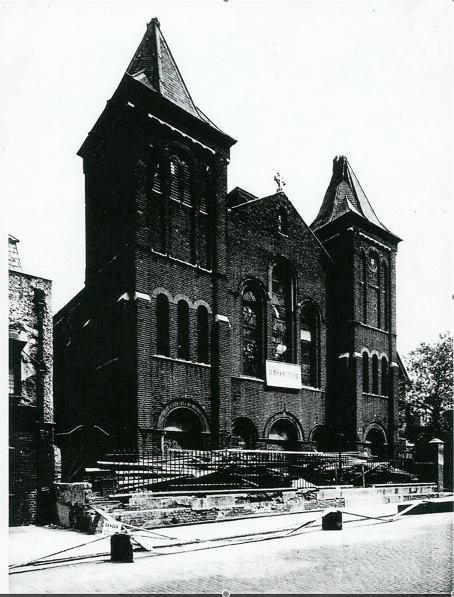
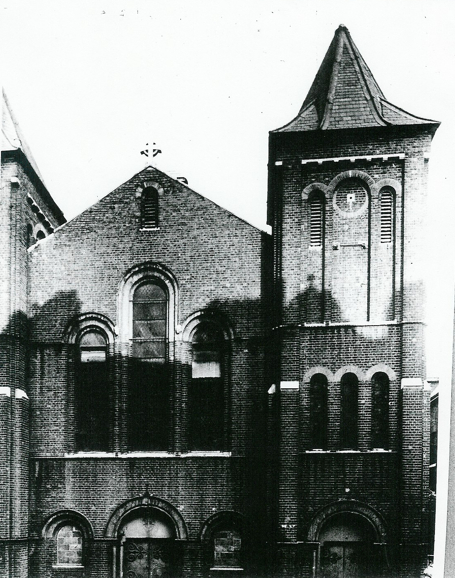
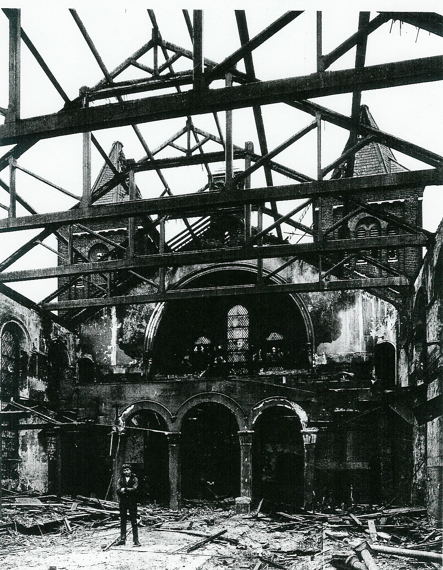
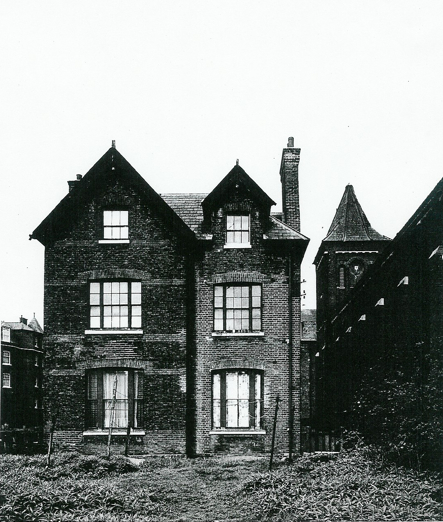
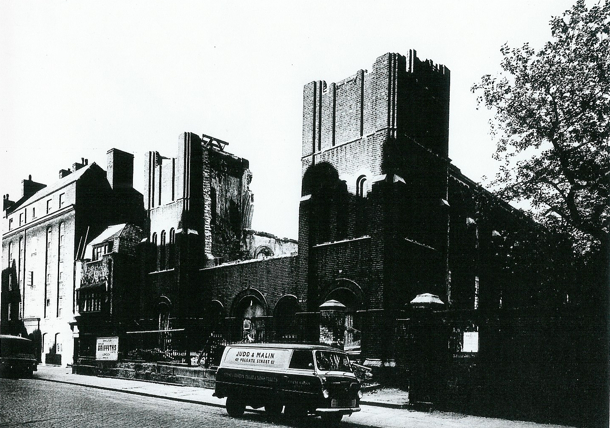
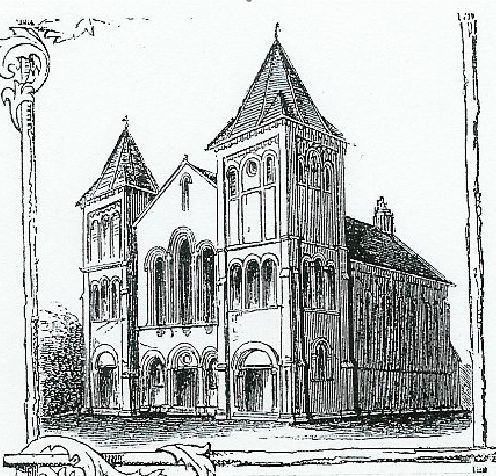
30/4/13 Streatley Buildings – the demolished Boundary Street block
Only one of the original Boundary Street blocks has been demolished. Streatley Buildings (below) stood on the eastern side of Swanfield Street, opposite Taplow and Sunbury Buildings. It was one of the very earliest blocks to be completed in the 1890s and showed none of the flamboyance of the rest of the estate. It would also turn out to be the least salubrious of the tenements, with a bad damp problem and an inconvenient arrangement of rooms, passageways and external corridor access. By the time it was condemned, in 1969, there were still very few bathrooms in the flats. In addition, the balconies were judged to be structurally unsafe.
A letter from the London County Council architects’/property division, dated 22 April 1896, on the naming of the Estate’s buildings, stated that ‘the names...are suggested by the villages on the Thames between London and Oxford and they occur to me to offer the advantage of being terse, euphemistic and unfamiliar in London street nomenclature’. Streatley is a beautiful Berkshire village eight miles from Reading.
Streatley Buildings was unusual in the 1890s for have a female caretaker, Mrs Kilbey, appointed by the London County Council, who were impressed by her supervision of another large block, in Spitalfields. Mrs Kilbey was not overpaid for her role, at just 12 shillings a week; but she eventually got a raise, to 20s a week, plus her rent-free tiny living quarters.
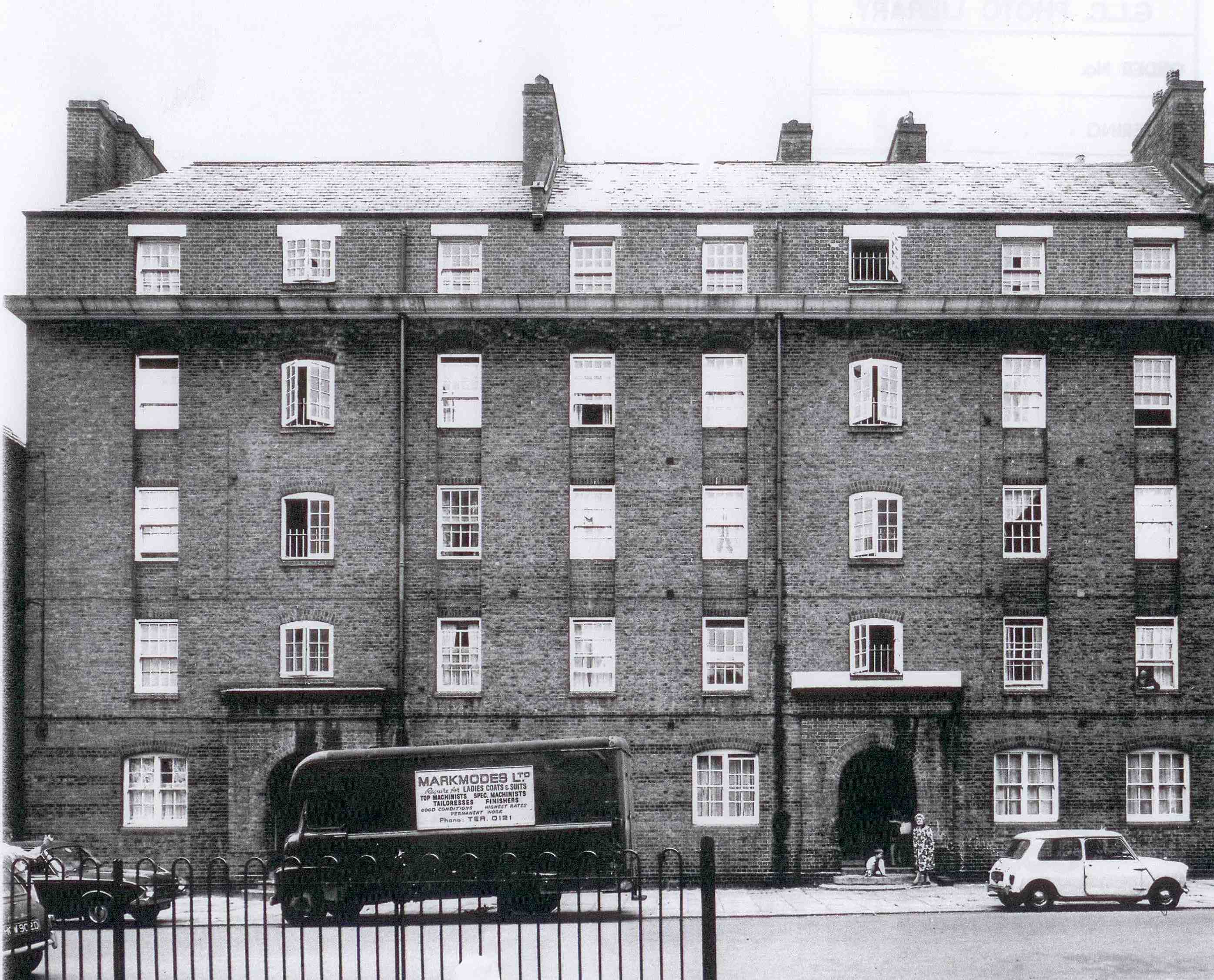
Pictures of Streatley Buildings, and the rest of the Estate, can be found in box 28.75 BOU at the London Metropolitan Archives, 40 Northampton Road, London EC1. Tel: 020 7332 3820 www.cityoflondon.gov.uk/things-to-do/visiting-the-city/archives-and-city-history/london-metropolitan-archives/visitor-information/Pages/default.aspx
27/4/13 Cheap Clothes and Nasty
The Old Nichol was one of the battlegrounds of the factory/workshop inspectorate, who sought to stamp out the appalling physical environments in which mass-market clothing and footwear were produced. This week’s tragedy in Bangladesh, in which at least 1,000 garment-workers have died, together with last November’s factory fire in Dhaka, which killed 117 workers, have raised issues and started debates that echo those of the late-Victorian era. We all laugh at Health & Safety and the Men from the Ministry; but it was all ushered in for a good reason.
Much earlier in the century, in 1850, Charles Kingsley, author of The Water Babies, wrote an influential polemic, ‘Cheap Clothes and Nasty’, about the sweated trades of the East End, which supplied the West End with cut-price consumer goods.
The piece is available to read on Dr Marjorie Blay’s site The Peel Web, at
http://www.historyhome.co.uk/peel/economic/sweat.htm
23/4/13 A Child of the Nichol – anonymous
A gentleman from the north of England wrote to me: ‘My late father was born and grew up in Bethnal Green and his forebears all came from the Old Nichol. In fact, his grandmother, Cordelia Craig (née Shearing), was born at 15 Collingwood Street in the heart of the Nichol on 1 June 1853. In 1891 Cordelia and her husband, Thomas, were living with six of their children at 4 Half Nichol Street, sharing the house with four other families. My grandmother, Mary Ann Craig, was born at 4 Cooper’s Gardens, just north of the Nichol,* on 31 August 1883. She later worked as a french polisher; other family trades of the Craigs and the Shearings were bootmaking and bedstead-making.
‘Some of the family had been weavers who had come down from near Norwich, when trade was bad there, in search of work. But – as it did for so many others – the trail ended in the crowded slums of Bethnal Green. Some of my forebears lived at 7 Virginia Row/Road and others at 10 Mount Street, both in the Nichol. Various of the children were baptised at St Philip’s, Mount Street.
‘Regarding my father and his memories. . . how can I put this? I’m sure you’ll know that a lot of people (especially elderly people) can be quite sensitive about personal memories. You see, my father was born in the Bethnal Green Workhouse. I only discovered this after he died. Admittedly, my grandmother was only there for my father’s birth, in June 1903, and stayed two weeks before returning to her mother, Cordelia. My father had a hard life in certain ways, but he was a real chirpy Cockney, with a wonderful sense of humour, right up to the time he died, in 1961. He talked a lot about Bethnal Green and particularly about street life and about his contact with the Jewish community: he acted as a “shabbas boy” – being a gentile, he would be employed for a few coppers to light the fires and lamps in Jewish homes on their Sabbath.
‘His stepfather made rocking horses and my father did the deliveries, first with a horse-and-cart and then with motorised transport. The firm later became general hauliers. This all took place around Virginia Row/Road and later, farther east, in Mansfield Street.
‘Despite the good work done by various individuals to help the poor of the Nichol, I suspect certain of them were using the inhabitants for their own ends. Non-judgmental, no-strings-attached assistance is a rare but necessary commodity for all those who seek to alleviate society’s problems.’
* Cooper’s Gardens is no longer there. It stood between today’s Austin Street and Baker’s Rents .
8/4/13 Whitechapel by Night, Socialism, Getting the Führer all Wrong – and a Ripper conundrum
Arthur Pillans Laurie (1861-1949) was a chemist who pioneered the dating of paintings by analysis of their pigment composition. He would go on to become principal of Heriot-Watt College in Edinburgh. As a young man, Laurie had wanted to learn about the lives of the poor, and like many university undergraduates and graduates, he went to spend time in an East End ‘mission’ in the late 1880s – he chose Toynbee Hall in Whitechapel.
In his 1934 memoir Pictures and Politics: A Book of Reminiscences, he recalled his East End experiences, not least, the evening he believed had come face to face with Jack the Ripper. Remembering his time at Toynbee Hall, Laurie wrote: ‘The West End was gradually becoming aware that a vast industrial population lived beyond Aldgate Pump, with a dead level of poverty governed by a few obscure and corrupt vestries, and with no municipal life. . .
‘Whenever I look back on those days I regret afresh that a narrow doctrinaire Socialism, derived direct from Karl Marx, ultimately obsessed the whole of the working-class movement, with the result that the Socialist Party has proved sterile, and has nothing to show for some fifty years of propaganda. All that has been done to improve social conditions has been done by others outside the Socialist Party. They have obstructed good work more than once, they have occasionally had the sense to be opportunist and adopt the ideas of others, but they have not only failed in themselves, they have prevented many others from being active members of the Party of the Left. The door is closed to the political reformer in this country unless he accepts a dogma. . .
‘There was an atmosphere about Toynbee Hall which irritated us. . . We were supposed to be noble young men engaged in trying to do good to the poor. We did not feel noble and we had no desire to do good to anybody, and were quite incapable of doing so. We wished a closer contact with the people and lives of East London. . . Toynbee Hall was very much in the limelight then, and irritating flocks of gaily arrayed young men and women used to descend upon us from the West End. Slumming became a fashionable amusement. After a good dinner, a crowd of men and women would be personally conducted through the worst slums known, prying into people’s homes and behaving in an intolerable manner. We wanted to get away from all that. I was teaching at the People’s Palace. . . [Hubert Llewellyn] Smith was working for Booth, collecting material for London Labour and the London Poor, [Arthur] Rogers was on the local vestry. . . We had dug ourselves in. We liked East London. The Mile End Road on a Saturday night is the most picturesque street in London. I passed the happiest years of my life in Stepney. East London is real. It is in touch with the facts of life. George Lansbury [Labour MP and leader of the Opposition] is to be respected because he lives in East London, his native city.
‘In the days I speak of, Whitechapel was inhabited by two types of residents in the main – foreign Jews mostly from Poland, and a shifty, semi-criminal population, in the dark and narrow closes and courts behind Toynbee Hall. The two populations were divided by Commercial Street. For neither of these populations had Toynbee Hall any message.
‘[Further east there were] no public institutions, no educational facilities beyond the elementary school, no public opinion, and governed by a few corrupt and incompetent vestries. The remarkable thing is that so vast an area, with no government, remained so peaceful and law-abiding. This area was inhabited by a large artisan and labouring population. Innumerable industries were and are carried on. The ignorance of this vast city on the part of the rest of London was remarkable. They penetrated as far as Whitechapel with its picturesque squalor and degraded population, and imagined that that was East London. The right place for Toynbee Hall was Poplar, or Mile End.
‘On one side of Commercial Street there was a rabbit warren of slums, hardly lighted at all at night, and consisting of narrow streets, with passages and courts opening off which had no lighting, making easy the ghastly murders of Jack the Ripper. Here and there the wide-open doors showed the kitchen and living room of a common lodging house heated by a huge fire where a bloater could be cooked, and with a collection of ruffians round the door whose faces would have made the fortune of a film of the underworld. The respectable inhabitants of Whitechapel complained that this slum district was getting very riotous at night and the police were getting very slack, and suggested a watch committee and nightly patrols between eleven and one.’
This was undertaken by the Toynbee Hall men, who were organised to patrol the district, and to note events without interfering. Often they patrolled alone, and without even the protection of a walking stick. ‘The semi-criminal has no more courage than a rabbit, and behaved accordingly. No Toynbee man was ever molested, and I have always been completely sceptical of the stories of places in London which were not safe to enter at night. I have picked out of the gutter an occasional respectable grocer from the provinces in nothing but shirt and trousers, and in a state of stupor, which suggested drugging, but either drink or love had led to his undoing.
‘Hideous shrieks of “police!” and “murder!” used occasionally to arise, but we learnt to treat them with indifference. I never found that there was any reason for complaining of the police. In those dark and primitive regions they resembled the cadi in the Arabian Nights, kept order, administered a rough justice and were appealed to on all sorts of occasions. A conversation between a thief and a policeman in the midnight hours is very amusing – the thief all oily obsequiousness, the policeman grimly sarcastic.
‘Obtaining a lodging at the police-station was not an unknown device. I watched an old lady one night dancing a wild fandango in the middle of the road, and shrieking out a torrent of obscene abuse at three policemen, watching her and muttering curses. They knew her game. She had no money and was determined to compel them to arrest her. She was disturbing the whole neighbourhood, and sooner or later they would have to run her in.
‘It was during the winter of our patrol that the horrible Jack the Ripper murders began in Whitechapel. . . A cry for help would receive no attention when it was so common. It became our rule to strike a match and light up dark courts and passages and open stairways, with a shudder at what we might see. Occasionally we unearthed a detective standing in a corner, silently waiting. Whitechapel was swarming with detectives hoping to trap the murderer. The strange thing was that a new murder was known in Whitechapel before the police heard of it. One murder was committed in a room. I was told of it at 1am, while patrolling the slums. The police did not know of it it till seven.
‘I believe I saw Jack the Ripper one night while patrolling the slums, but that, as Kipling says, “is another story”.’
Which – can you believe it? – Laurie never goes on to tell (unless it lies somewhere in his private papers, held by Heriot-Watt University). Surely that’s one of the biggest let-down moments in any memoir . . .
********************************
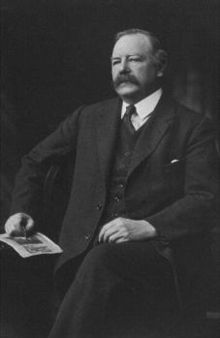
Arthur Pillans Laurie
A strange and unpleasant change in Laurie took place in the later 1930s. He had started as a socialist – even helping to organise strikes; became a Liberal – failing to be elected as an MP, in 1929; and in 1939 wrote a celebratory book about German National Socialism – The Case for Germany. Its dedication reads: ‘It is with admiration and gratitude for the great work he has done for the German people that I dedicate this book to the Führer, APL.’
In this book, Laurie writes admiringly of the peasant stock of both Germany and of his native Scotland, with their long-held folk traditions and their sensible suspicion of city folk and their sophistication. Young Hitler had become a labourer, wrote Laurie, choosing to live penuriously in a cellar with fellow workers, and refusing to join a union. Laurie said that he would not, could not, defend the Führer’s anti-Semitic legislation, but wished to point out that every Continental European nation had undergone its pogroms, so why single out Nazi Germany?
In the year in which the Second World War would begin, Laurie wrote confidently: ‘Those who say that Hitler is out for the conquest of other peoples show a complete misconception of his beliefs.’ Lots of people were getting it wrong about Hitler, of course, but 1939 is pretty close to the wire – pretty close to an accusation of wilful ignorance. (Let’s hope Laurie’s pigment analysis was more successful than his geo-political insights – otherwise there may be some iffy ‘Rembrandts’ knocking around.)
It’s always interesting to read the thoughts of someone who had lived so long and believed so many different things – especially when the writing lacks self-consciousness and courts neither applause nor brickbats. Back in 1934, before his conversion, Laurie had written:
‘Looking back on the years from 1880 to 1914 one sees that a great advance was made in the social conditions of the people. A sturdy Labour group in the House of Commons gingered up the Government of the country, and the medical profession seriously attacked the problems of the general health of the masses of the people, and succeeded in carrying much useful legislation. Radical leaders like Chamberlain in his younger days, and like Lloyd George, carried reform after reform. Municipalities became active, and at last London was given a central government and the London County Council turned a powerful searchlight on many dark places. Politically this advance in education and social welfare is almost entirely due to the Liberal Party, but behind it were armies of keen and enthusiastic workers, guided by the teaching of the medical profession, who had devoted themselves to these problems.
‘Asquith’s great Factory Act brought laundries under the scope of protective legislation. Middle-class suffragettes had opposed this, saying that it interfered with women’s freedom. I still remember the rage which filled us. How I longed to take those women and let them taste the blessings of freedom by a week’s work in a London laundry of those days.
‘It is a foolish and wicked lie that no good can be done by Act of Parliament. When the common people have made up their minds in favour of a social reform, it is only by Act of Parliament that it can be carried out.’
Pictures and Politics: A Book of Reminiscences by Arthur Pillans Laurie, 1934; and The Case for Germany: A Study of Modern Germany, 1939
23/3/13 On the Fiddle
More from the London County Council Housing of the Working Classes Committee. . .
2 November, 1910, S Burgess, housing manager on the Boundary Street Estate, writes to the Committee:
‘I regret to report that Mr Gentry, one of the collectors attached to this department, was last week found to be practising irregularities in connection with the collection of the pence from the automatic gas meters on the Boundary Street Estate, into which the Comptroller and myself are making further investigations. In the meantime, Mr Gentry has been suspended.
‘Mr Gentry has been in the Council’s service for just 10 years. He has always been a very able collector and there has never been any irregularity as regards his rent collection. Mr Gentry feels his present position very acutely, and we are inclined to believe that he was tempted to appropriate the money in the way described owing to domestic trouble, his wife and children having for some time been very ill, involving him in considerable expense.
‘Mr Gentry pleads that he may be retained in the Council’s service, and if the Committee are disposed to leniently consider the case, the housing manager could, by a slight rearrangement of duties, find suitable work for Mr Gentry at a reduced rate of pay that will not involve the receipt of money.’
16 November 1910
G L Gomme, clerk of the Council, replies to Mr Burgess:
‘The honesty of the Council as trustee for the return on the money to its tenants has been betrayed, and I cannot but take the most serious view of the case. I gather the man’s temptation arose from domestic troubles, but whatever its cause, I am unable to advise any other course than dismissal.’
22/3/13 The Takeaway Menu in 1897
Although the flats on the Boundary Street Estate had basic cooking facilities, many of the early residents will have chosen to continue the working-class/lower-middle-class tradition of using a ‘cookshop’. Customers could either take in their own bought produce to be cooked by the shopkeeper, or buy hot food to take away.
Mr F Berringer of 9 Marlow Buildings on the Estate rented a shop in Calvert Avenue as a cookshop. This was his February 1897 tariff for hot food to go:
roast beef, 10d a lb
boiled beef, 8d-10d a lb, according to cut
roast pork, 1s a lb
boiled pork, 10d a lb
roast mutton, 1s a lb
pease pudding, ha’penny per portion
carrots and greens, ha’penny per portion
half a baked sheep’s head, tuppence ha’penny–threepence ha’penny, according to size
sweet puddings, ha’penny–1d according to fruit content
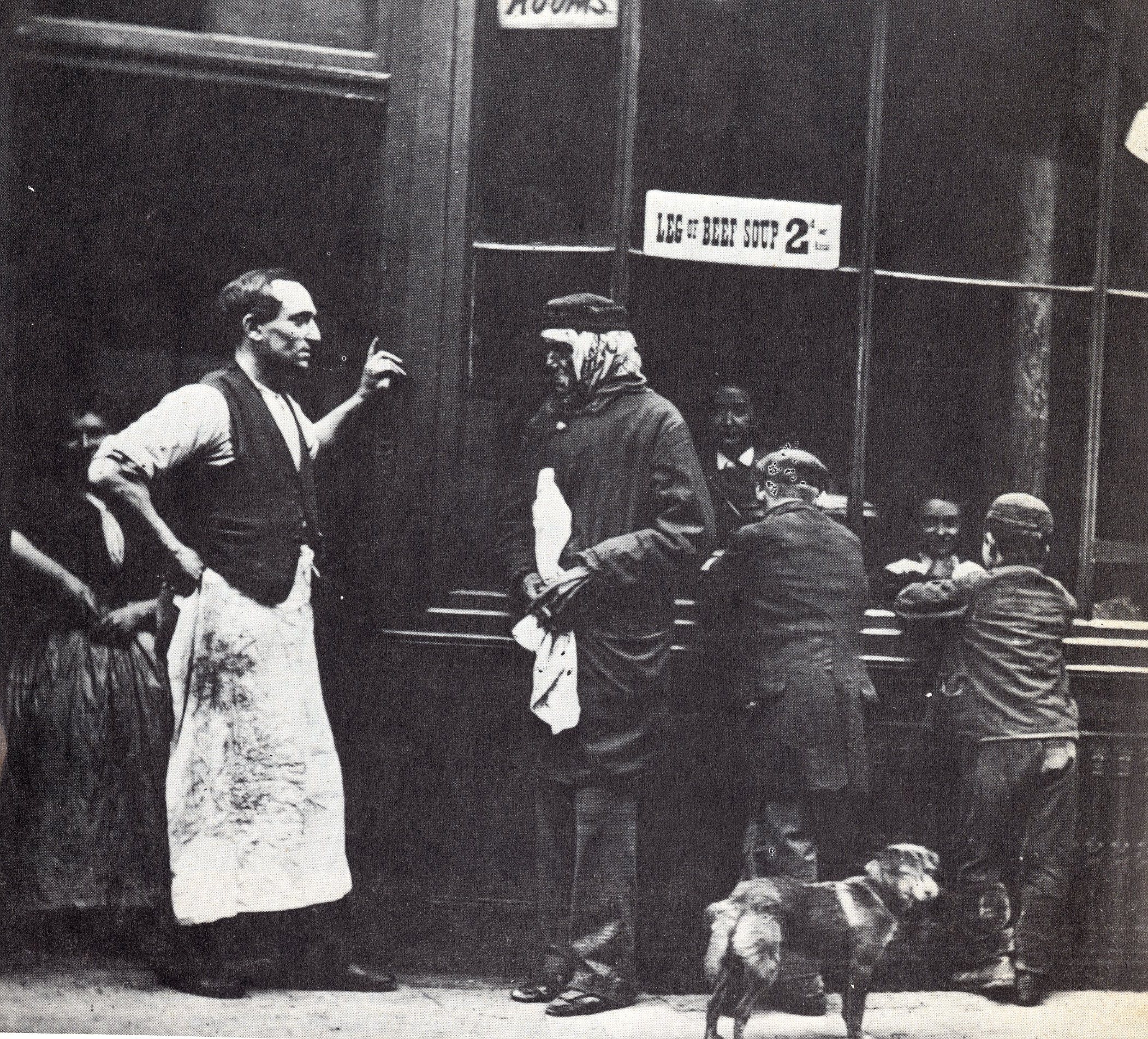
This particular ‘cookshop’ was in Drury Lane and was specially set up by a charity for discharged prisoners, offering cheap
food and
lodgings for those who had just come out of prison. The photograph dates from the mid-1870s.
12/3/13 The Ruined Feng Shui of Calvert Avenue
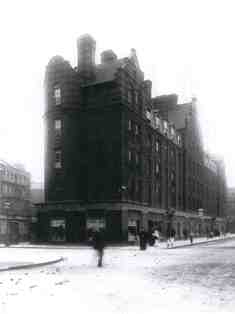
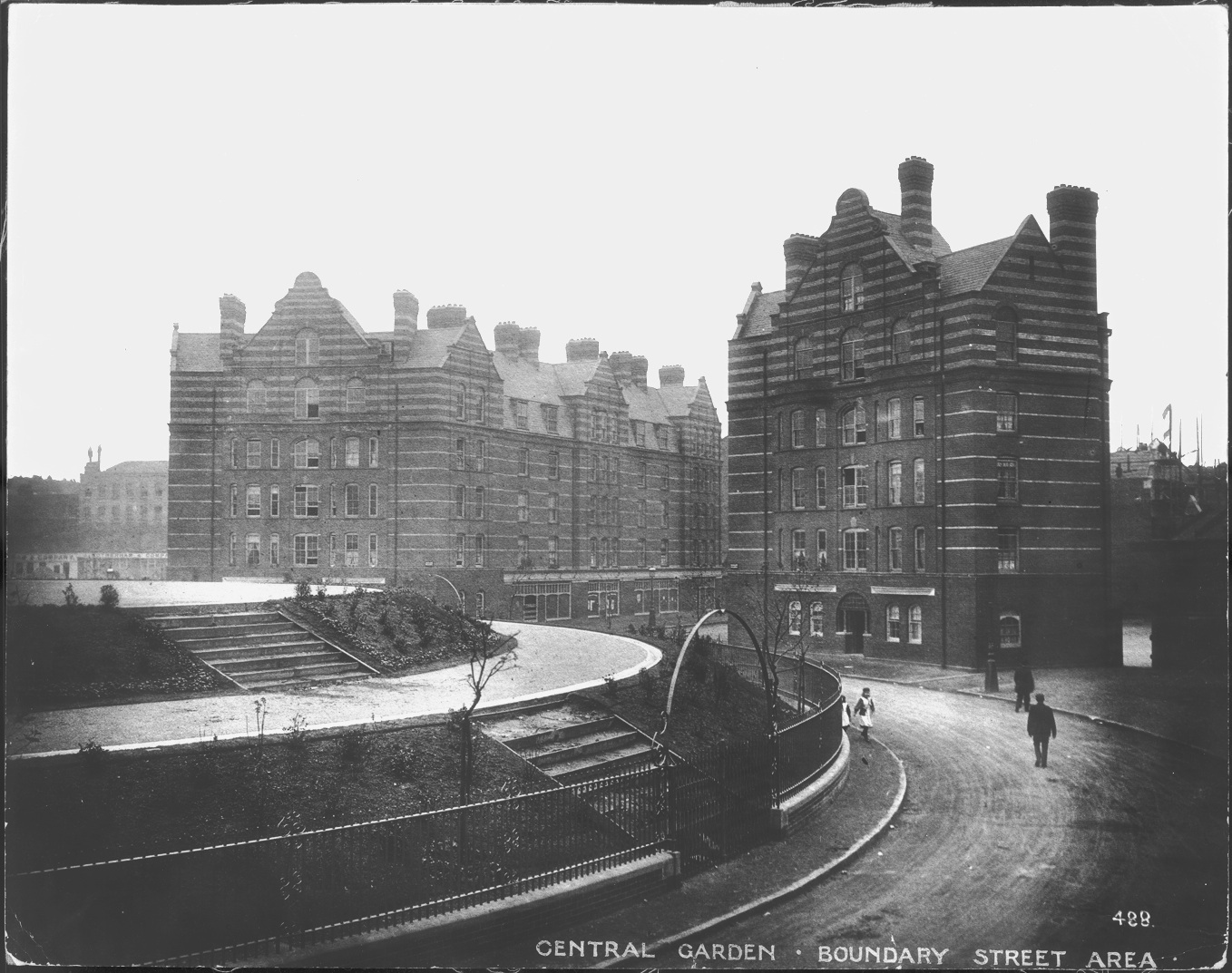
One of the most hilarious items relating to the Boundary Street Estate/Arnold Circus in the London County Council files (held at the London Metropolitan Archives) is this very long letter of complaint by one of the first residents to move into the Estate. (Note the early western use of the concept of feng shui. . .)
26 October 1896
Flat 6, Cleve Buildings, Calvert Avenue
‘I have the misfortune to be a tenant of the LCC and occupy premises at the above address. The rent I pay for three living rooms and a shed in the rear is 25 shillings and 6d per week. I have reluctantly decided to withhold my rent as a protest against the state of affairs which I did not contemplate when I agreed to rent these premises. In opening a shop [Little’s Ham & Beef Shop at 10 Calvert Avenue] and developing a trade, we have spent over £150. We now find ourselves seriously handicapped owing to the delay in completing and populating the estate. Moreover, such is the wretched administration prevailing here that serious discontent exists among the tenants.
‘I took these premises on the distinct understanding that the estate would by this time be fully occupied and that Calvert Avenue would be an important thoroughfare. The buildings are not completed. Work is in fact progressing at a quite leisurely rate – pleasant to those who dislike hurry, but very disheartening to those like myself who have spent their capital in the hope of deriving advantages from the completion of these buildings.
‘As instancing the LCC method, I would mention the wall opposite my shop and enclosing the church [St Leonard’s]. The nucleus of this wall is a hoarding which is utilised as a public urinal by gentlemen and ladies – especially ladies. At night time, owing to the bad lighting of the street, not only is it convenient for that purpose but it also serves as a shelter for those desirous of sexual intercourse. It is also abused by the youths of the street (those perfectly finished articles manufactured in Board Schools) for pyrotechnic displays.
‘Needless to say, the police do not officially patrol Calvert Avenue. There are no wealthy tradesmen in this street to make it worthwhile for any self-respecting bobby to include it in his beat. Hence street robbery is one of the natural activities of the neighbourhood.
‘You may say, “What has this wall and hoarding to do with me?” I reply that the hoarding is an abominable eyesore and spoils the “fengshui” of the place. Besides, do I pay the LCC £70 per year for this? You must see that this filthy hoarding and this badly lighted street detract most materially from the value of business premises.
‘Owing to that obscure craving for spurious art which distinguishes most popularly elected bodies and their architects, a debased form of art must needs be introduced into the design of these “blocks”. To use the jargon, the “treatment” is “Elizabethan”. Hence a multitude of windows which can’t open and which are dangerous to clean; and, of course, no fanlights in the shop fronts – doubtless “picturesque”, but dirt and bad ventilation are the consequences.
‘I don’t, as a rule, attach much, if any, value to female judgment, but I am bound to say that my wife protested against this place from the first and I now see that her opinion was only too sound.
‘One of the alleged advantages offered to intending tenants is that of hot water. I require a deal of hot water in my business but there is an intermittent and uncertain supply due to bad design.
‘The lighting of this building is simply execrable. The gas burners are not lit till late in the evening and are extinguished at about 2am. For many hours the building is in total darkness – a fact which is taken advantage of by thieves and other bad characters. I need hardly say that there is no night-watchman on the premises. Police protection – there is none.
‘Talk of life on an emigrant ship! There is about as much privacy here as on board an ocean liner in steerage. This corridor arrangement is fatal to decency and privacy. One cannot hardly go to the WC without the fact being known to a dozen people. All hands perform their ablutions at the sink down which I observed a gentleman empty a useful but nameless chamber utensil.
‘The corridors form convenient playgrounds for the children and a kind of social hall for ladies of a garrulous tendency. Those who like publicity and noise will find this building admirable. Those who like myself prefer quiet and privacy find it simply detestable. As a barracks or Salvation Army shelter or as a workhouse, it has distinct advantages as a residence. For quiet people, it abounds with objections. In its present form it ought never to have been built, and so I shall leave my humble home in Calvert Avenue with a dry eye.
‘Yours truly,
George Herbert Little’
The very early photographs of the shops and housing at the Arnold Circus end of Calvert Avenue are held at the London Metropolitan Archives in a box with the shelfmark 28.75 BOU.
London Metropolitan Archives, 40 Northampton Road, London EC1. Tel: 020 7332 3820 www.cityoflondon.gov.uk/things-to-do/visiting-the-city/archives-and-city-history/london-metropolitan-archives/visitor-information/Pages/default.aspx
As noted in my 25/03/13 posting below, the descriptions of the street criminality and lack of policing in the area in 1895/6 have nothing to do with the people of the Nichol and everything to do with the Estate being a half-completed building site.
26/2/13 The Torn Pants Peril
6 April 1897
44 Leman Street, Aldgate
To the London County Council’s Clerk of Works
‘Dear Sir,
‘This evening when I was passing through Boundary Street, in consequence of the projecting kerbstone and the inadequate lights where you are doing improvements, I fell down, damaging my trousers and underpants and injuring my leg, which necessitated my consulting an apothecary, and at the moment I am suffering great pain. I notified the accident to your watchman.
‘This is grievous, and I look to you for recompense.
Yours truly,
Leonard Lyons.’
25/2/13 Undesirable Occurrences at Arnold Circus
More from the London County Council Housing of the Working Classes Committee. . .
Internal memo from Thomas Blashill, LCC Architects’ Department:
3 February 1896
‘During my visit to the Boundary Street area on 26 December I saw that the barrier at the end of Rochelle Street had been removed and that the whole estate in its unlighted condition was open to the free access of the public. I felt this could not be permitted, in the interests of the Council, and so I gave orders on emergency for a temporary barrier to be erected between Culham Buildings and the Board School. I have engaged a watchman to look after the Central Garden while Marlow and Shiplake are still in the hands of the contractor.
‘I am bound to report that I am continually receiving representations from my assistant and clerk of works on the area as to the robberies and the undesirable occurrences which take place upon this area, which seems to need some sort of police supervision.’
This memo was written at the very time that Arthur Morrison was making daily trips to the area, to research his novel A Child of the Jago (it would be published in October 1896). The book purported to be an eyewitness account of life in the Old Nichol slum, upon which the new estate was being created. But in fact it was the LCC’s delay in constructing and peopling the area that had led to it being a crime spot – nothing whatsoever to do with the people of the Nichol, who had been decanted elsewhere.
For more on this, see my essay in the forthcoming compilation London Fictions (Five Leaves Publications) http://www.londonfictions.com
19/2/13 East End Underworld
Vladimir Nabokov always knew a book ‘of genius’ by a feeling it gave him not in his mind, not in his heart, but in his spine. That’s the area in which I felt the genius of East End Underworld: Chapters in the Life of Arthur Harding when I first read it. This is the oral history work that historian Raphael Samuel undertook with a man who had spent the first ten years of his life in the Old Nichol during the slum’s final ten years of its life.
East End Underworld had an interesting genesis, as you can read on the following link. Although the exhibition mentioned in the text has now finished, Arthur Harding’s biography, ‘My Apprenticeship to Crime’ (which Arthur bound in some left-over anaglypta), is still available to read in full at:
http://www.bishopsgate.org.uk/content/1413/My-Apprenticeship-to-Crime
Also, a selection of the tapes Raphael Samuel made with Arthur can be listened to by appointment at the Bishopsgate Institute Archives. http://www.bishopsgate.org.uk/content/968/Library
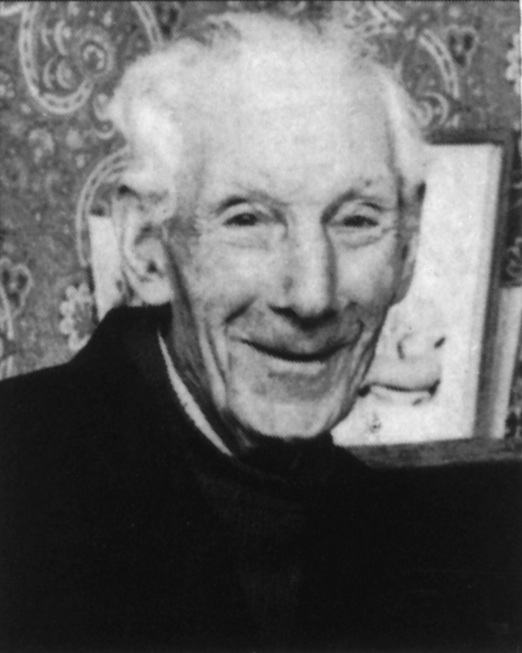
Above: Arthur Harding, born and raised in the Nichol, pictured here in the late 1970s, towards the end of his life.
Below: Arthur jacketed his autobiography, My Apprenticeship to Crime, in some left-over wallpaper; it is now held at
the Bishopsgate Institute.
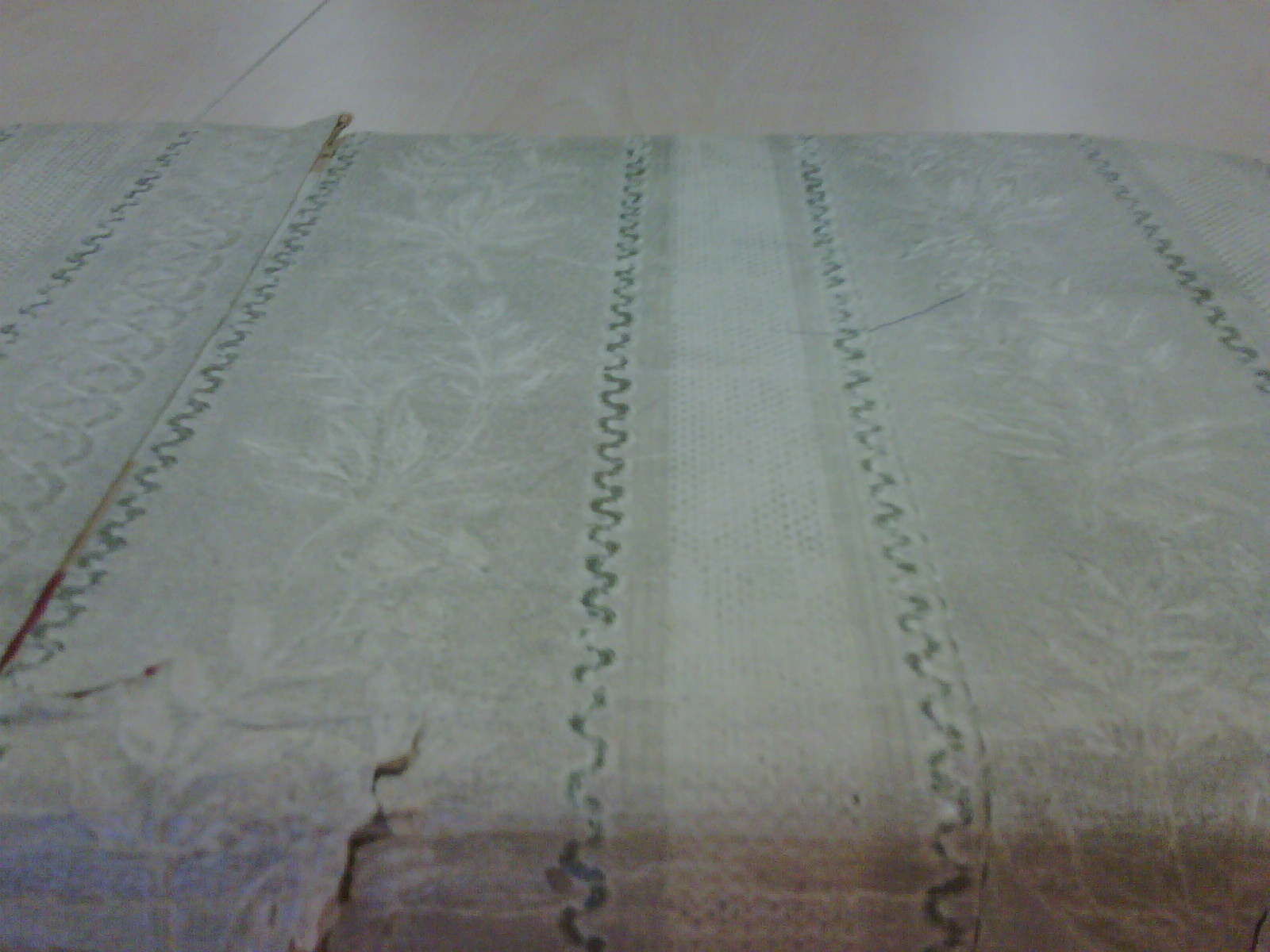
10/2/13 Growing Up Around the Bandstand (2): Len Newman
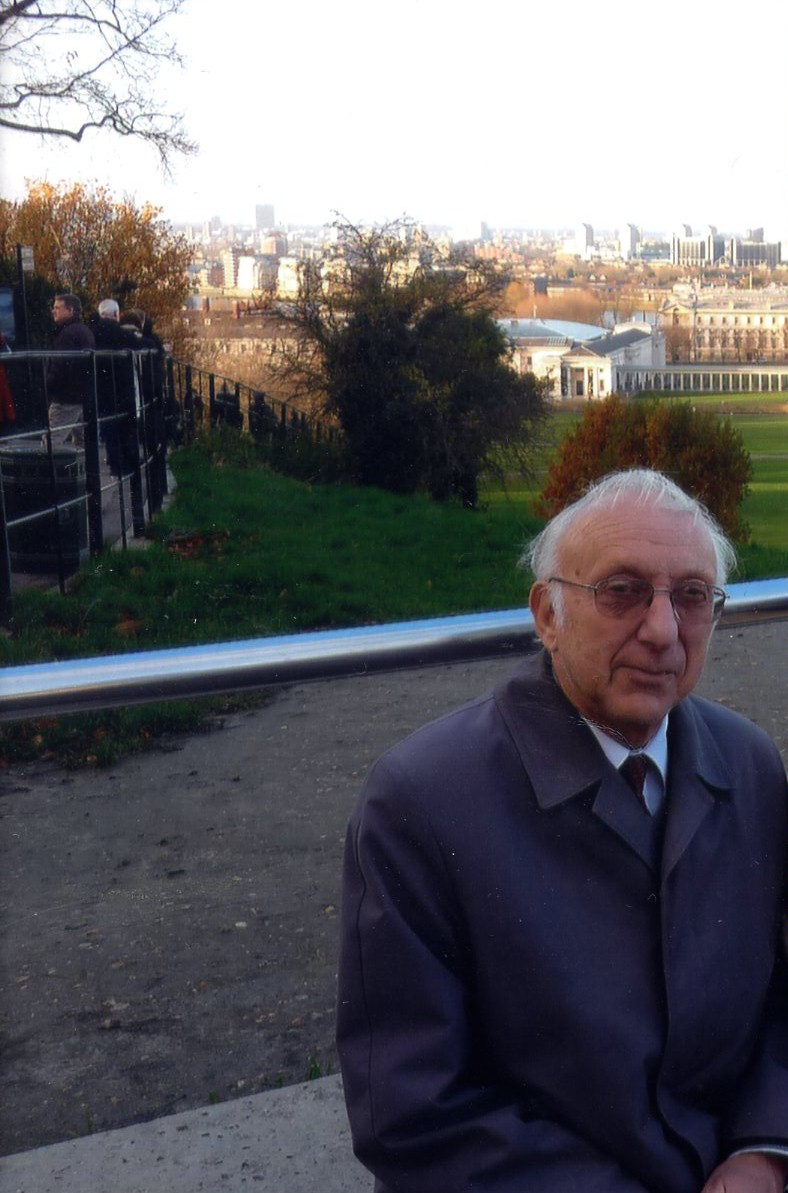
‘Dear Sarah,
‘As a child, I was a resident of “Stripeland” (a name that is new to me). Between the years 1941 and 1947, my parents and I resided at Laleham Buildings, which is not quite facing the bandstand, and I attended Virginia Road School. We had no bathrooms – my earliest baths were taken in the proverbial tin bath in front of the fire. Later on, I accompanied my father to the public baths. These, I presume, were adjoining the estate’s laundry. On a recent visit to show my family where I was brought up, the buildings look as though they have been modernised, no doubt with bathrooms!’
Len sent me this front page of the Yorkshire Evening News showing him, third from left, as an evacuee to Leeds.
.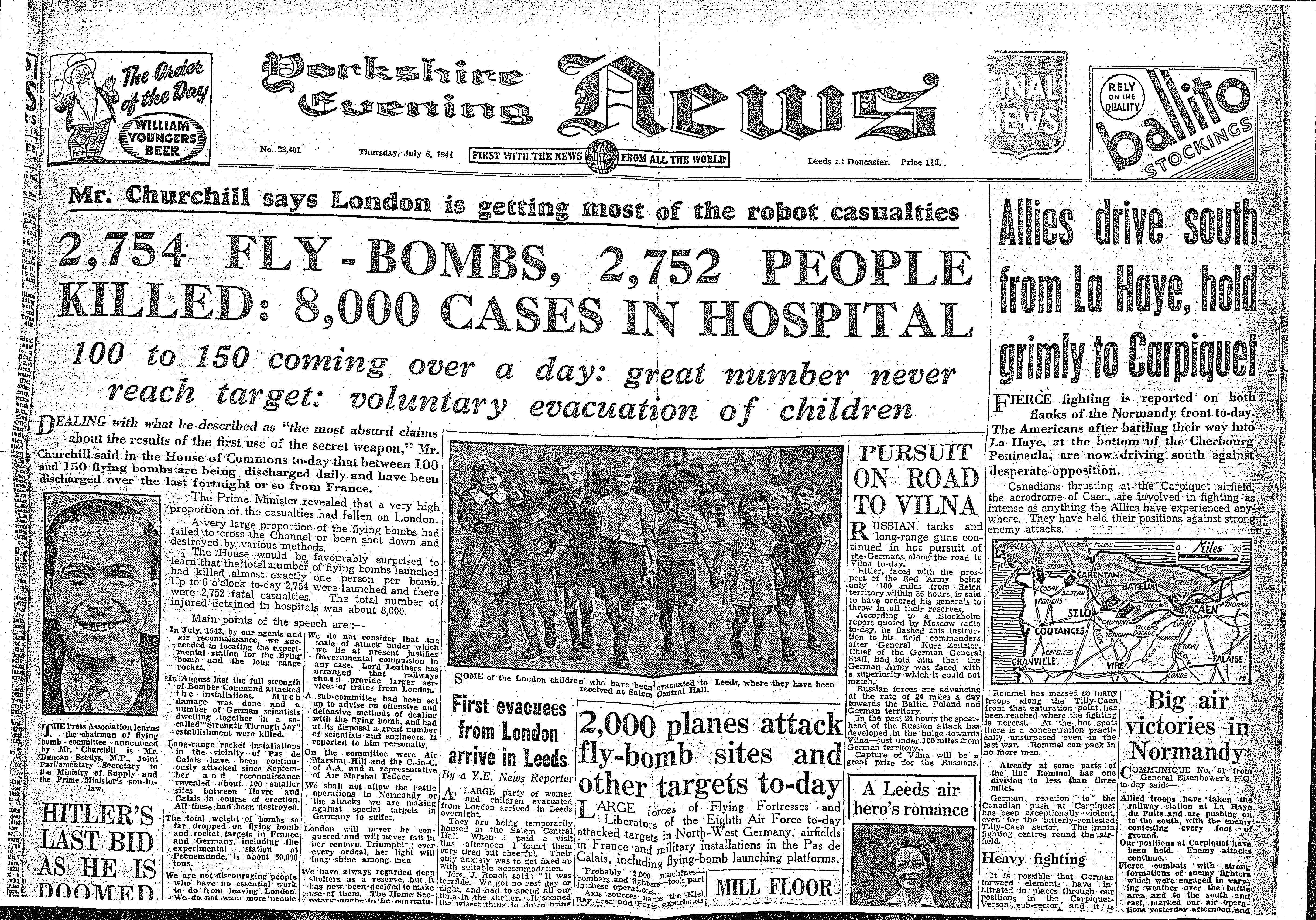
‘Dear Sarah,
‘Thank you for your letter. What do you mean “WASN’T I adorable?” – I’m even more adorable now! You asked about kitchen and cooking facilities in the flats and food in general, and I’ve got some more childhood memories:
‘Potatoes baked in their skins in the black-lead oven were a treat. Also, liver was not on the ration and an occasional luxury. Bananas were unknown until after the war, but I seem to remember a black thing that may have been dried banana.
‘We received at least one food parcel from America, containing a sweetmeat called halva. I don’t think I liked it and was probably more impressed by the American comics.
‘There was a confectionery shop next to Virginia Road School sold 1d or 2d fruit drinks, topped up with soda. They were served at an open counter, facing the street, and consumed on the pavement outside the shop. Sweets were of course rationed, but my grandmother had a substitute – cough sweets, which were presumably off the ration. They were small red sweets of a hard jelly, covered with sugar. These were purchased at Mr Shapiro’s shop, at the Bethnal Green Road end of Brick Lane.
‘I also remember the chicken soup, served with kneidlach (matzah balls, or “Jewish cannon-balls”) that was served every Friday. I had the flugel (wings) as a main course; the heart, liver and kidneys (pinick) were treats. I did not fancy the feet or forgle (windpipe) but stuffed neck was a favourite. In short, nothing was wasted. I also remember bread spread with hardened chicken fat (schalch), although the thought makes me queasy now, as does calves’ foot jelly. I think the word “jelly” made the impresion on me – the “calves’ foot” just didn’t register. I have no idea of its purpose. In the war years, bread was made with unrefined flour and my father would often speak with nostalgia of the pure white pre-war bread, which I had never seen. Now, of course, wholemeal bread is considered the healthy option.
‘Holy Trinity Shoreditch in Old Nichol Street was bombed in the Blitz of May 1941. I remember us kids playing in the crater – I recall the fleas and the prayer books.’
8/2/13 Growing Up Around the Bandstand (1): June Lewzey
June was a child on the Boundary Street Estate during the Second World War. Her father, Archie Guiver (1909-2007), was the local ARP warden, and in 1939 he put together the amazing hand-drawn map (below) of the streets immediately to the south of the Estate, to help him on his patrols. June wrote to me that ‘it is a pretty unique record because many of the buildings shown here were razed to the ground during the Blitz. We children used the bombed sites as our playgrounds.’ It is a fantastic memorial of the local businesses and shops, and also shows where all the much-needed fire hydrants were located. The cabinet-making and other woodworking trades (which had been a feature of the Old Nichol since the late 17th century) are also still very much in evidence at this date; and Vavasseur’s silk manufactory, significant in the life of the Nichol, was still in business, at the corner of Swanfield Street and Old Nichol Street, to where the London County Council had relocated it when the Nichol was demolished.
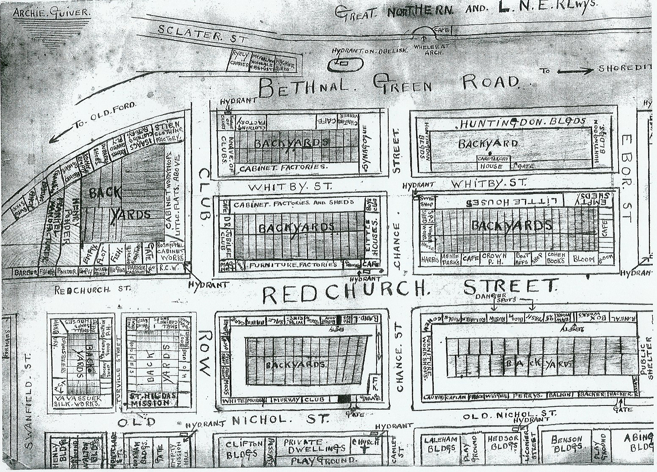
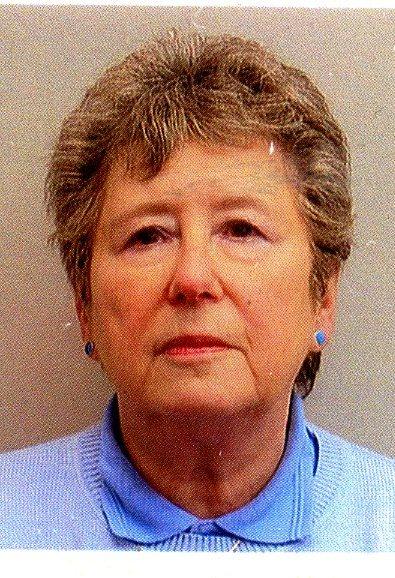
June, above, and her father, Archie, below, in Sicily during World War II
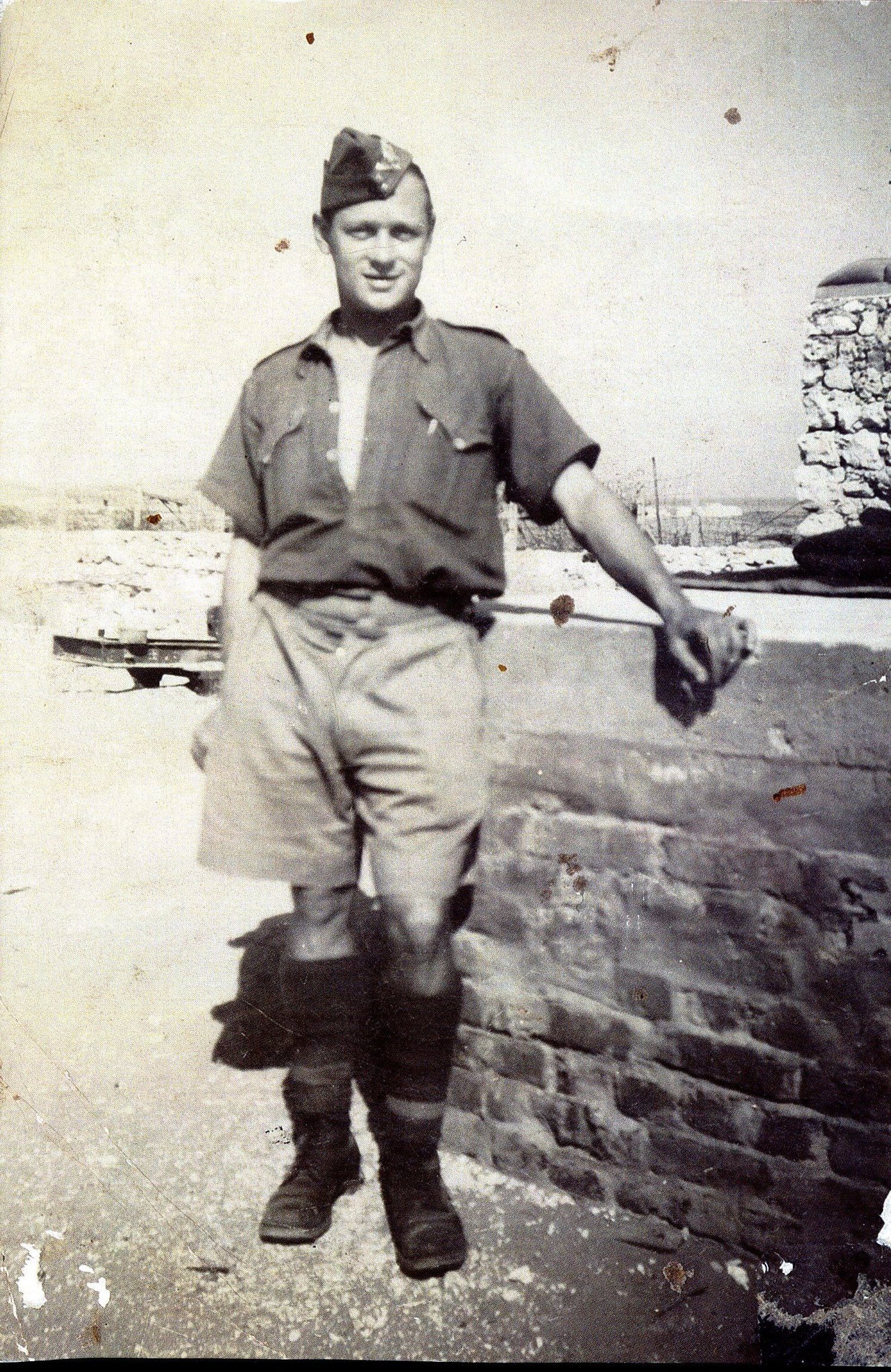
June has stayed in contact with childhood friends from Bethnal Green: ‘Some of us Golden Oldies who grew up on the Estate during the 1940s often share memories of what we all consider to have been one of the happiest times of our lives. On the estate, we were a mixed bunch of Christians and Jews, and none of us can remember prejudice of any kind. Neighbours always looked out for us kids, especially if fathers were away during the war.
‘We never went hungry, and if I came home from school and my mother wasn’t in, one of the neighbours would make sure that I had a piece of bread pudding or cheesecake to keep me going. My Catholic friend’s mother made lockshen soup because she’d been taught to cook by Jewish neighbours. We bought our bread from Kossoff’s in Calvert Avenue, and from Zaggers and Schacters in Redchurch Street.
‘My maternal grandmother, Ellen Golding, was born in 1879 at 5 Vincent Street in the Old Nichol and was baptised in the “church in a stable”.’ (Pictured below, Holy Trinity Shoreditch was sited in a loft above a stable in Old Nichol Street, until 1887, and the building of a magnificent new church. This new Holy Trinity would itself be destroyed in the Blitz of May 1941.)
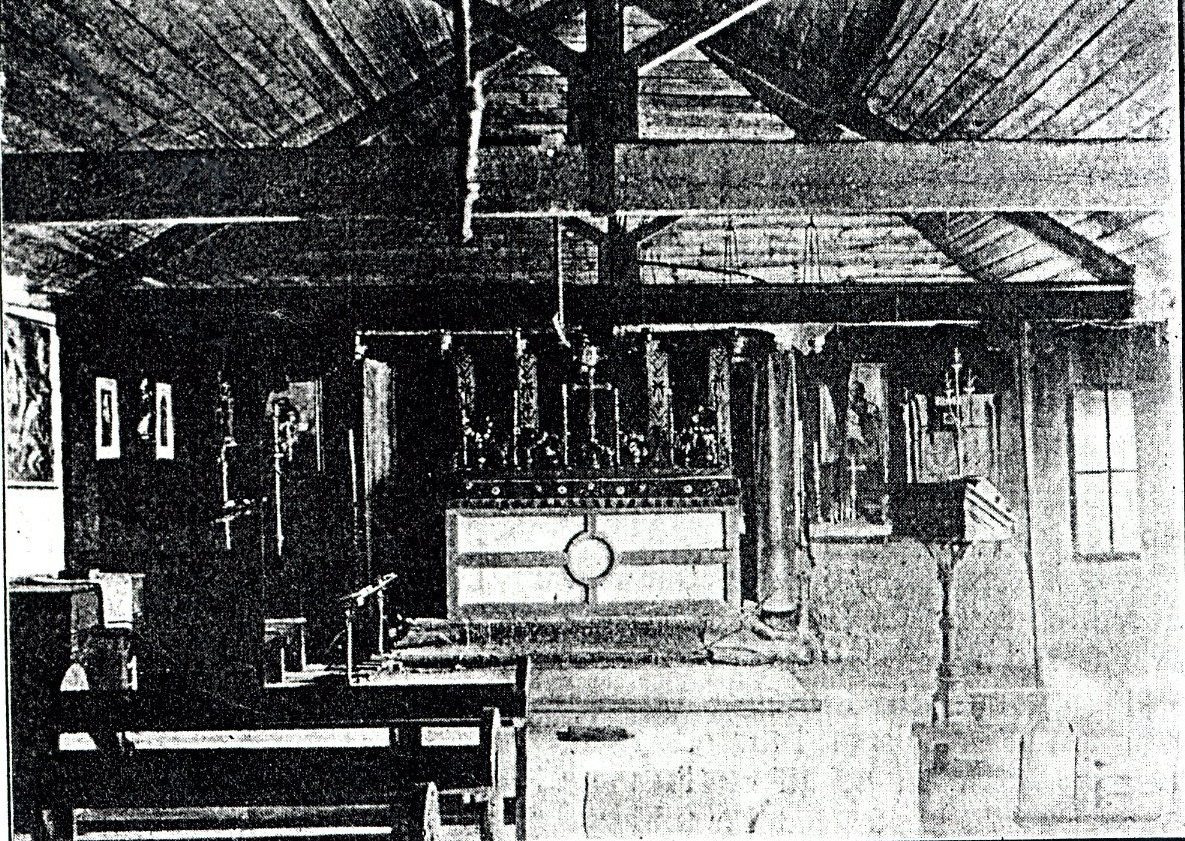
‘There were also Goldings at 56 Old Nichol Street at that time. My grandmother and her parents didn’t stay long in the Old Nichol, though, because within two years they were living at the other end of Bethnal Green – and there they stayed. But my grandmother often visited us when we were living in Abingdon Buildings on the estate: we were quite unaware at that time that she had been born just a few hundred yards away.
‘We lived at Abingdon until I was twelve, except for a couple of months during World War II. My father arranged for my mother, sister and I to go to Devon after a particularly bad air-raid, when we fled to the crypt of St Leonard’s church. My father carried me, and my mother carried my sister, Joan, and everywhere around us seemed to be on fire. However, when my father went abroad with the Royal Artillery, my mother decided that home was best. Some of the ground-floor flats on the estate were fortified as air-raid shelters but they were rarely used. Dad fought in the Middle East, Sicily and Italy. Years earlier, he’d fought at the battle of Cable Street, to prevent Moseley and his fascists marching through the East End.
‘When my father moved us to a house in the “green and pleasant suburb” of Chingford, my mother, sister and I hated it: we felt like fish out of water. At Abingdon Buildings, we had been surrounded by friends and family in an atmosphere of love and warmth.’
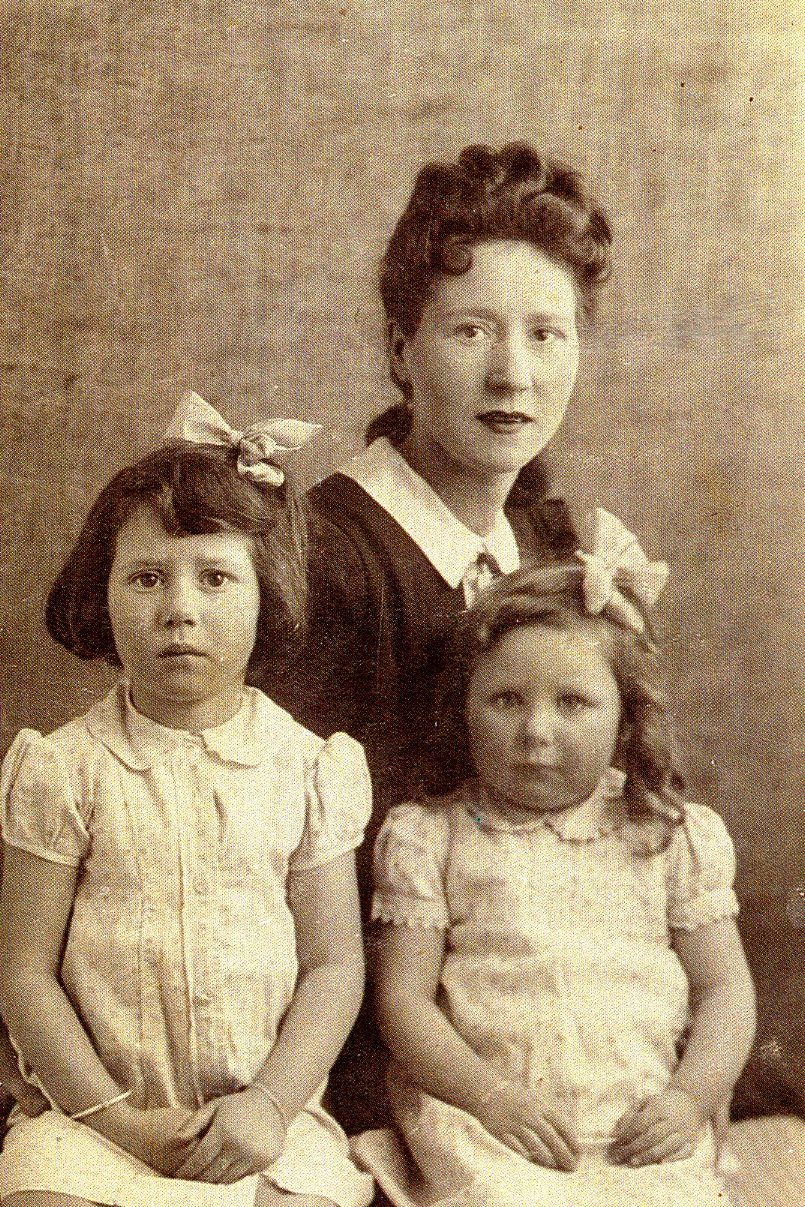
Above: June (left) with her mother, Ellen Guiver, née Downes, and sister, Joan.
Below: Ellen Golding (far left), born in the Old Nichol in 1879; (far right) her daughter Ellen, with June and Joan,
photographed outside Abingdon Buildings on the Boundary Street Estate in 1943.
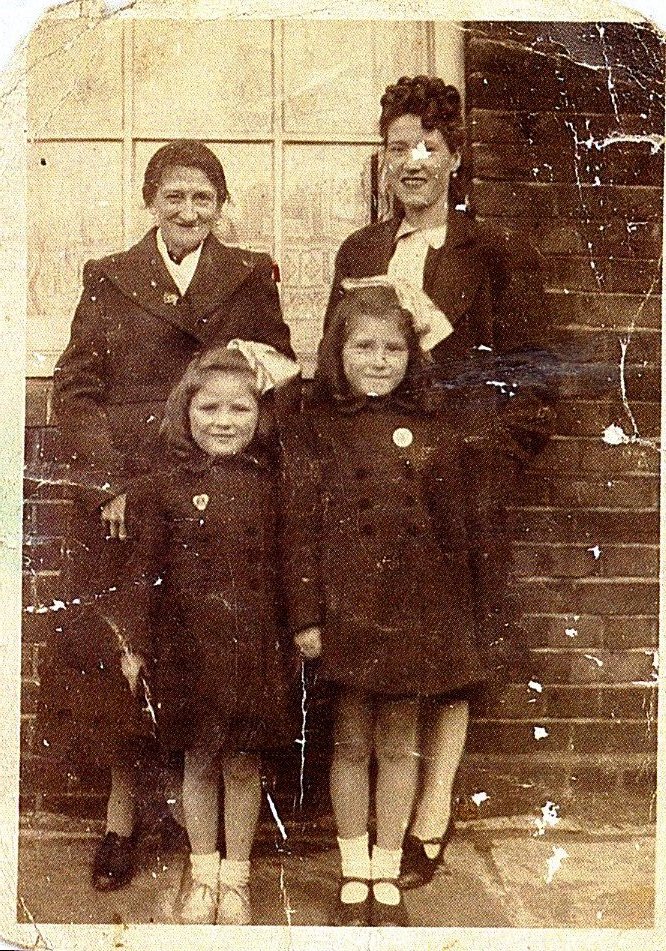
30/1/13 Boundary Street, The Movie
.
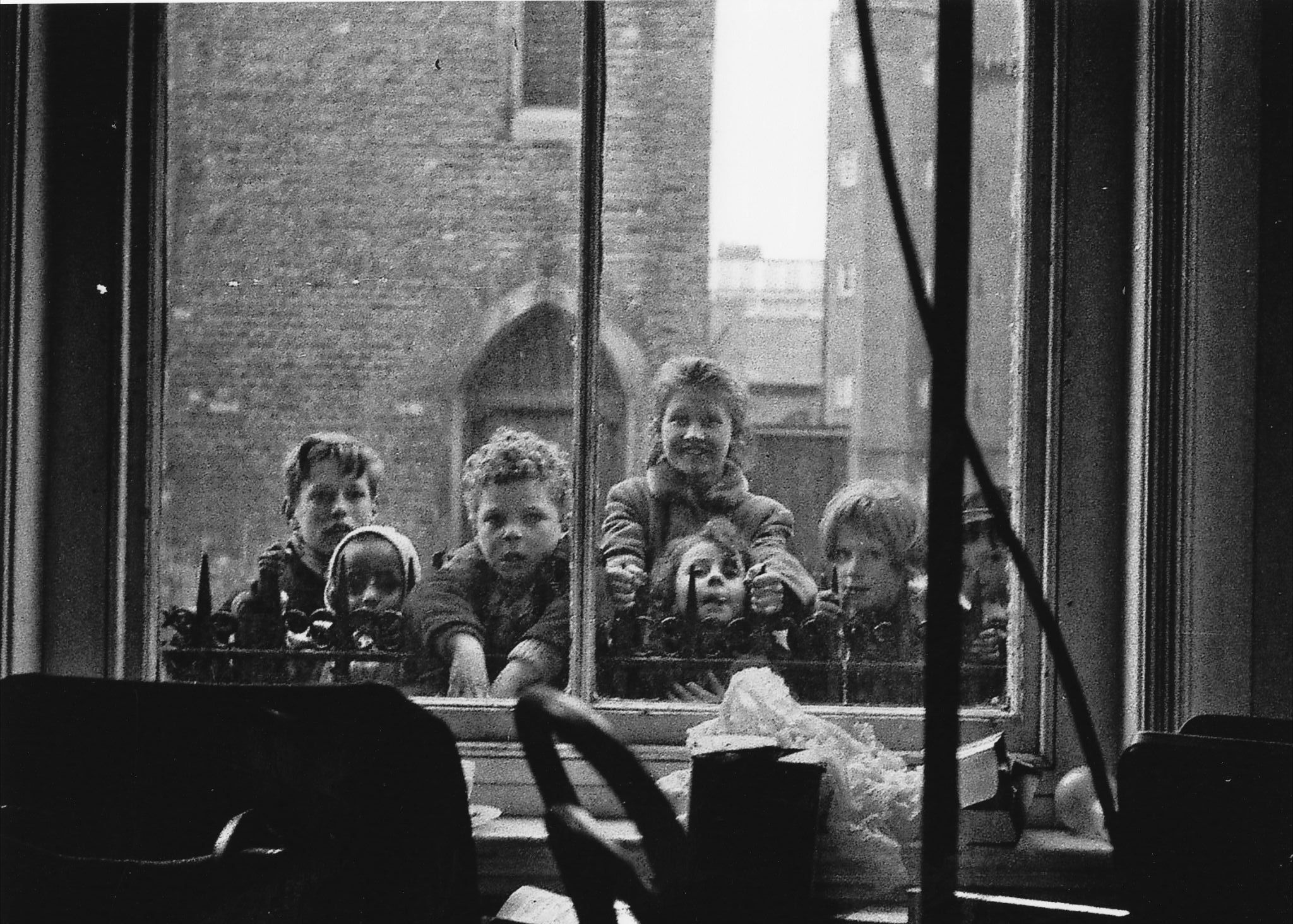
In 1957, BBC film editor John Hall was asked by the warden of St Hilda’s East, the Boundary Estate community centre, to make a film about the centre’s work and life on the estate. John’s documentary, St Hilda’s East, captures this part of the East End at a point of great change and as the buildings of the London County Council estate were becoming badly dilapidated; refurbishment was still years away. Here, John (pictured below) recalls the making of his film.
‘I had no knowledge of social work or indeed of Bethnal Green when I first met the warden, Miss Hunt. I asked her a very naive question – namely, why, with the (relatively new) Welfare State, was St Hilda’s East still needed? “We are,” Miss Hunt replied, “the oil between the grindstones of the Welfare State and the conditions under which people are living.” It was clear that I had a lot to learn.
‘At the time, I was working in the BBC Television Film Unit based at the Lime Grove Studios at Shepherd’s Bush, so my research into the work of St Hilda’s East took place at the weekends or in the evening. However, I was soon able to build up a picture of the range of activities the centre offered, the people who supervised them and the people who made use of them.
‘My memory is of an institution which was in essence a place of calm, providing practical help and assistance to the community around it. This help included the regular club for older people, which brought companionship and often an escape from loneliness. [The picture, below, of the sing-song at the piano shows Miss Hunt, standing, with some of the elderly ladies.] The club for young people provided not only entertainment in the form of discos but also a place to talk about the issues of growing up, finding their way into work and forming relationships. As much as anything, it seemed to me that the community centre was a place where young people were taken seriously. The discussion group was particularly impressive – the gentle comments and questions put by the group leader helped the participants to clearly articulate their ideas and opinions.
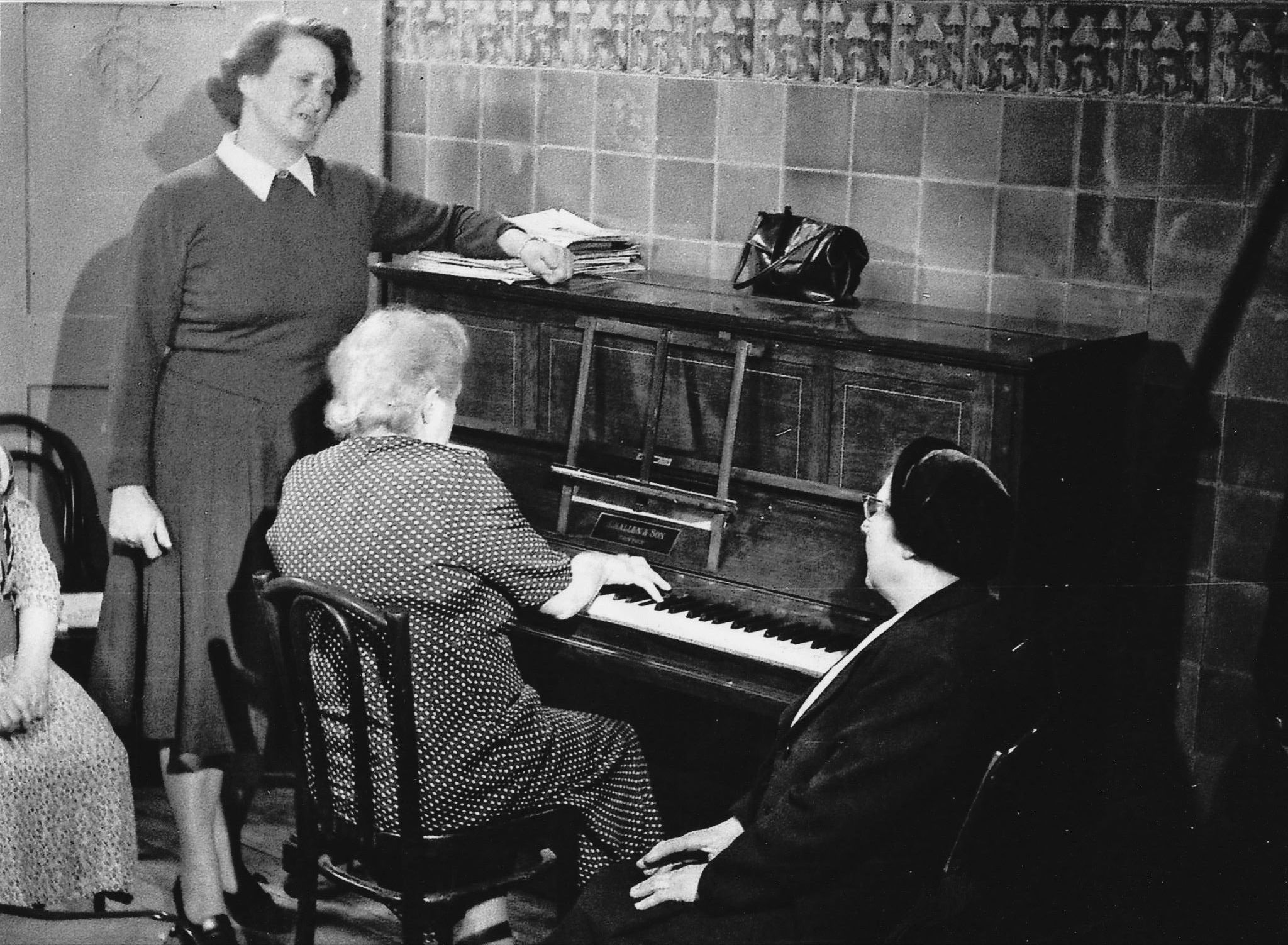
‘The darker and more difficult side of Bethnal Green was to be found in the old tenement blocks, which housed hundreds of families in squalid accommodation. My film contains a sequence about one such family, who had effectively cut itself off from the community around it. The reason for this isolation was not entirely clear, but the warden felt it was probably a combination of a difficulty in communicating and a sense of shame at the conditions in which they lived. St Hilda’s East had patiently built up a connection with the family through one of their social workers, a lady from Holland, who had managed to gain the trust of the family. She was a remarkable person, with an impressive clarity of expression, and kind and wise. Through her, I was able to gain the family’s agreement to be filmed.
‘The technology of filming in the 1950s was a great deal more cumbersome than it is today and so the intrusion was that much greater. My colleagues and I went to some lengths to try to minimise the intrusion while trying to convey the family situation without destroying the trust which the family had in St Hilda’s East.
‘I felt it was important that the filming should show situations as they happened, rather than impose a detailed scenario. Inevitably, the arrival of a film crew with cameras and lights does tend to create an artificial set-up. However, it was good to see that after only a few minutes, and providing there were no interruptions, those being filmed seemed to forget we were there.
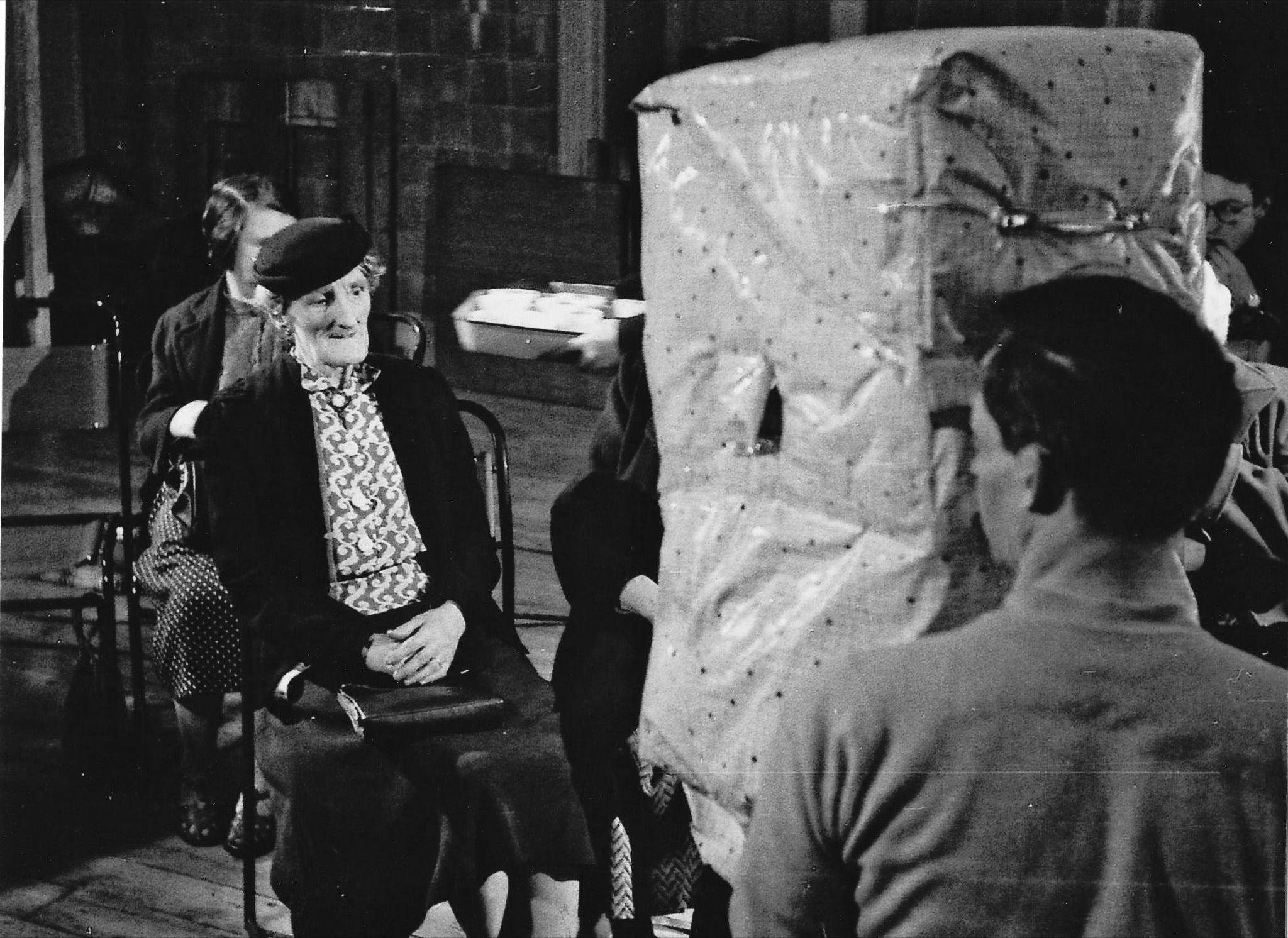
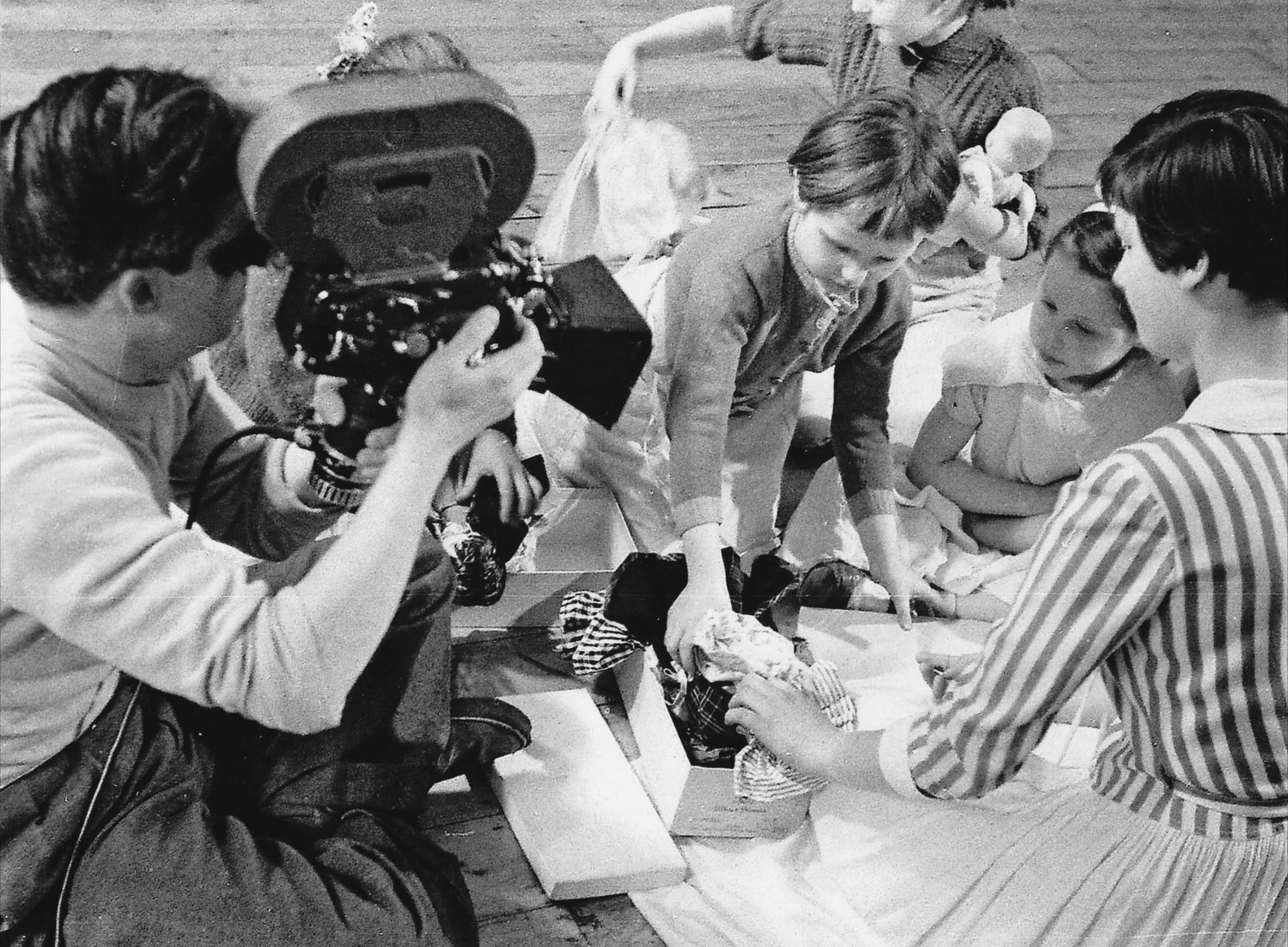
‘The ability to capture material “as it happens” required a good deal of skill back then, and tribute is due to the two cameramen who gave their services for no payment: Alan Forbes, a young American freelance, and Neville Calderwood, then an assistant cameraman with the BBC Film Unit.
‘The short sequences which open and close the film were shot at Cheltenham Ladies’ College [which had founded the original St Hilda’s back in the 1890s] and were filmed one morning at assembly and between lessons later in the morning. The bond was still strong at that point between the College and the community centre. Again, we simply positioned ourselves and filmed events as they happened. .
‘St Hilda’s East only had £200 to contribute to the film, which was a fraction of the usual cost of a documentary film. So what could be done to bridge the gap? Most documentary films were still being produced on 35mm cinema film, while more expensive 16mm film, used by amateur film-makers, was relatively new to the professional. The route I took to solving these financial problems was a shameless one of exploiting friends, colleagues and my work situation. A major cost problem, that of purchasing the 16mm film stock, was solved by the generosity of admin staff at BBC Ealing Studios kindly providing quantities of stock free of charge.
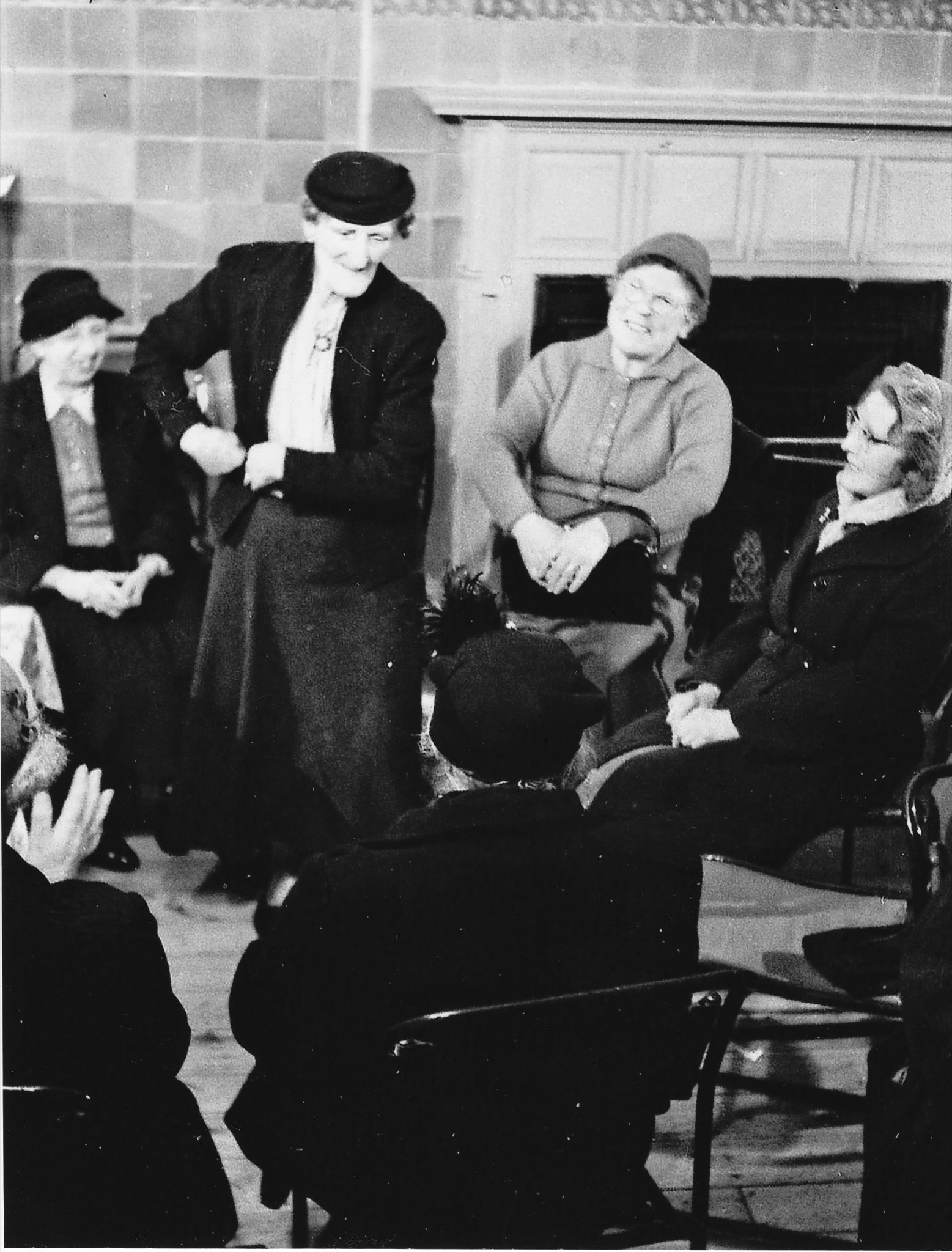
‘It was an exciting time to be working in television, which had re-started after World War II with a very limited service. When I joined, BBC Television Centre was still on the drawing board, and the studios, production offices and editing rooms were at Lime Grove, the news services were at Alexandra Palace and the BBC Film Unit was at Ealing Studios. The numbers of people employed were not large and there was something of a family atmosphere. I also knew a good many freelance technicians in the documentary film industry. Through all these connections, I was able to build up a team who were prepared to give their services for no payment. In addition to Alan and Neville, film editor Michael Tuchner spent evenings in his cutting room at Lime Grove assembling the footage.
‘I delivered the completed film in early 1958. Shortly after that, I went to work in the United States and on my return I joined the Central Office of Information (COI). I stayed there, becoming director of the films and television division, before retiring in 1988. During all that time, and across a couple of house moves (I’ve now settled in Cornwall) I never looked at the documentary; but in 2007 I decided to have it copied on to DVD format, and I sent copies to the present director of St Hilda’s and to the principal of Cheltenham Ladies’ College. They both received it with enthusiasm.’
The black-and-white stills from the film were all shot by Michael Flegg. DVD copies of St Hilda’s East are available to purchase for £10 (inc p&p). Send a cheque to Ashraful Haque, St Hilda’s East Community Centre, 18 Club Row, London, E2 7EY. email: mail@sthildas.org.uk Tel: 020 7739 8066.
24/1/13 That Trying Locality. . .
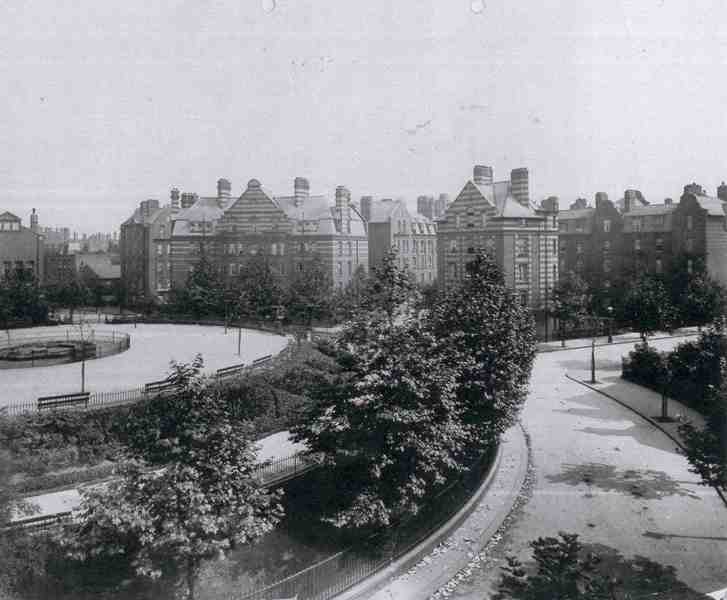
Internal memo, London County Council, regarding the creation of the Arnold Circus raised garden on the Boundary Street Estate, built upon the site of the Old Nichol.
14 October 1896
From Mr Sexby, of the Parks and Open Spaces Sub-Committee, to the Housing of the Working Classes Committee:
‘I propose to employ ivy rather largely on the upper slope, in conjunction with such small evergreens as may be expected to flourish in that trying locality. On the lower slope I should introduce somewhat larger evergreens and deciduous shrubs. Around the edges I propose to plant 25 plane trees. I think the effect of this planting in conjunction with the grass banks will be pleasant, although I must warn the committee against expecting too much. The situation of the ground in that locality and the draughts from the converging streets will be unfavourable to plant growth. I have authorised the delivery of 80 loads of good soil from the Mill Fields, Hackney.’
Mr Sexby was quite right: the hillock had been created mainly out of household rubbish and the spoil of the Nichol demolitions. Tons of good Hackney earth had to be brought in so that the saplings could grow into the mature trees we see today.
The fantastic picture above was taken one Edwardian summer morning; it has to have been before 1910, as the bandstand was not erected until that year. The image is part of a collection held at the London Metropolitan Archives in a box with the shelfmark 28.75 BOU, containing photographs of the Estate from its inception right the way through to the 1970s.
London Metropolitan Archives, 40 Northampton Road, London EC1. Tel: 020 7332 3820
www.cityoflondon.gov.uk/things-to-do/visiting-the-city/archives-and-city-history/london-metropolitan-archives/visitor-information/Pages/default.aspx
14/1/13 Praise from Peston
In the Sunday Telegraph Books of the Year for 2008, Robert Peston liked my book. But I didn’t have a website then, so couldn’t trumpet it.
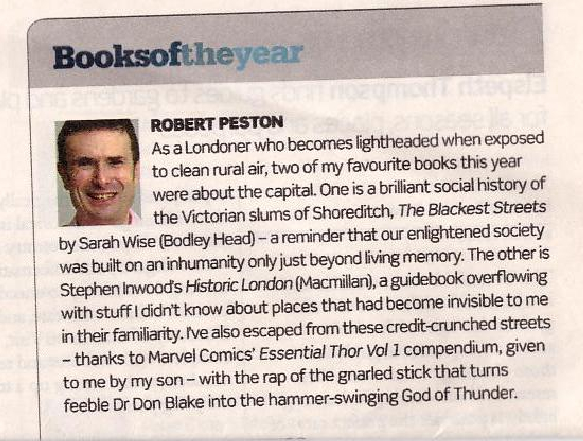
12/1/13 Cardboard City
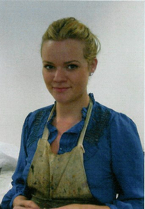
For her degree show, London Metropolitan University fine art graduate Anna Hamilton constructed a three-dimensional version of the Old Nichol. Anna lived for several years in Sclater Street, Bethnal Green, and became fascinated with the area and its past. After reading The Blackest Streets, she decided to recreate the Old Nichol as an installation called ‘Slum’. ‘I wanted to give my slum dwellers something they would never have had – Victorian luxury. Using pencil and watercolour, I created a comfortable home that the inhabitants of the Nichol deserved but could only dream of.’
See more of Anna’s printmaking, aquatints, mixed-media and architectural modelling work at www.annahamiltonart.co.uk
